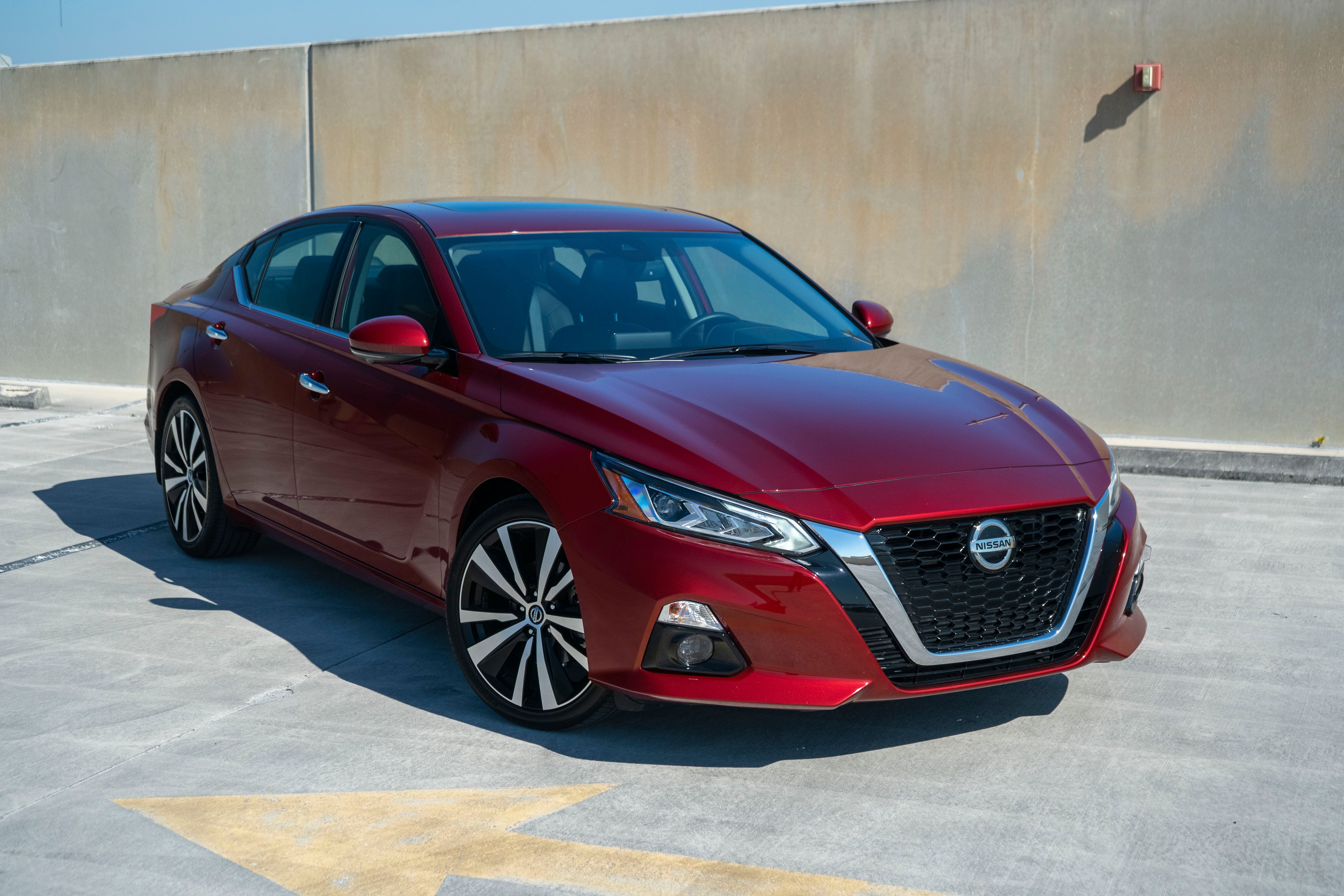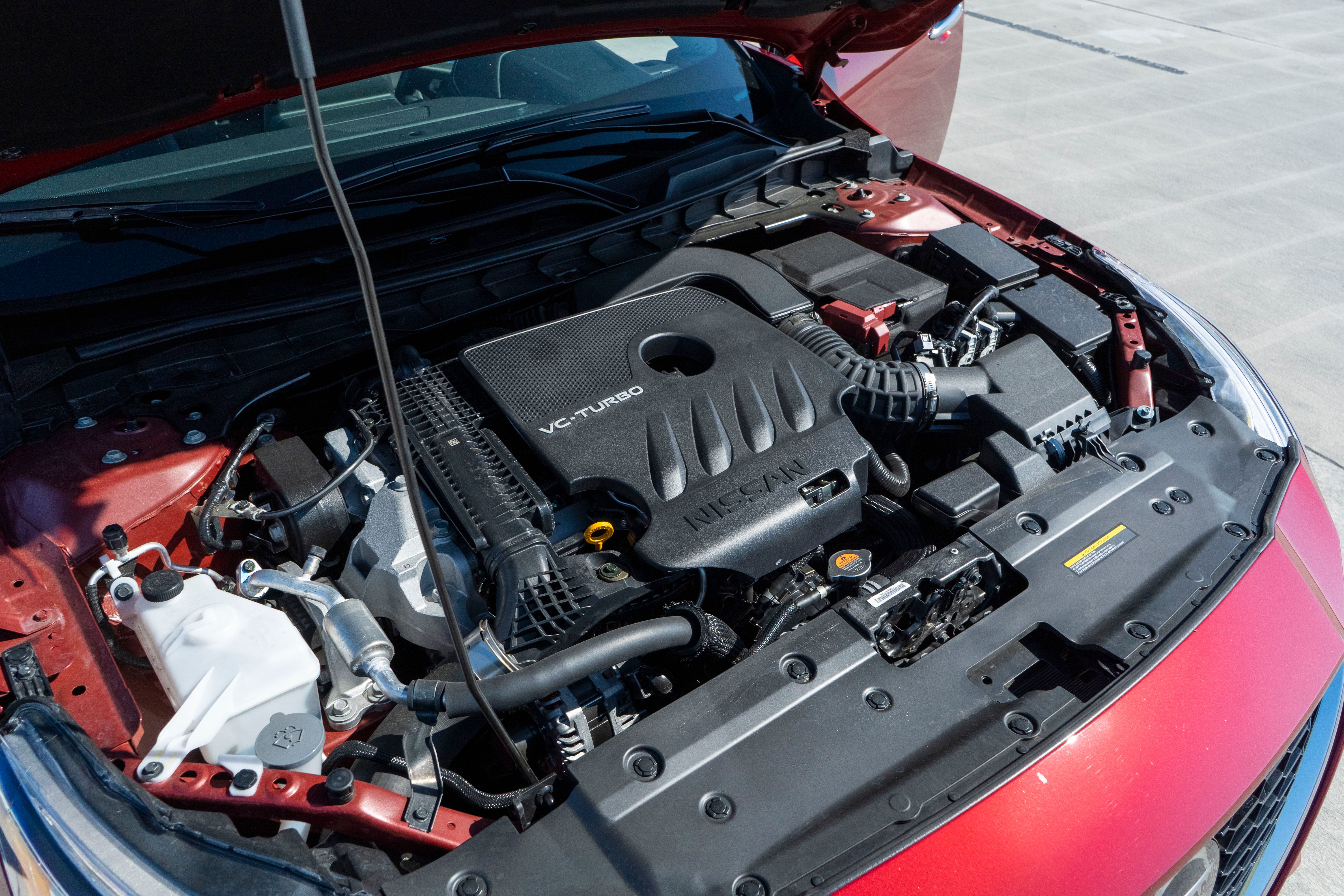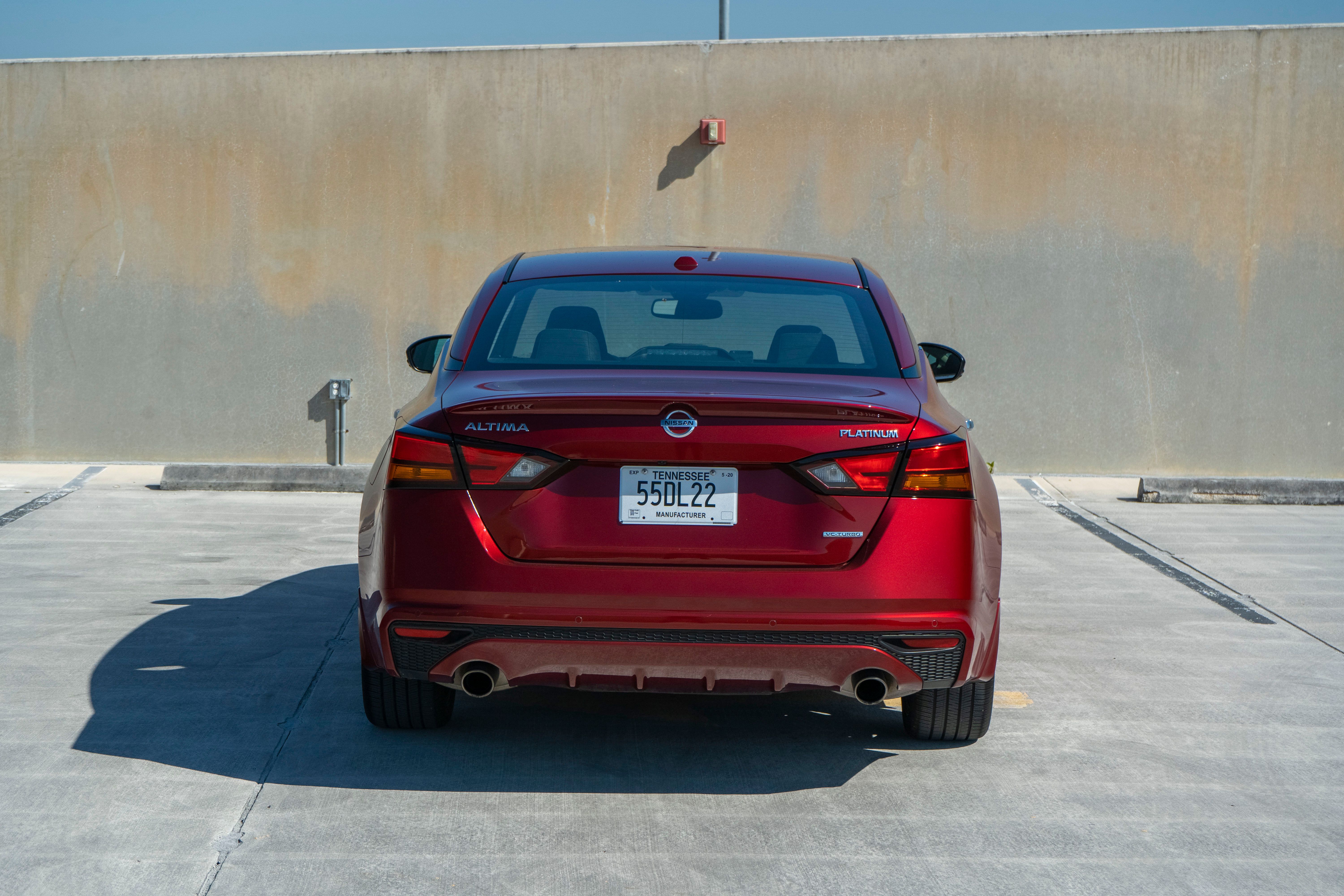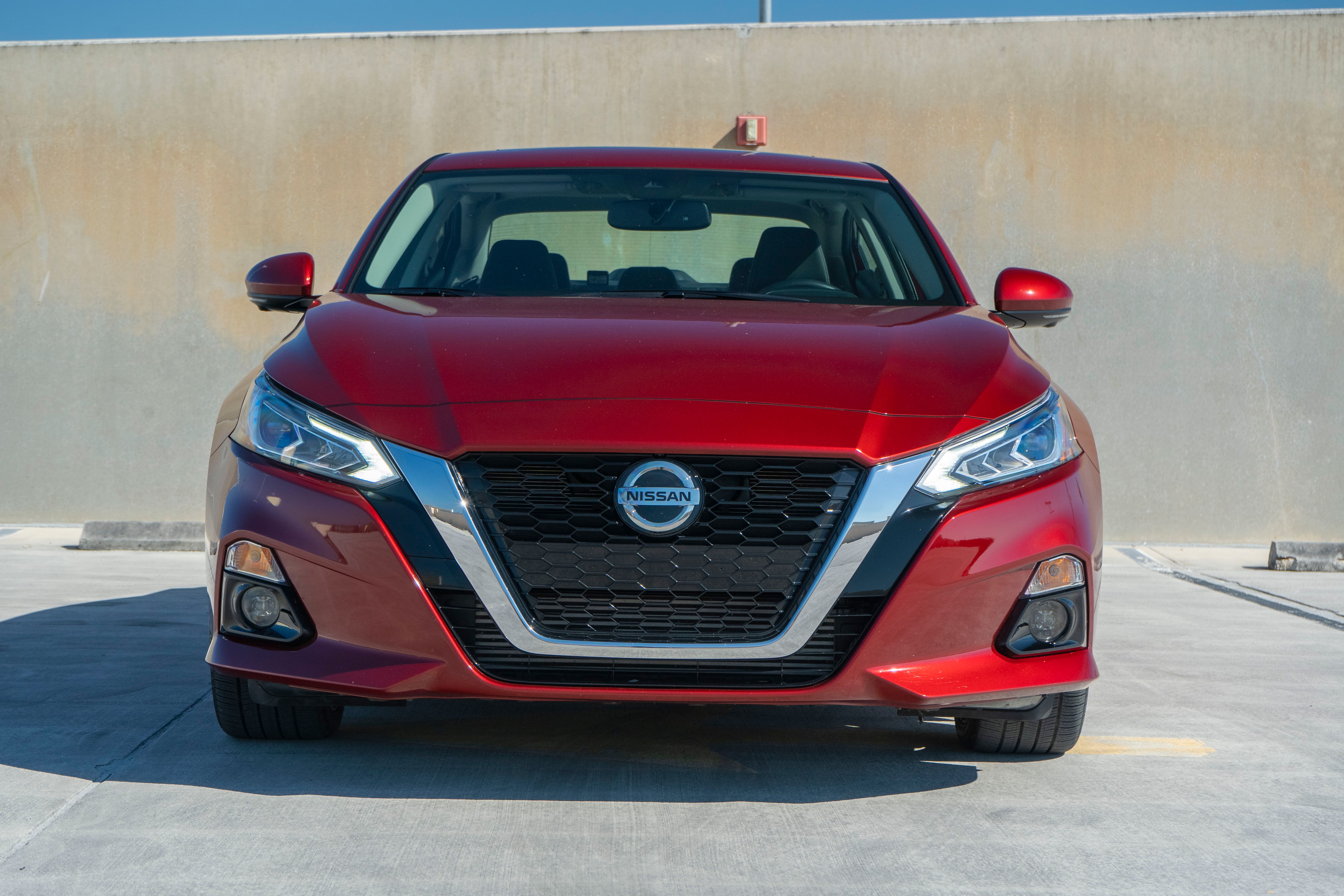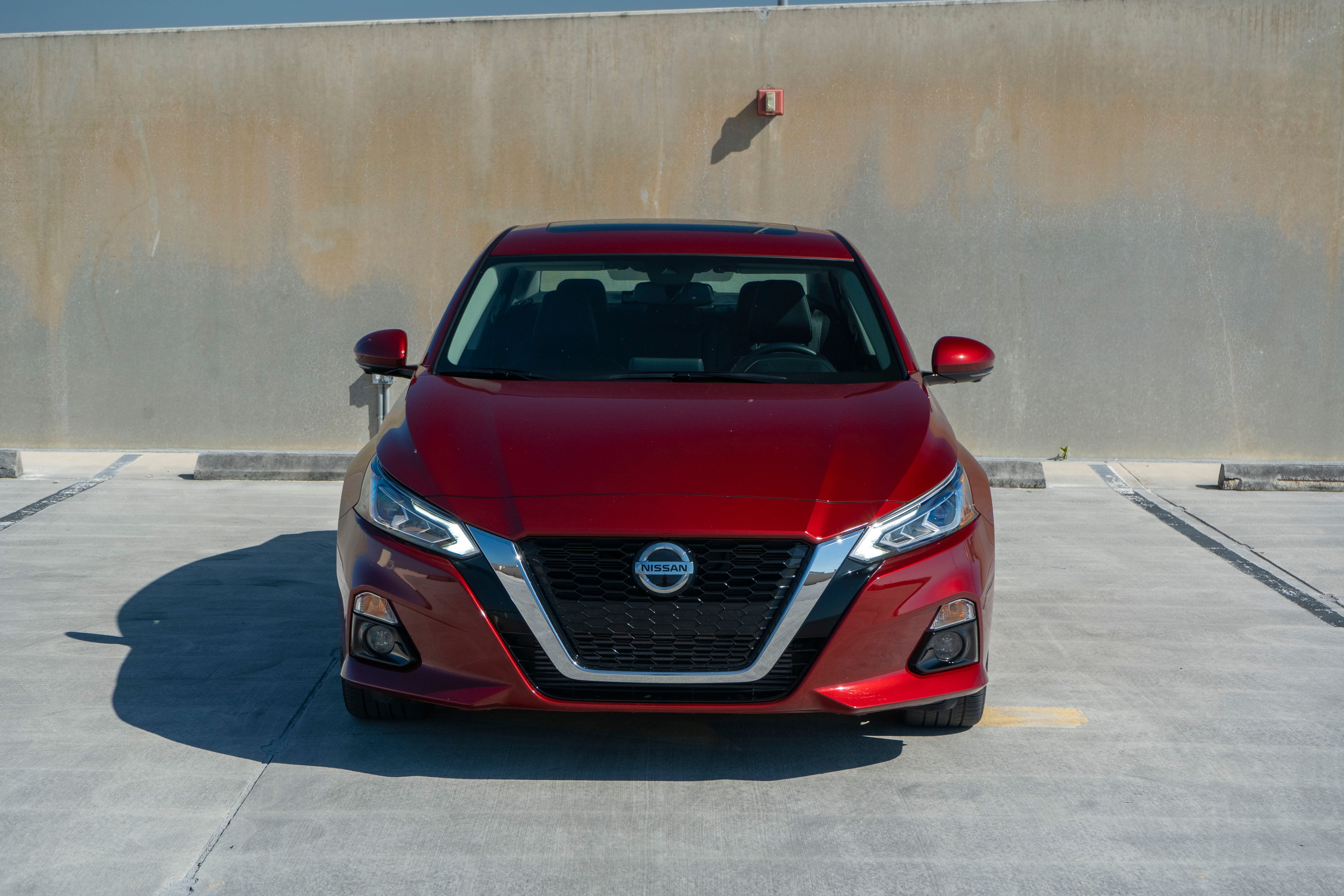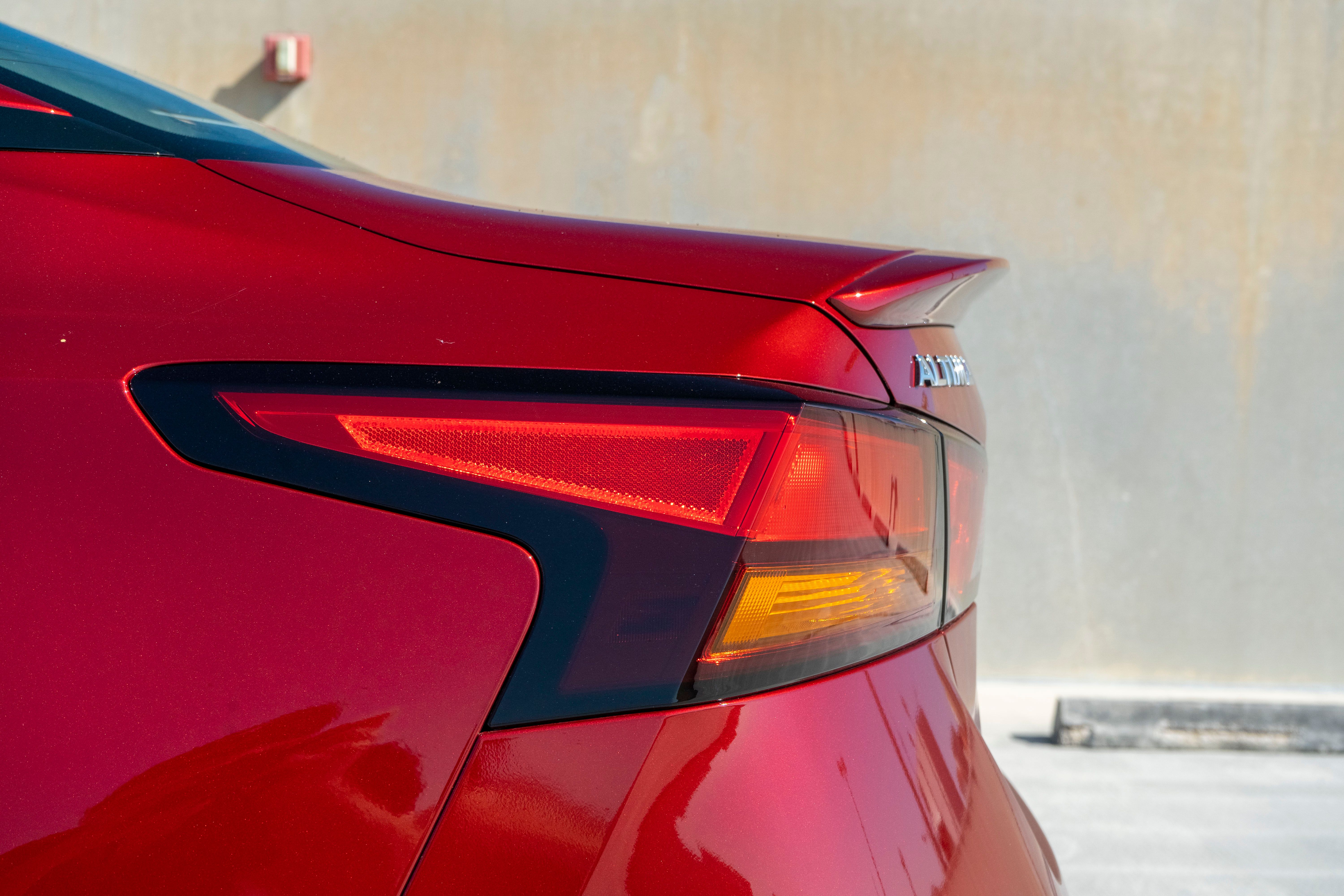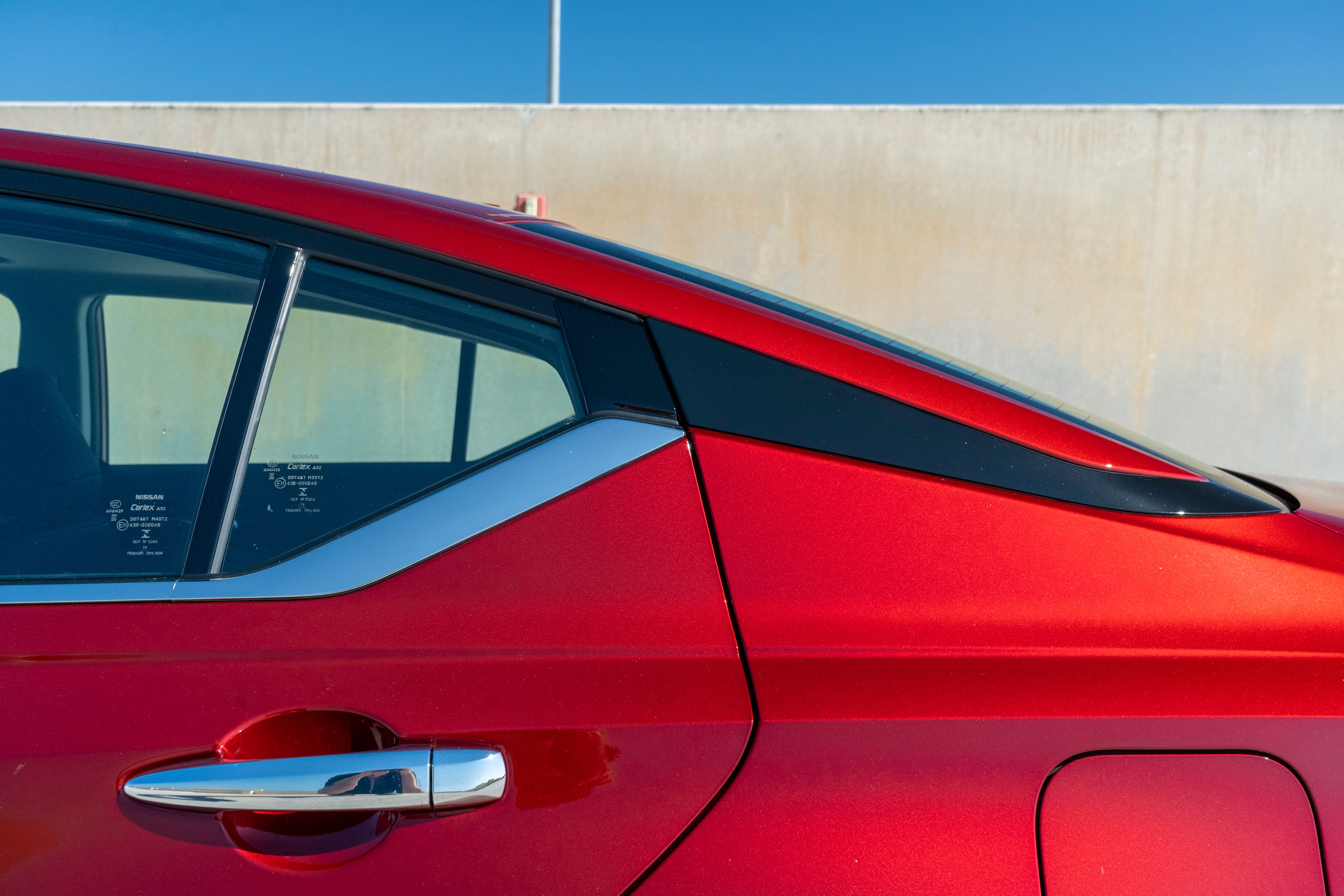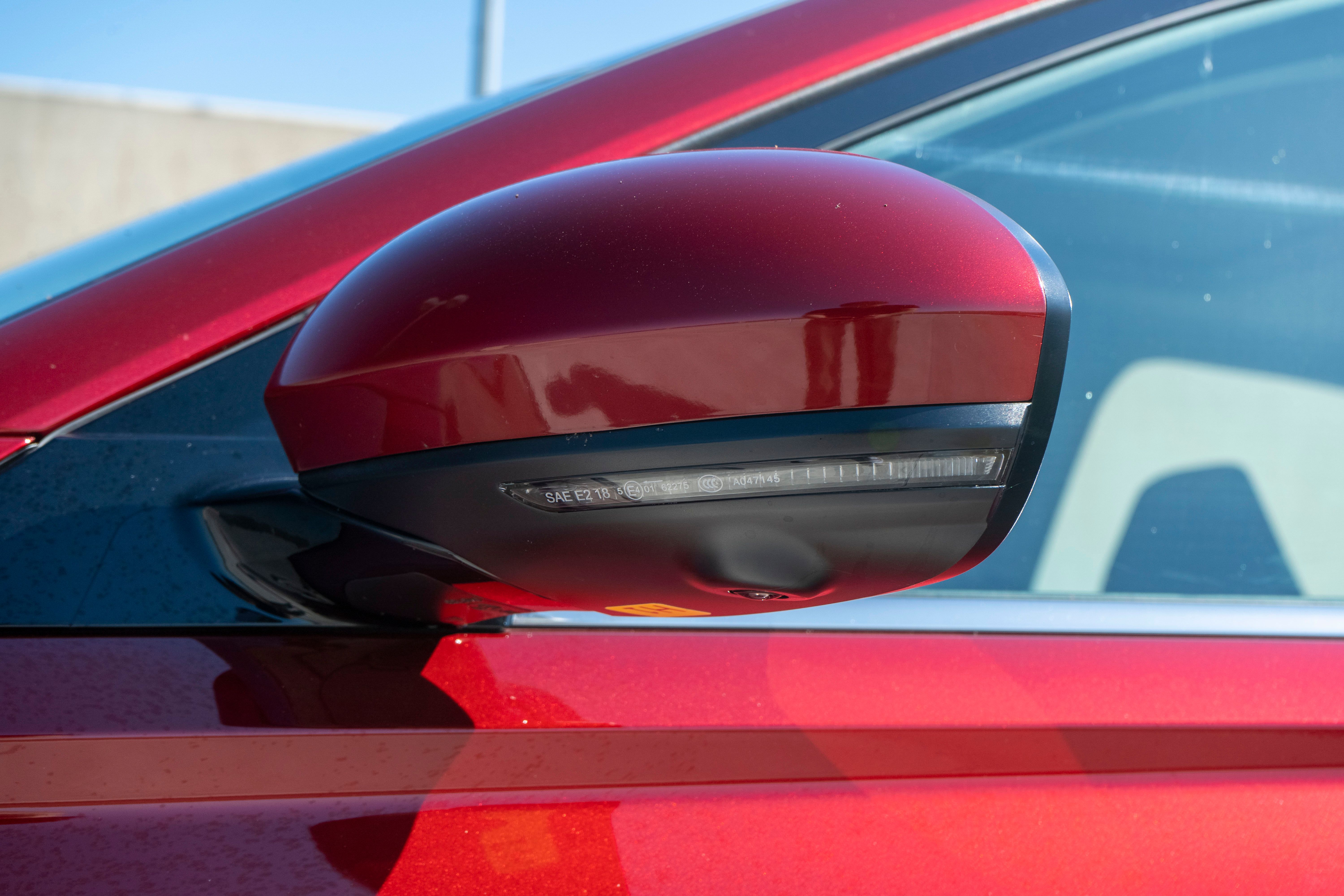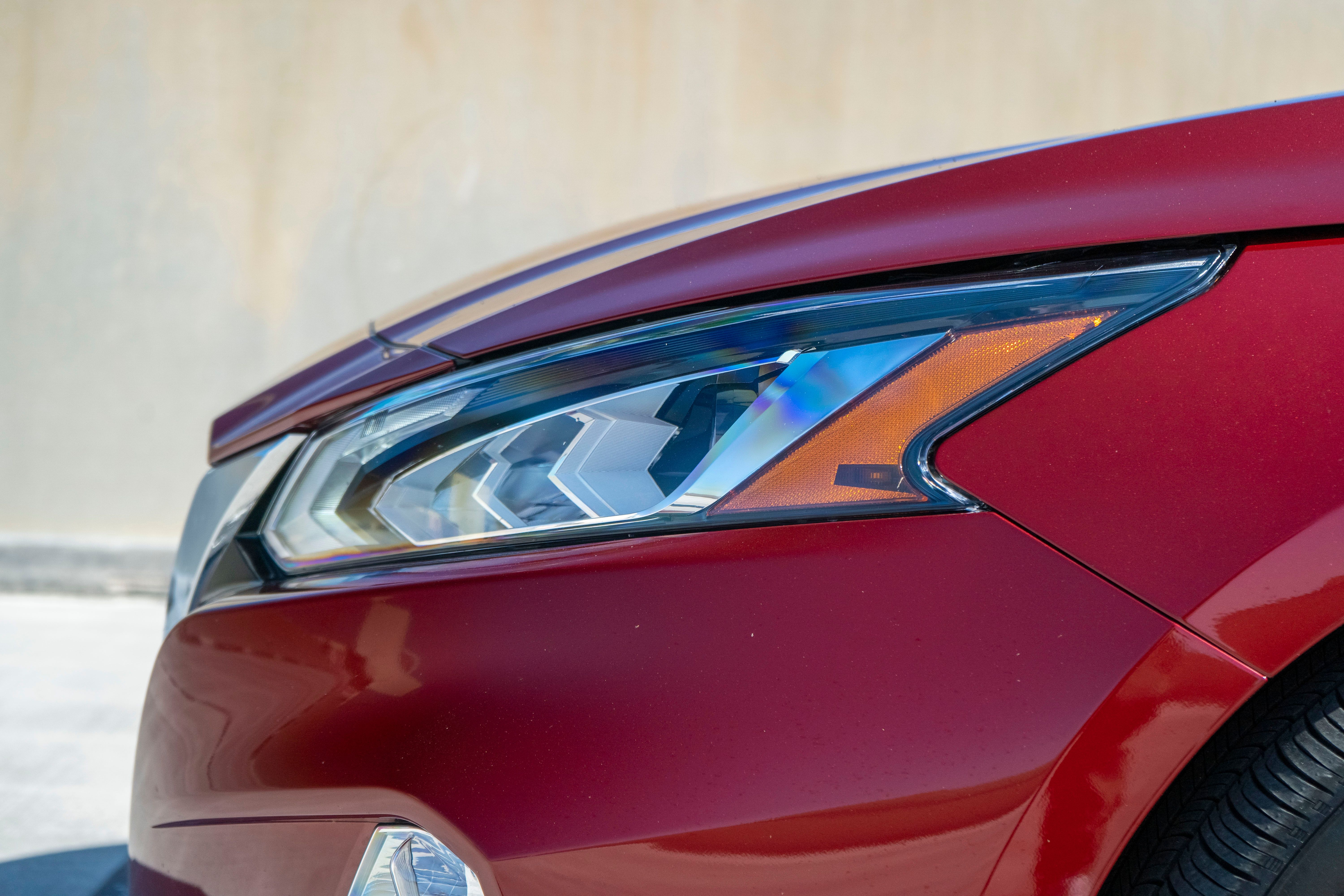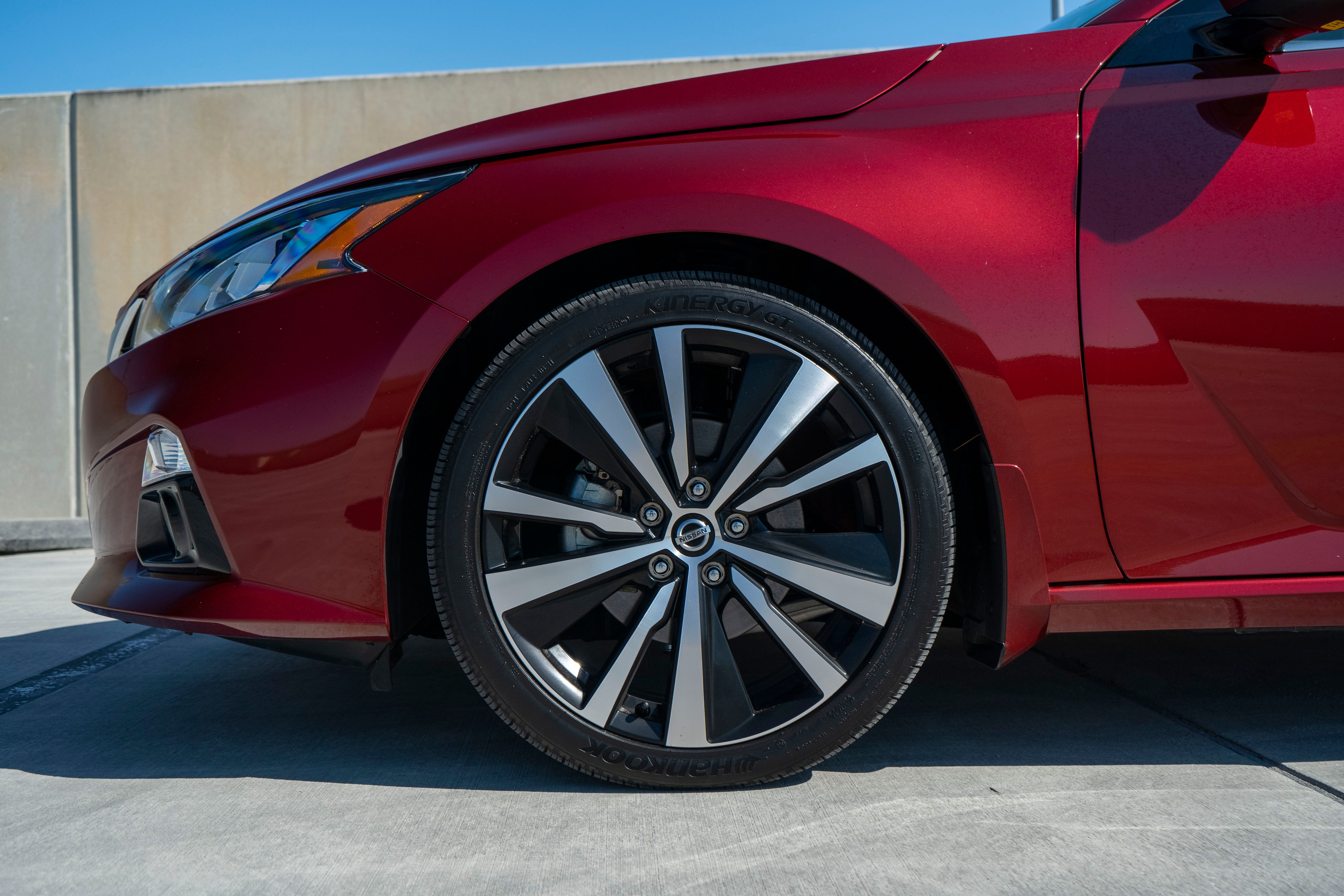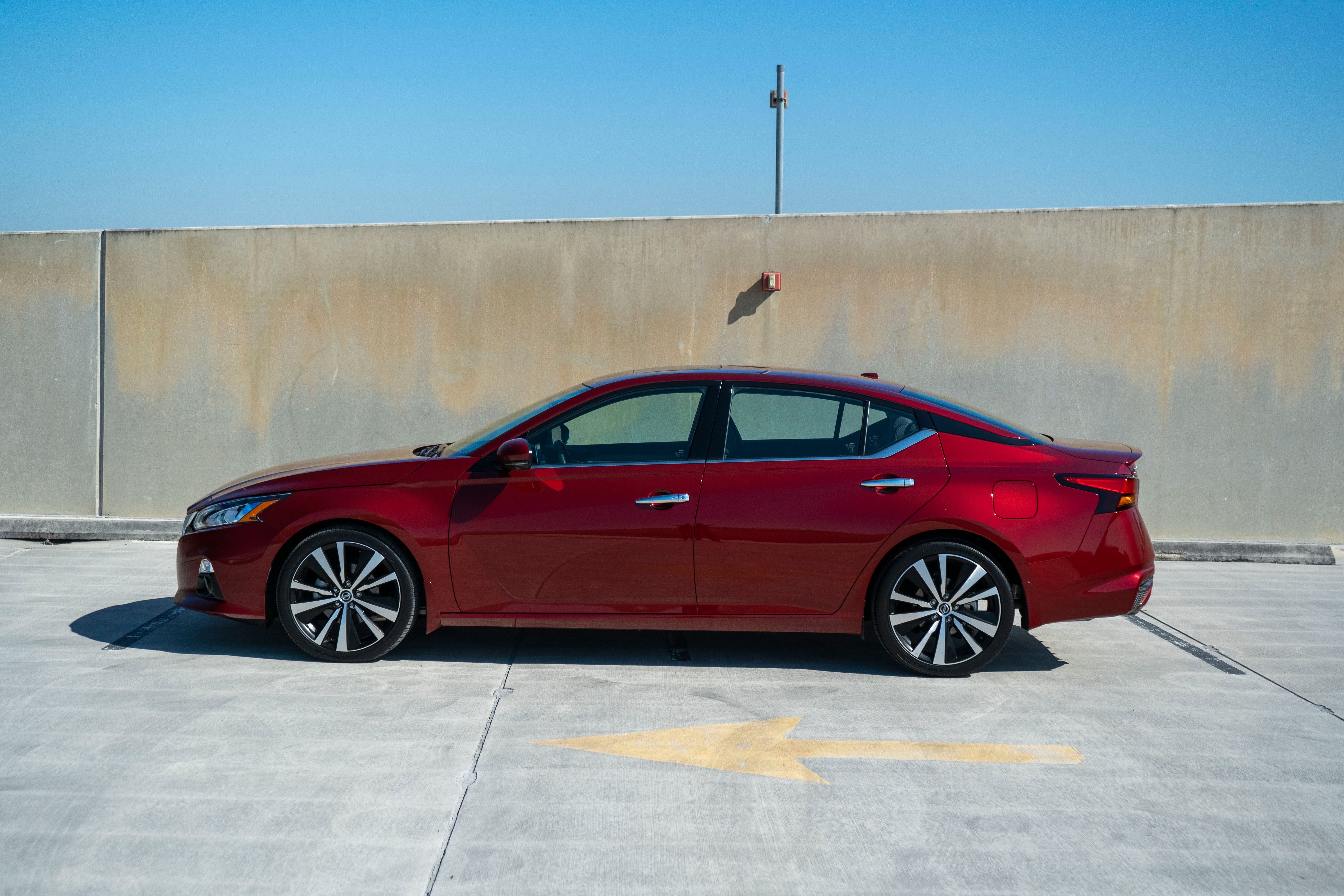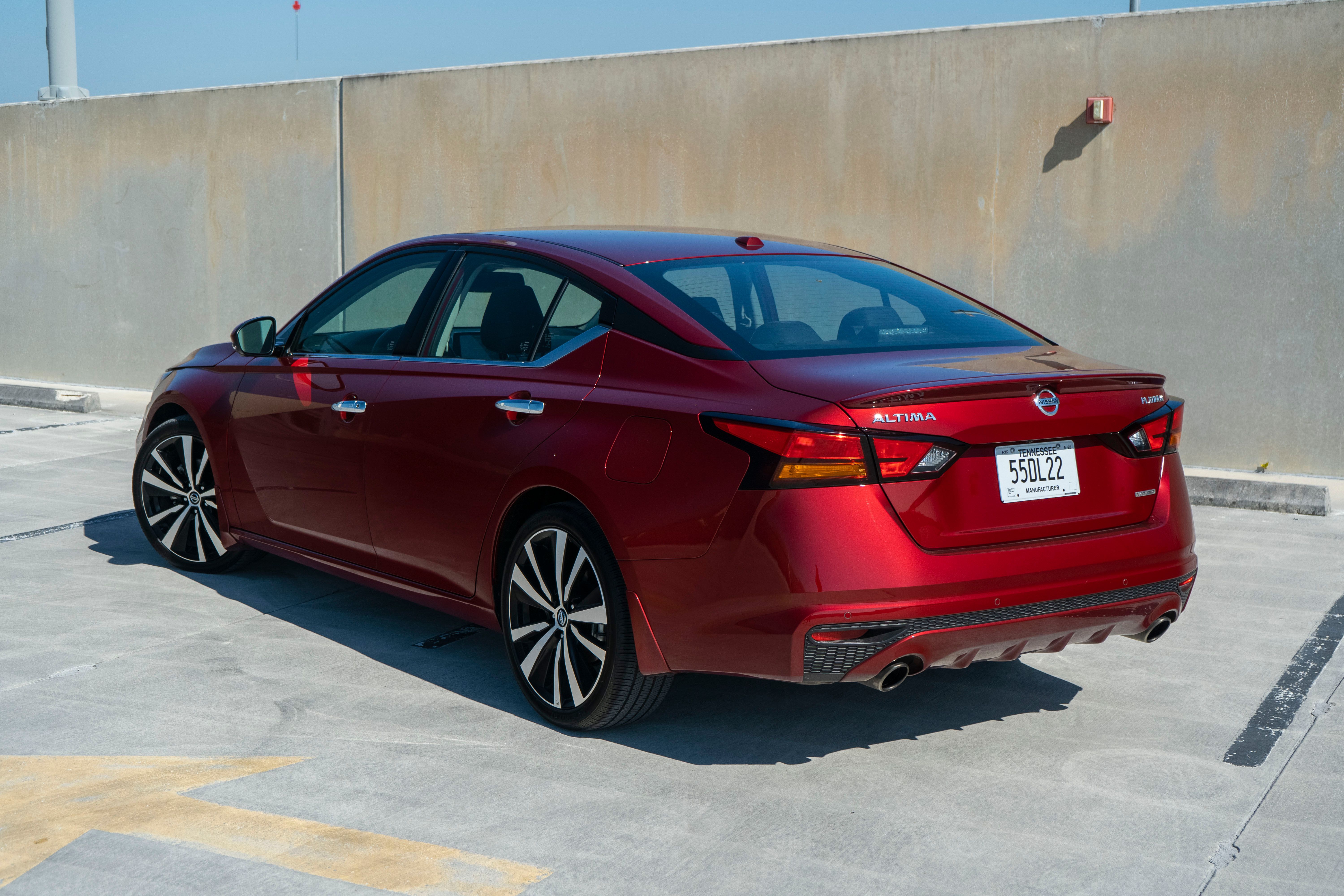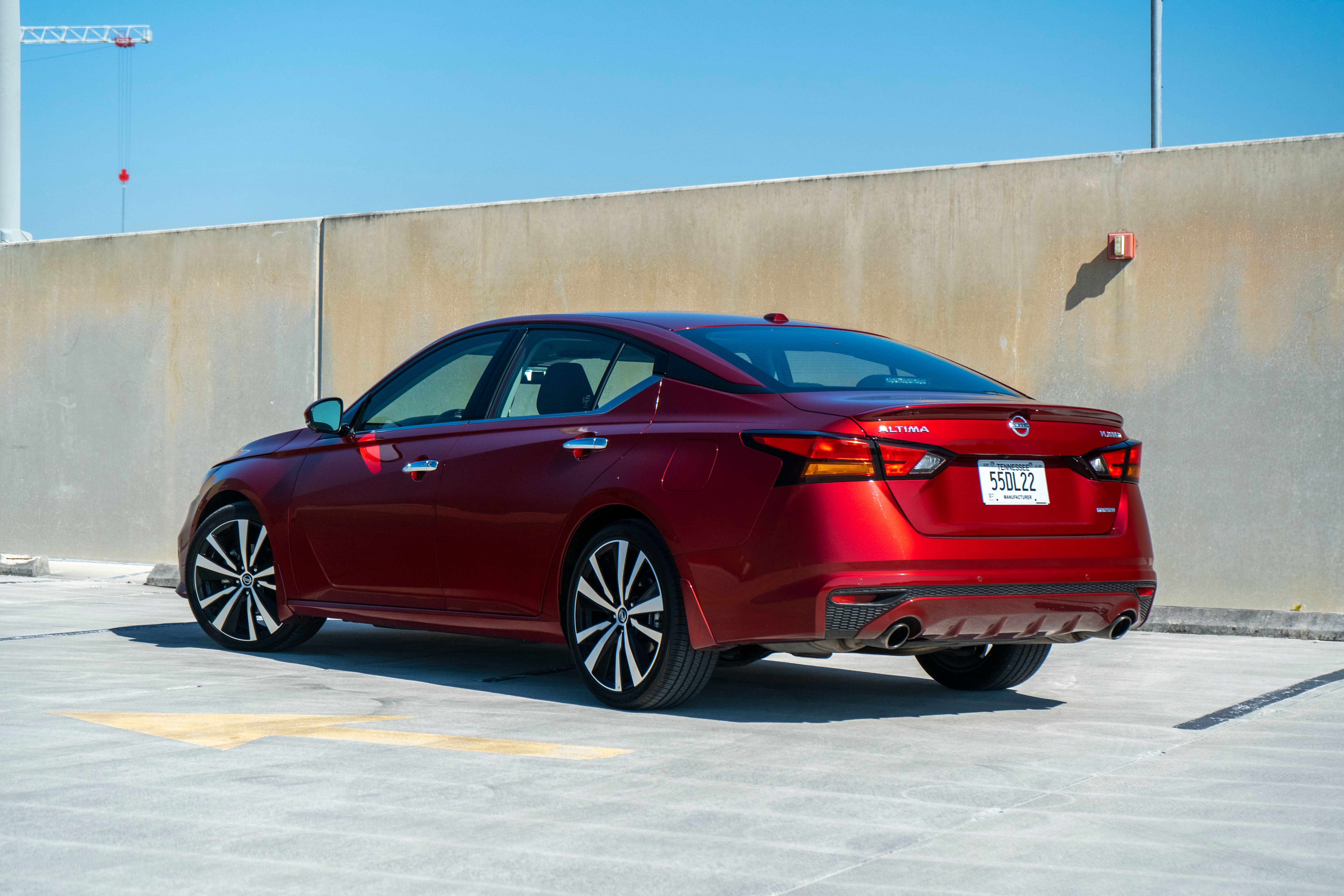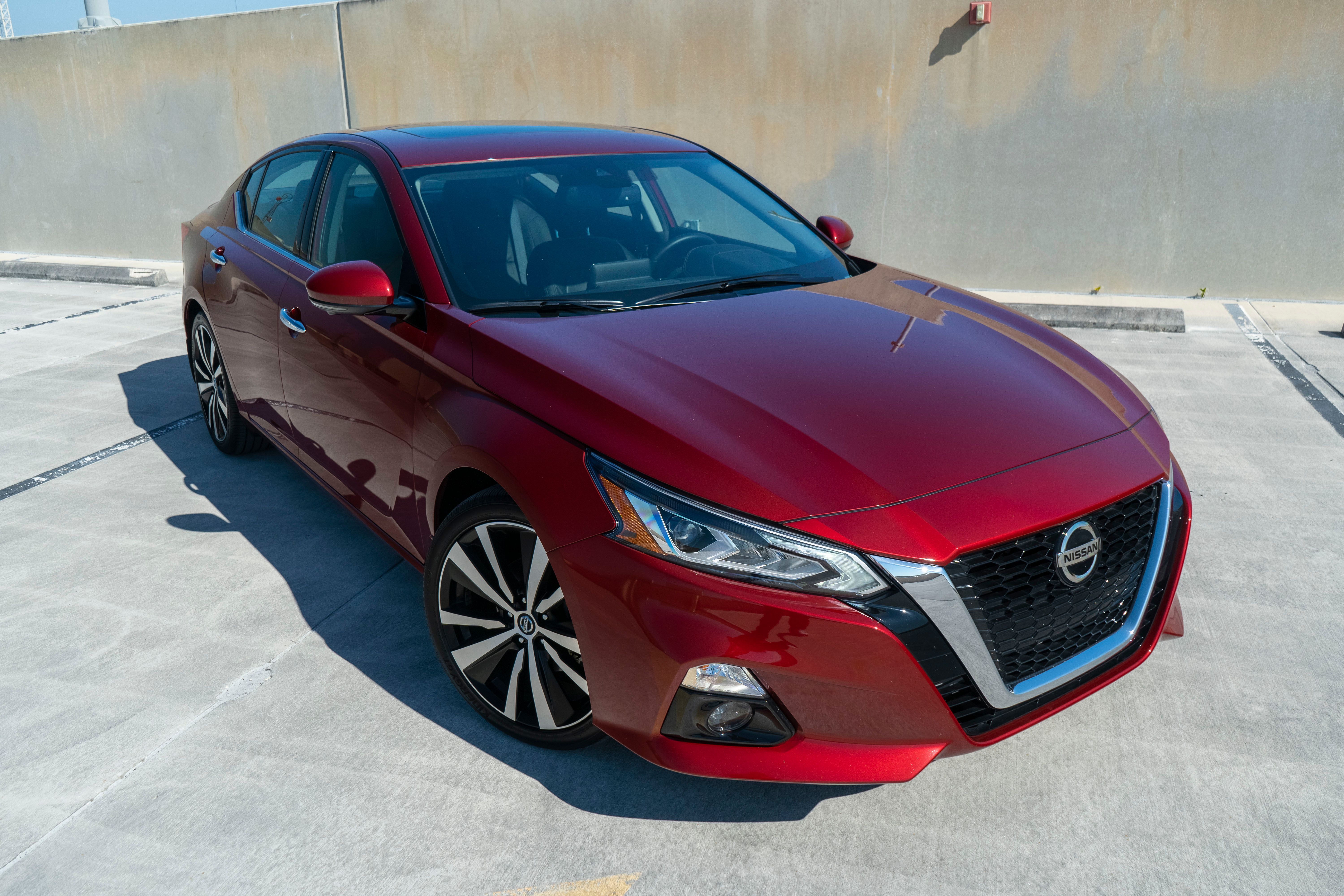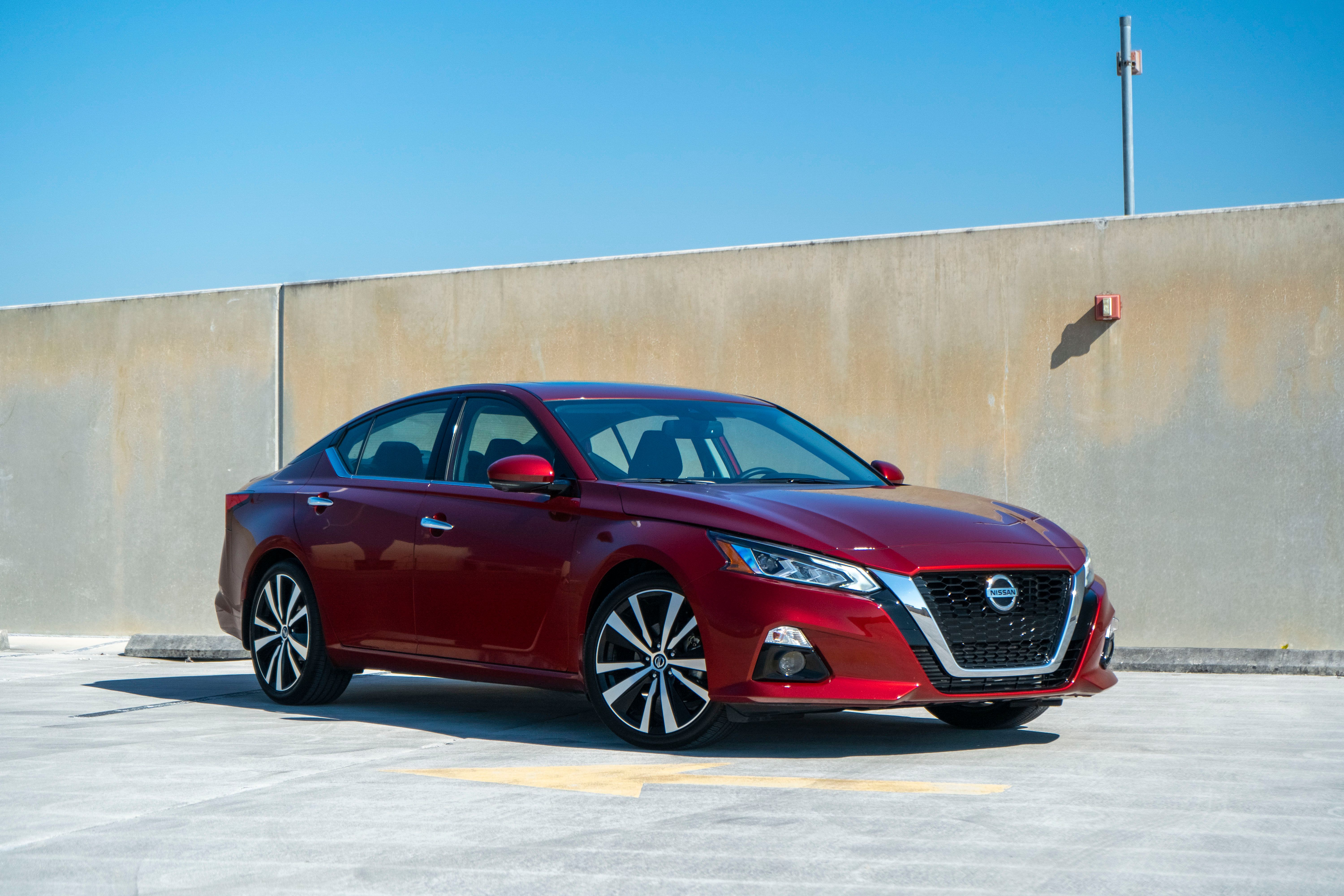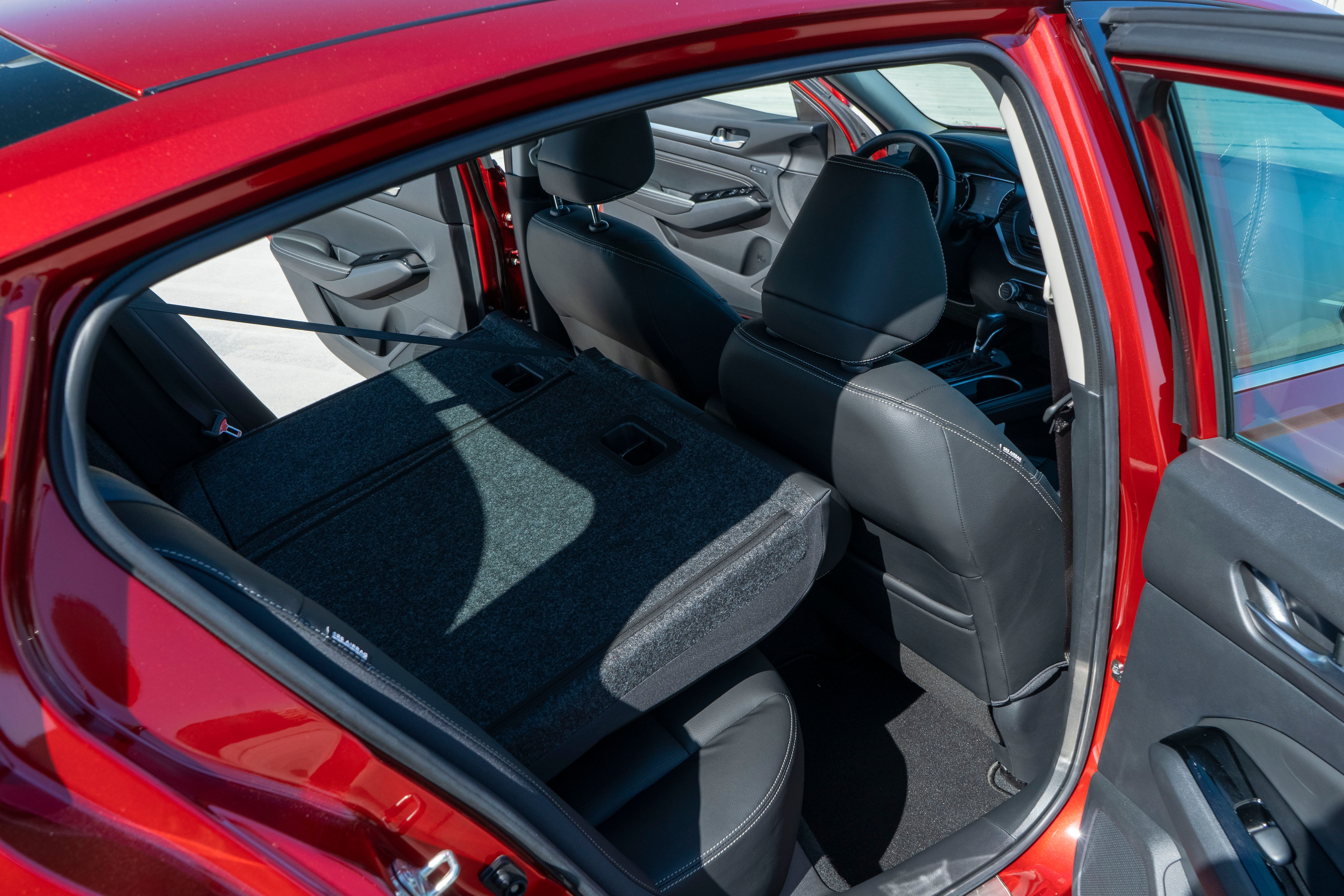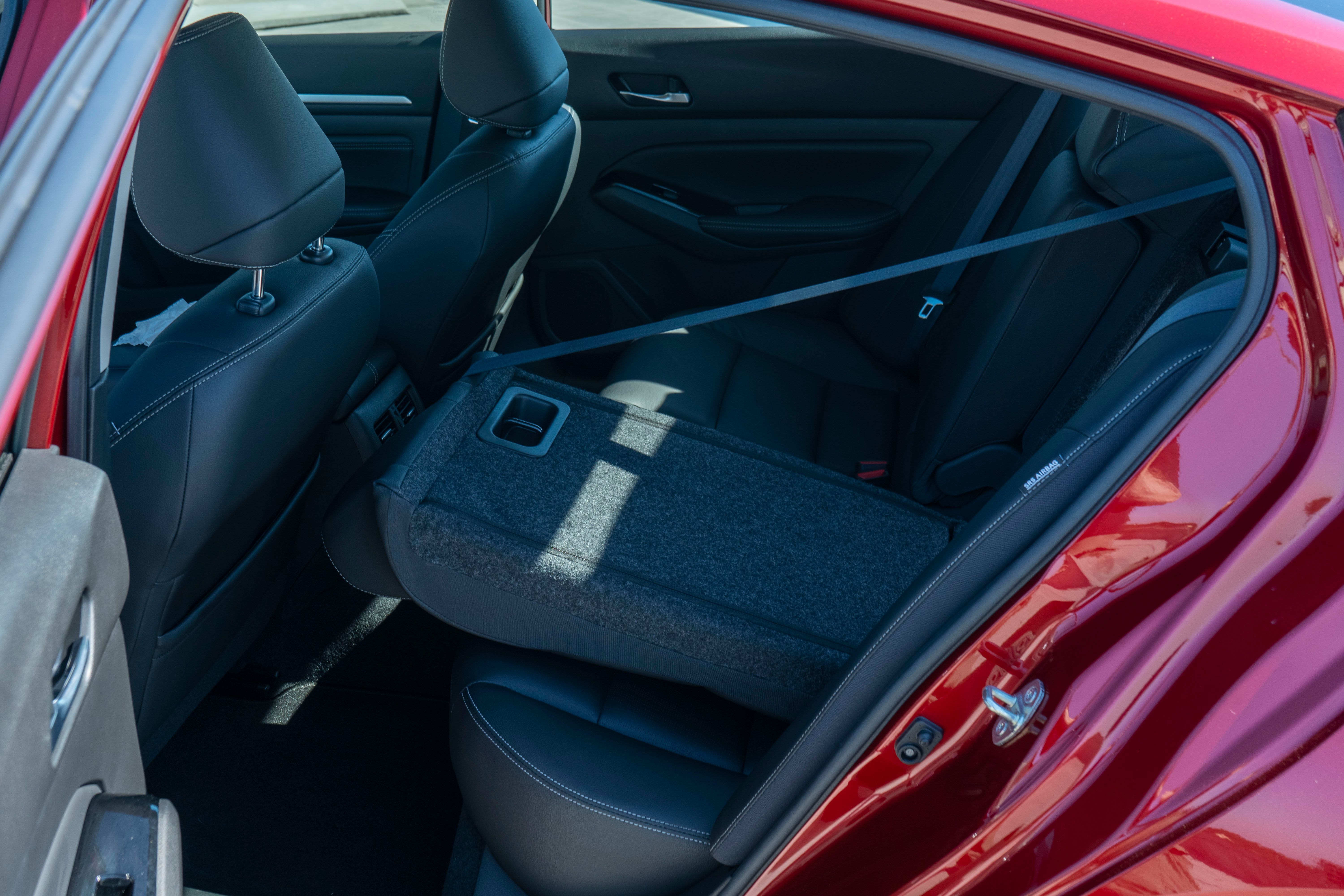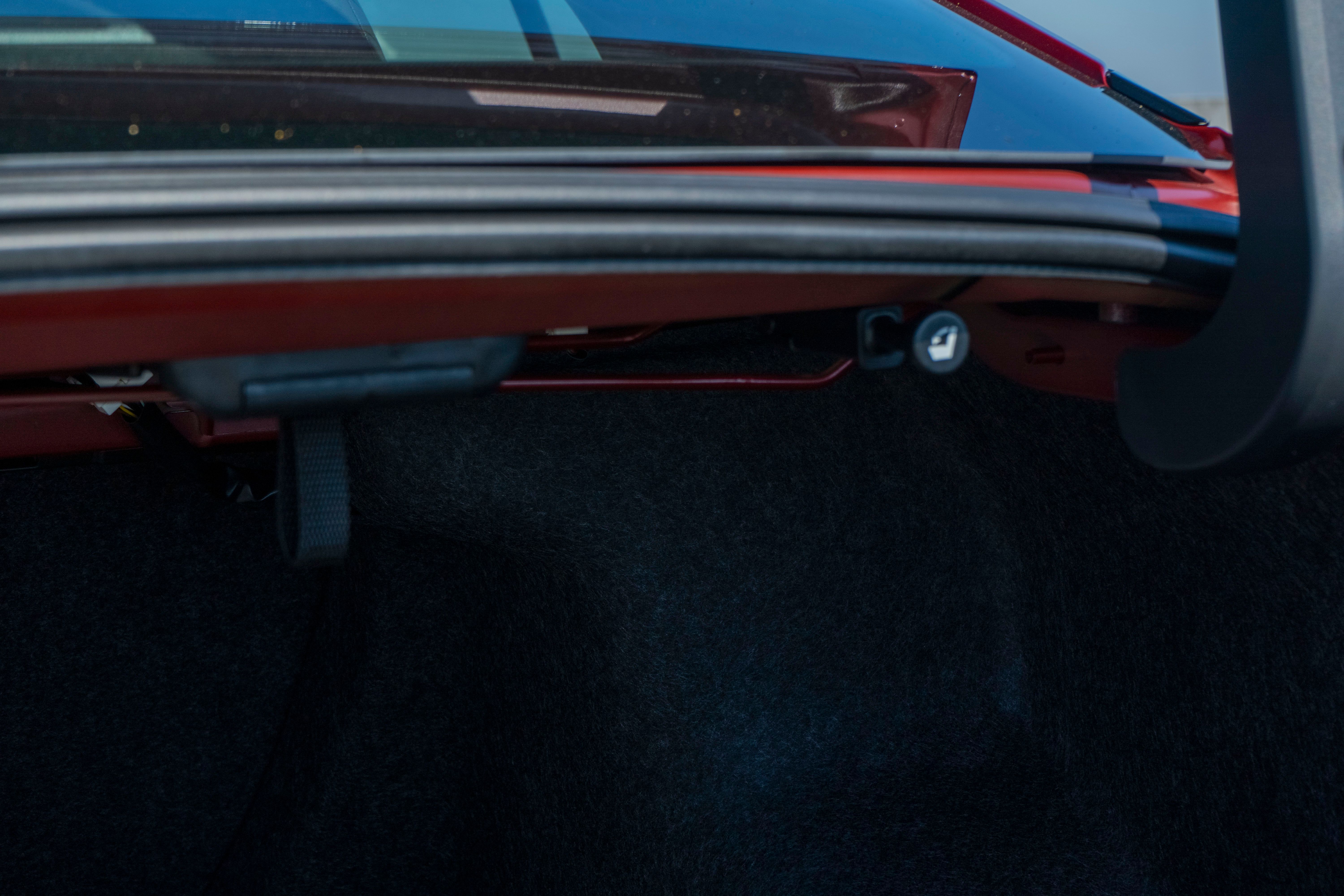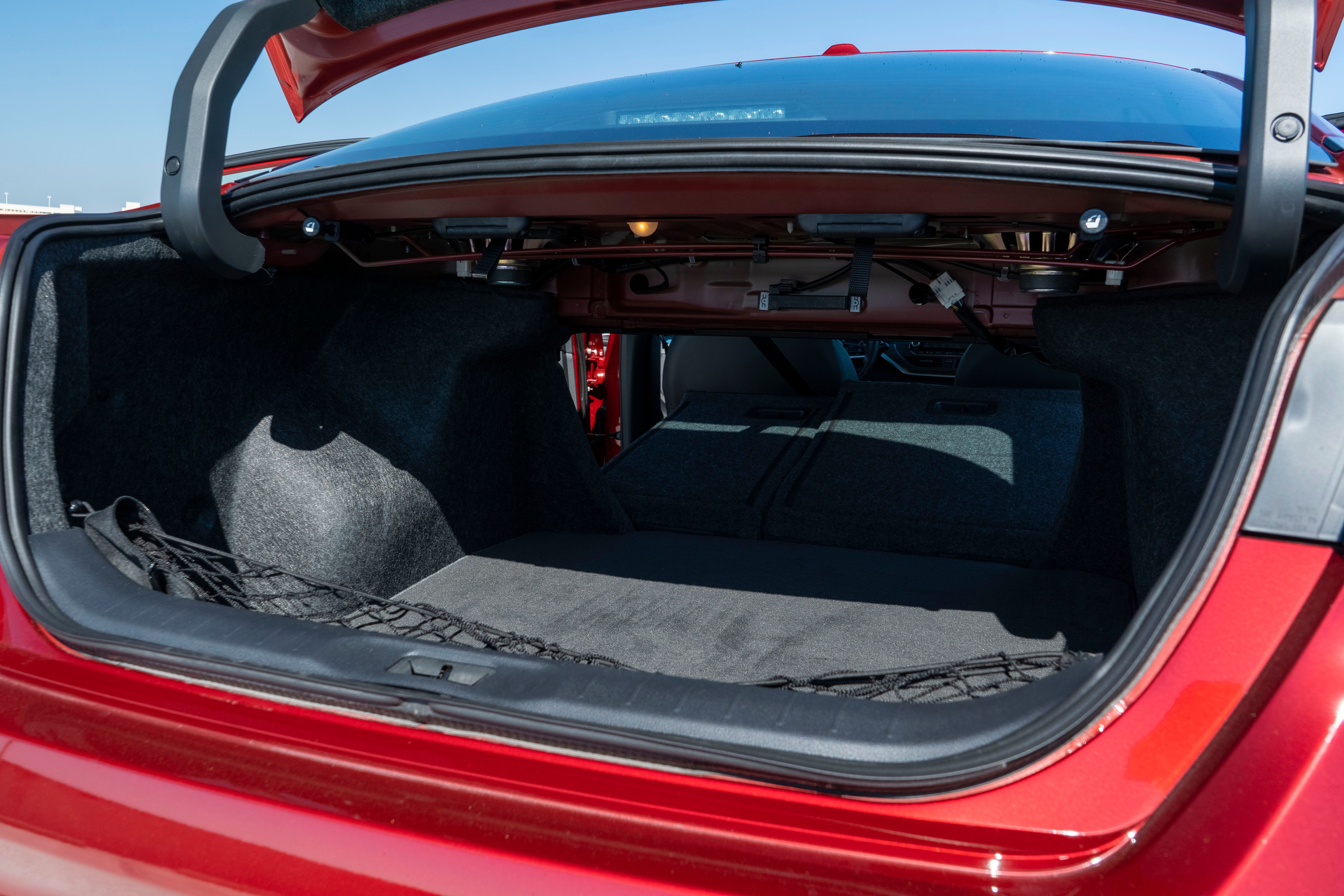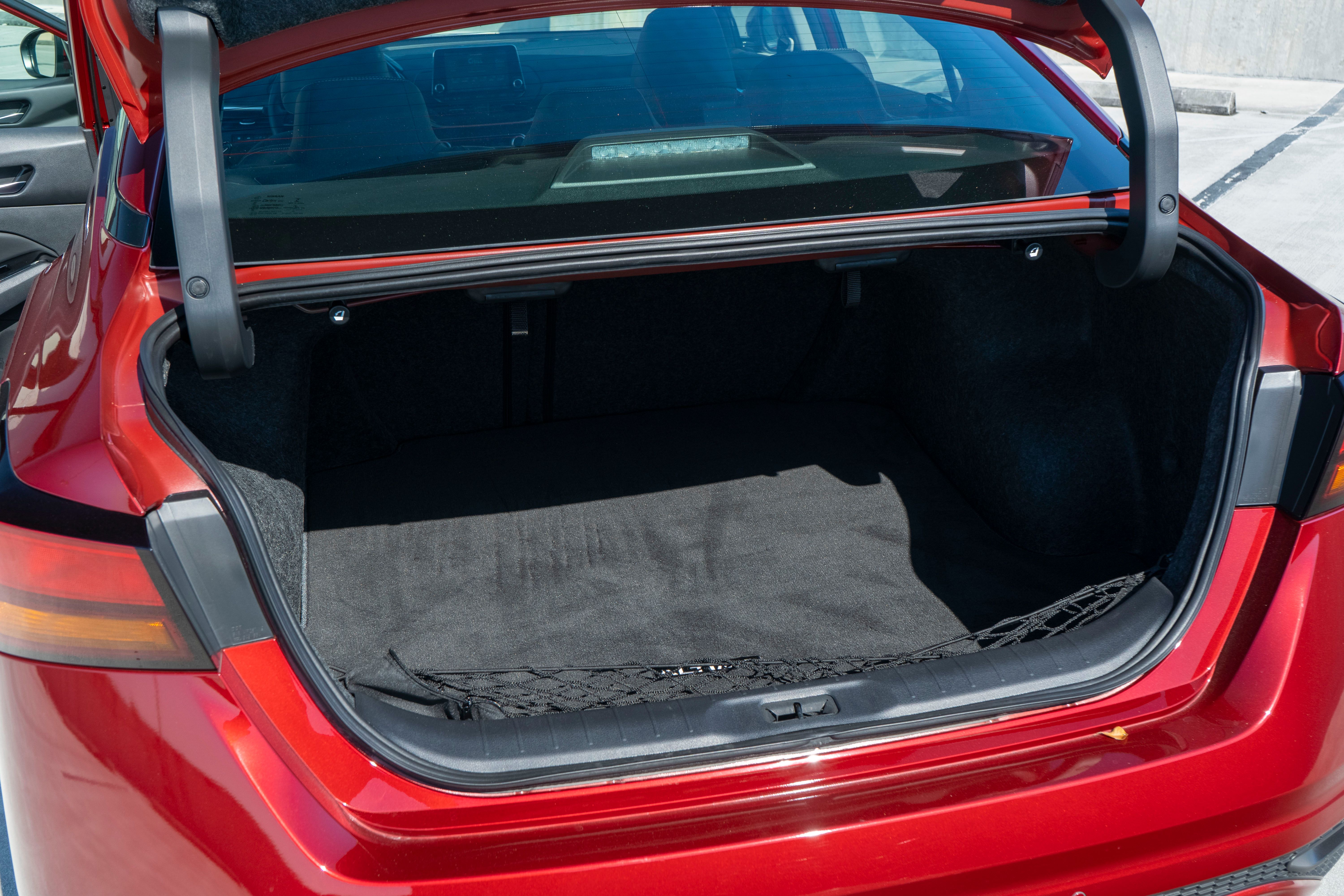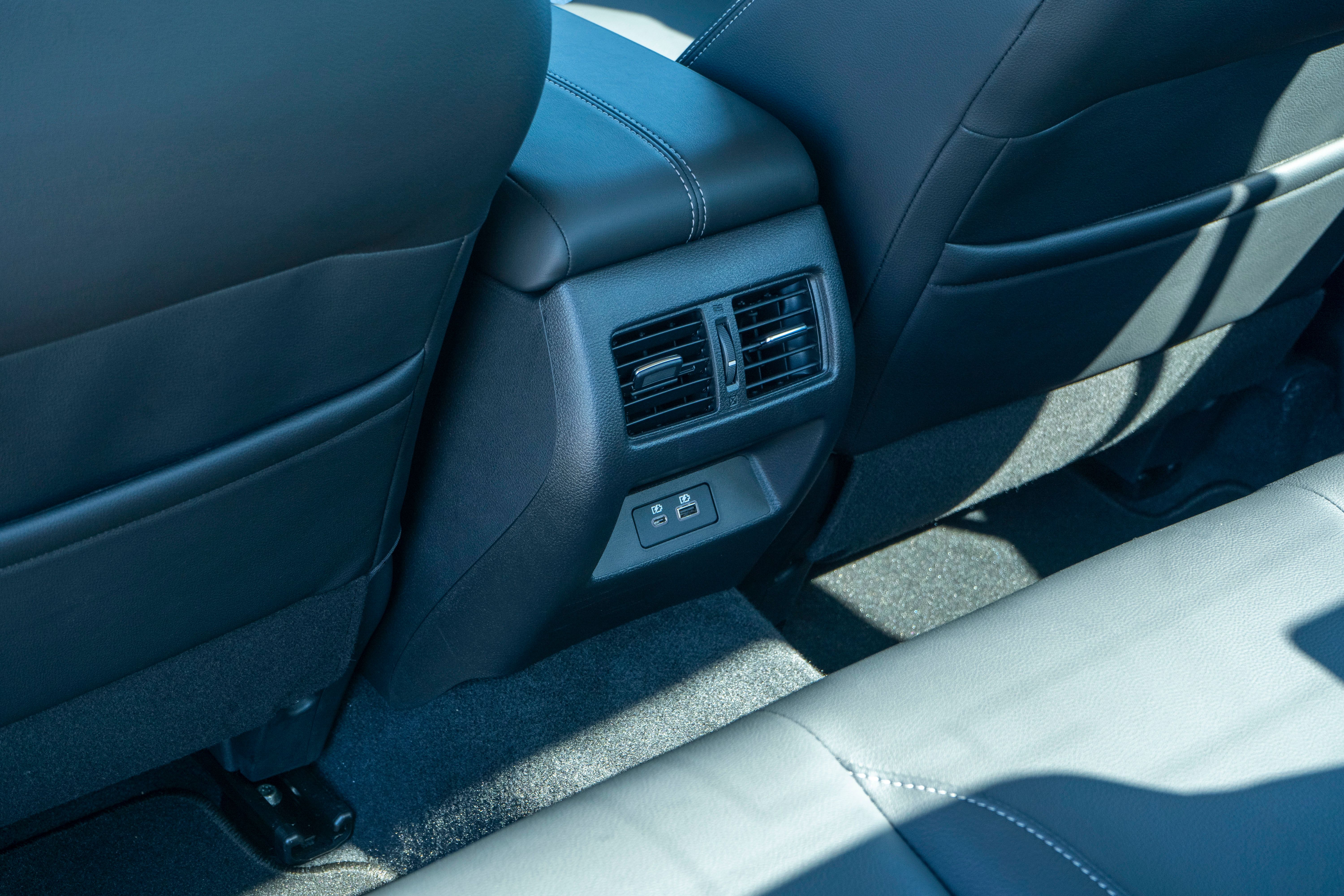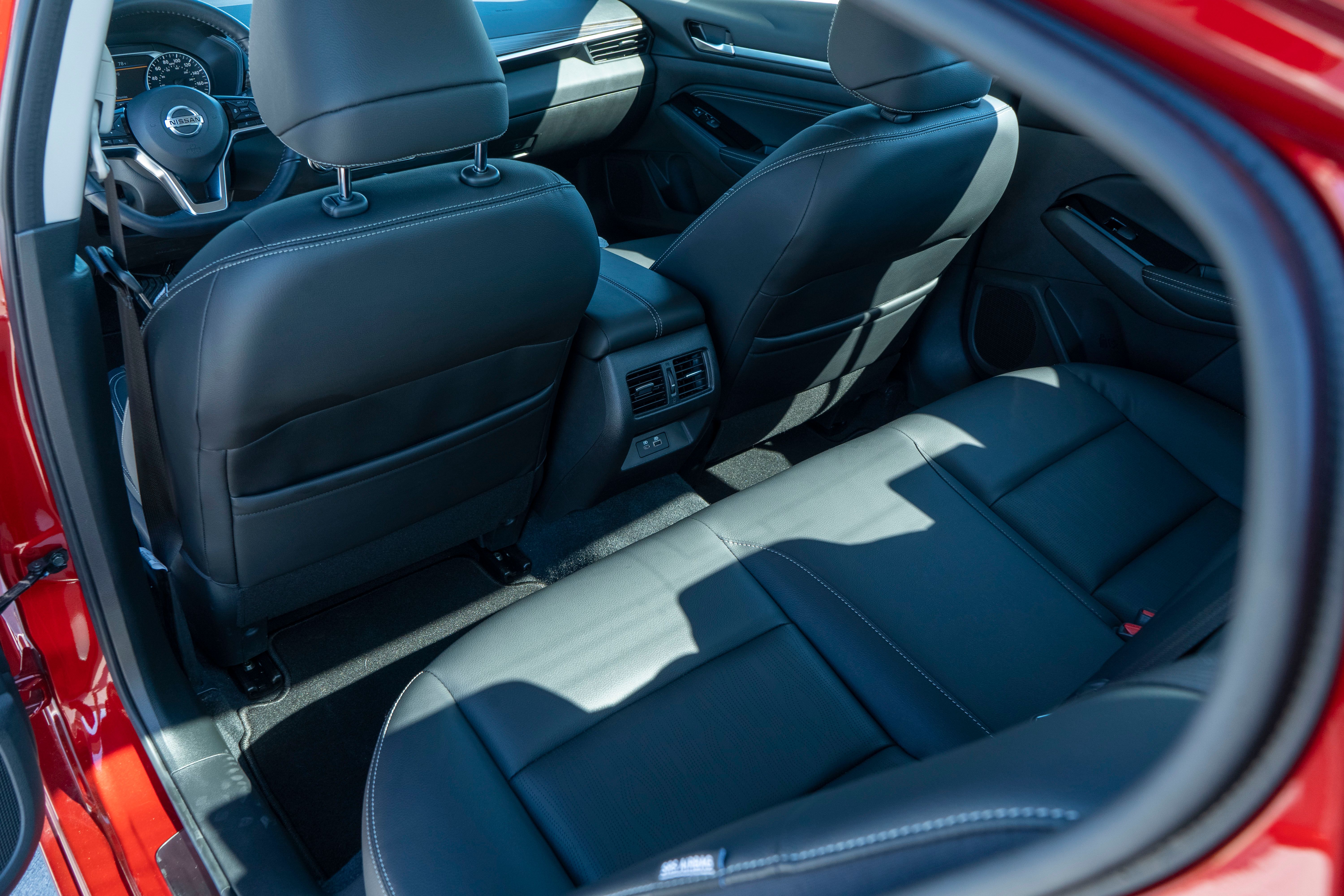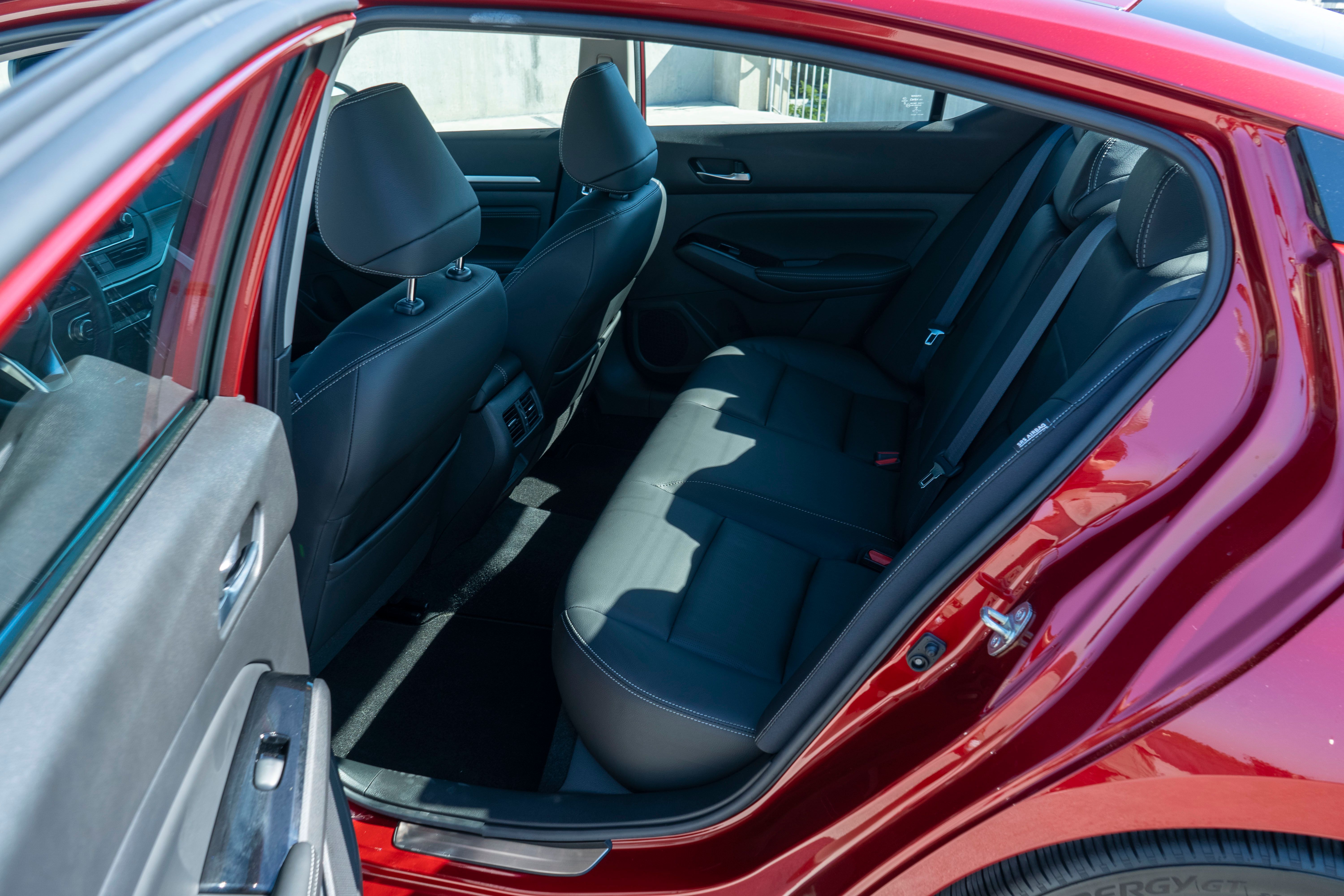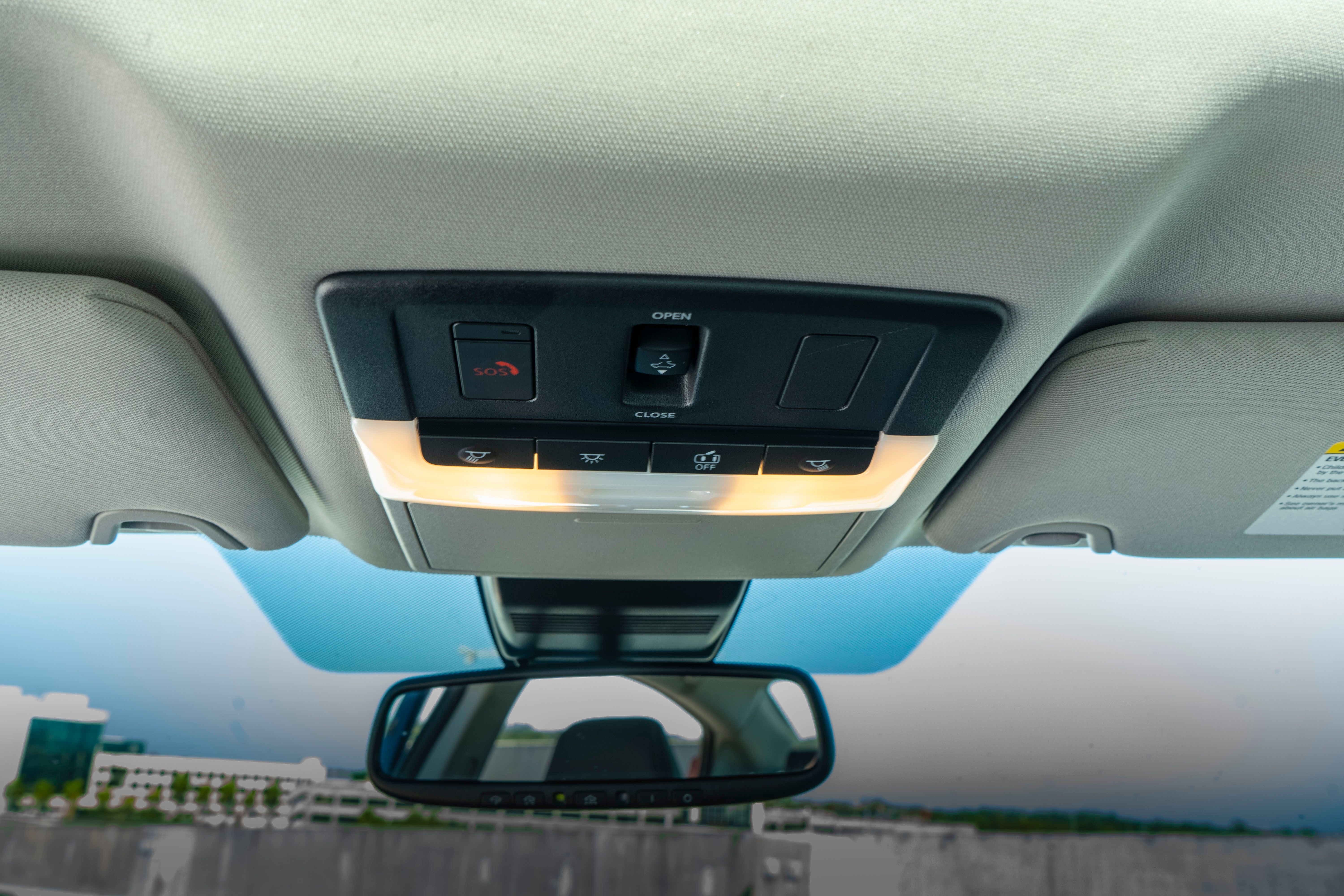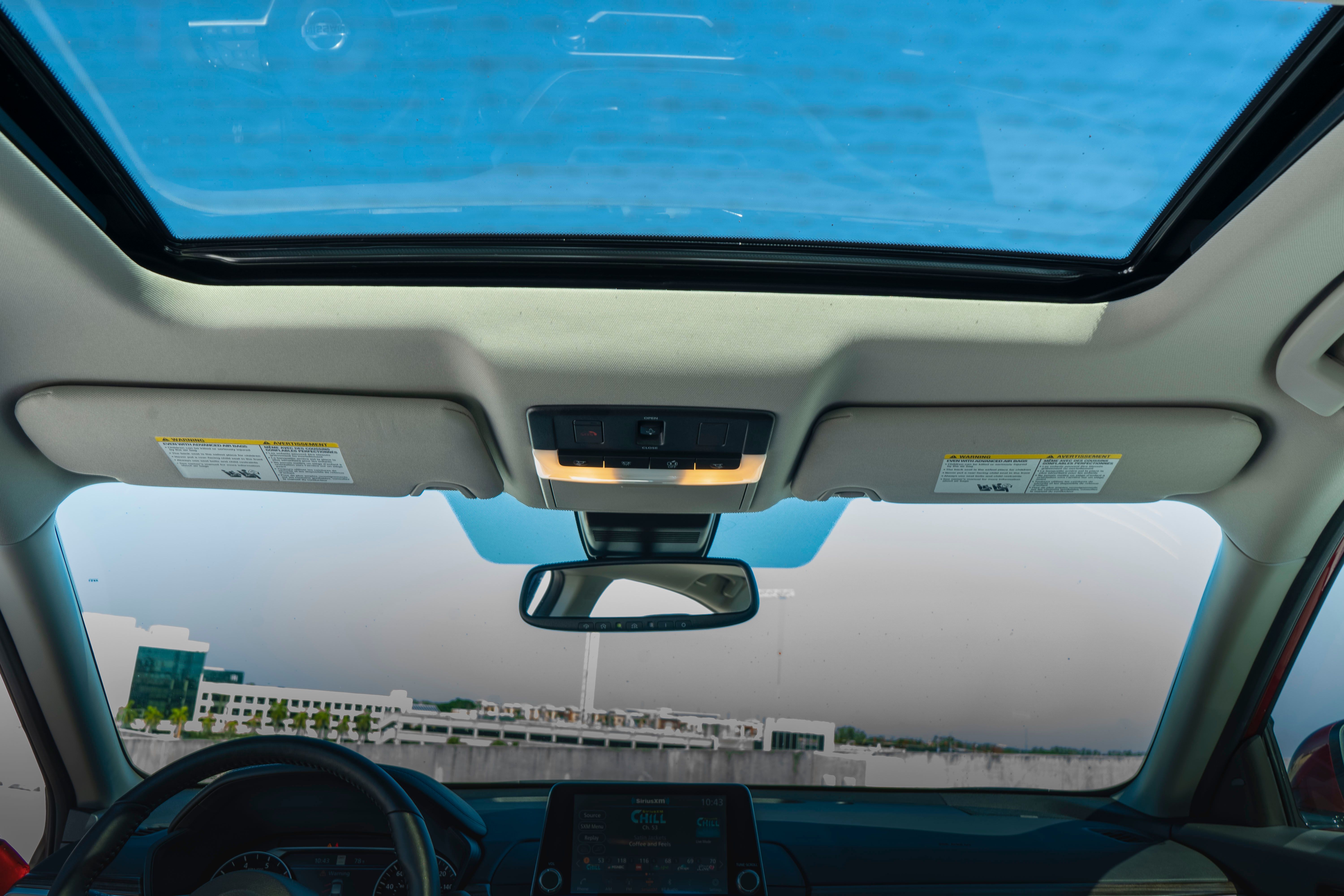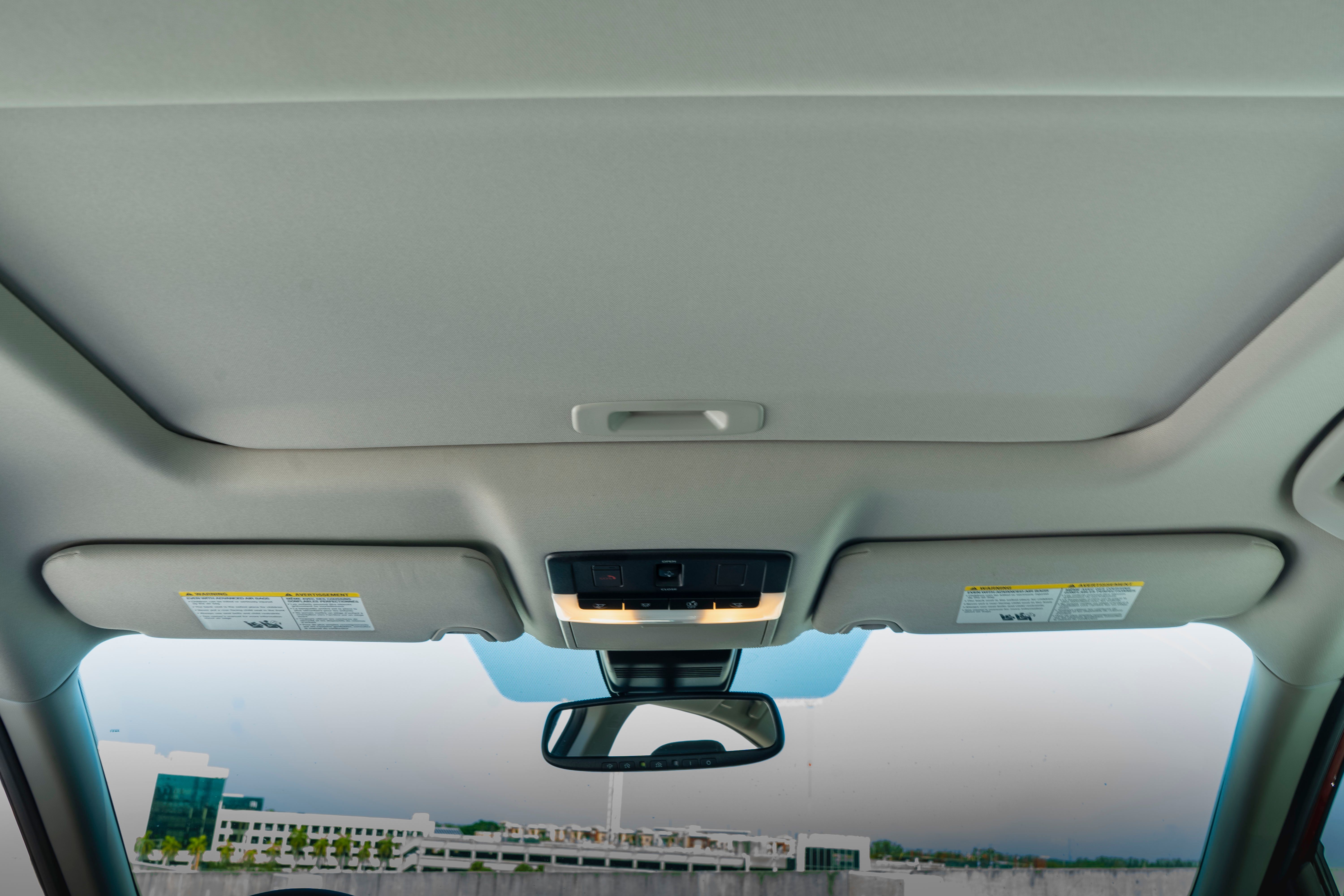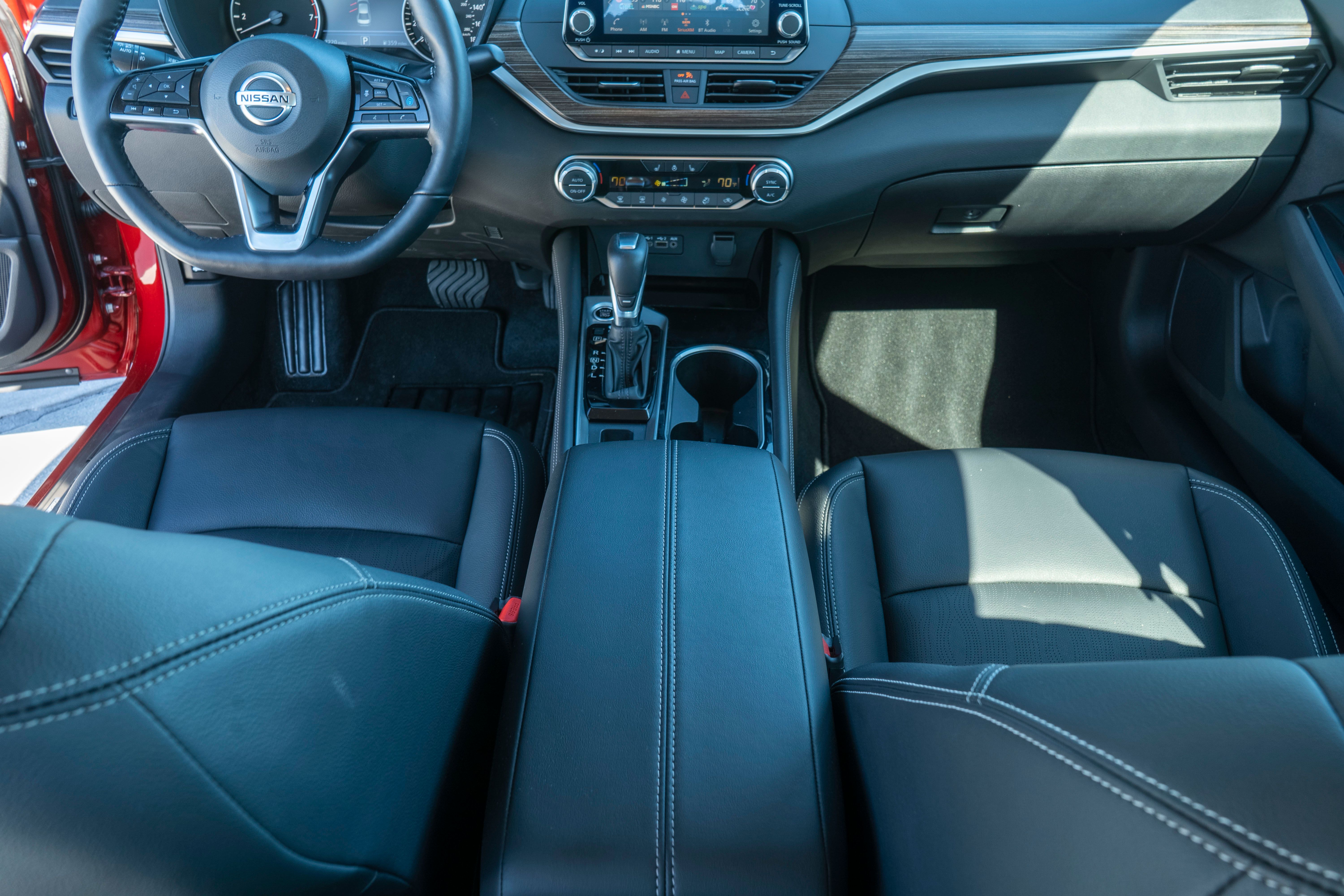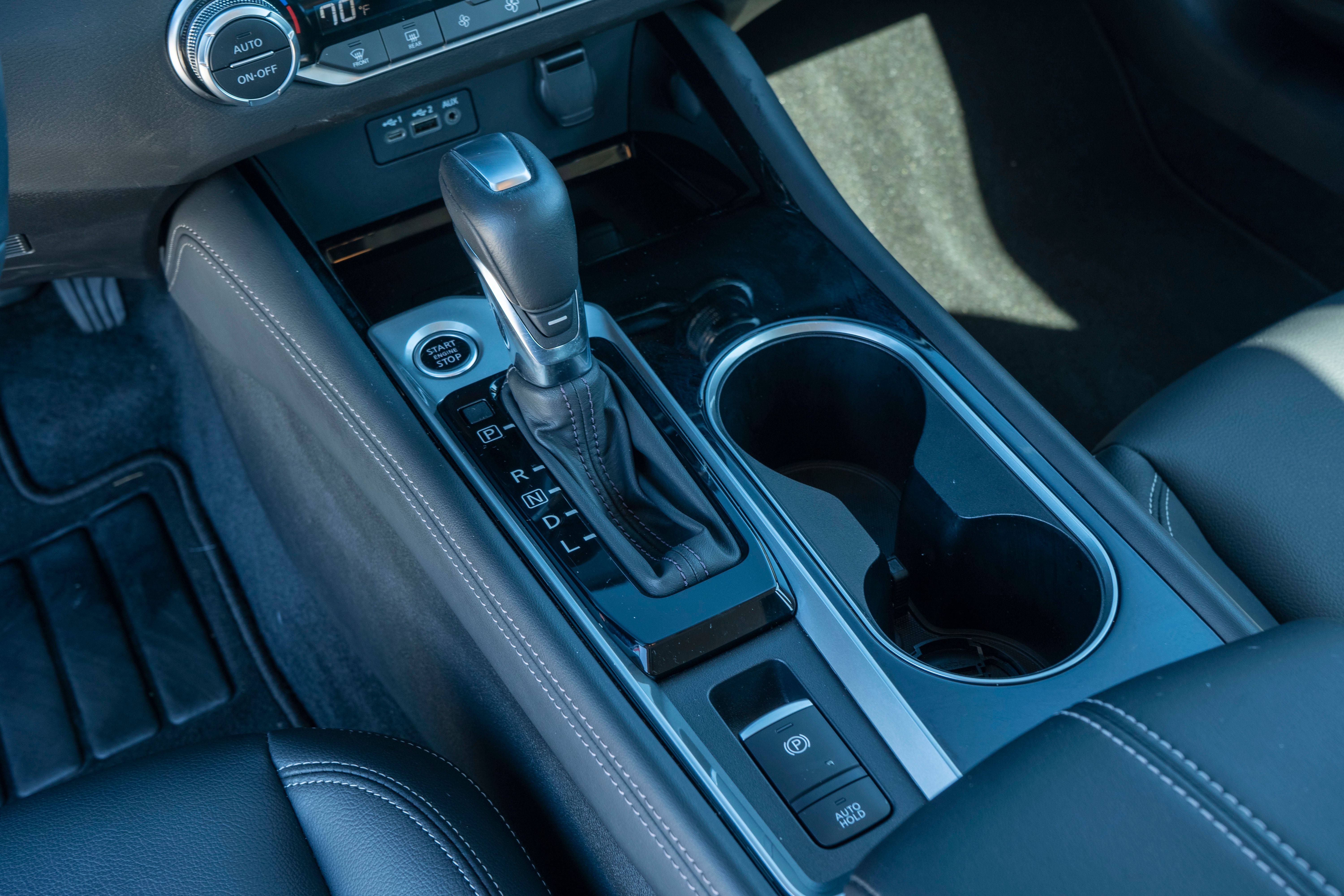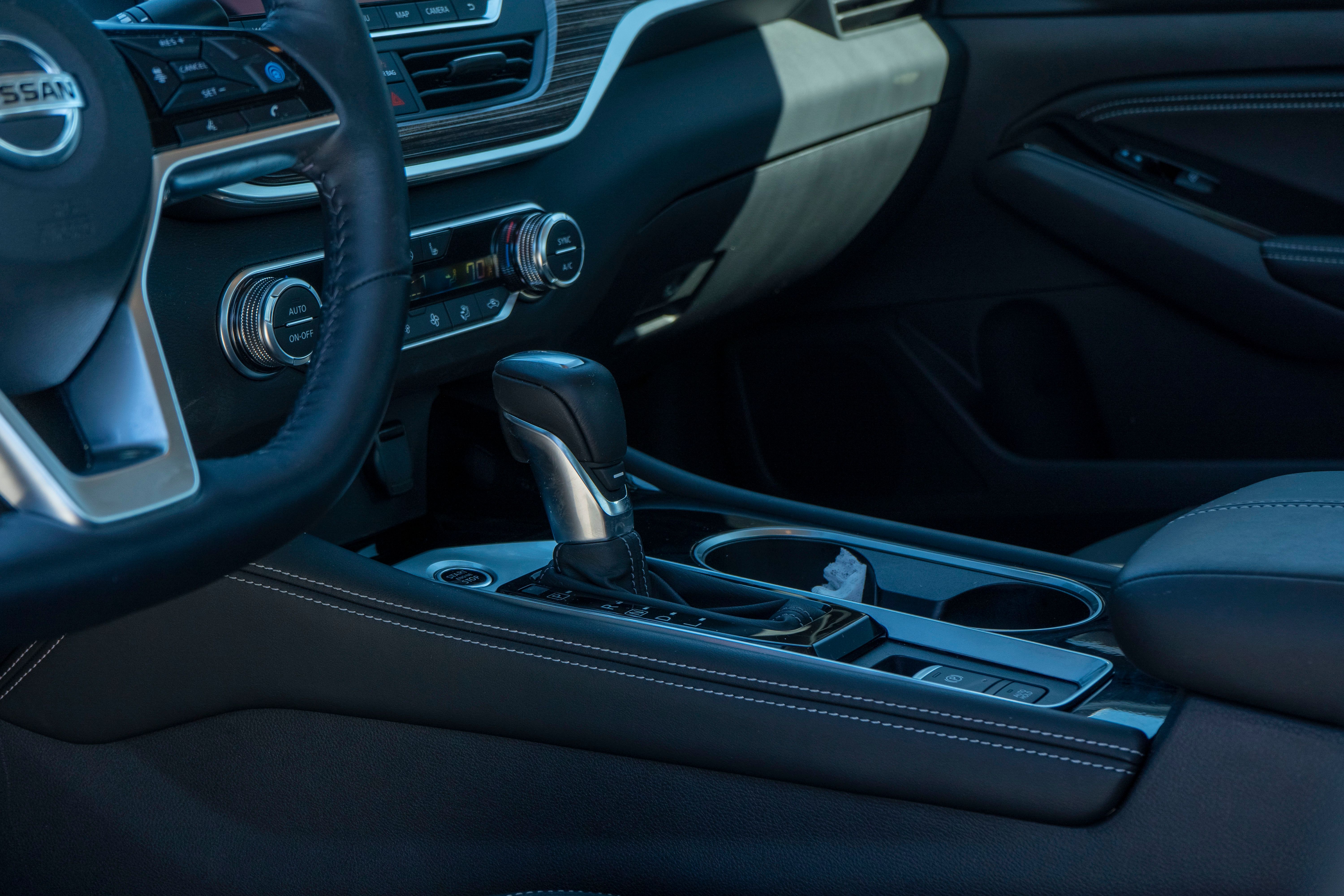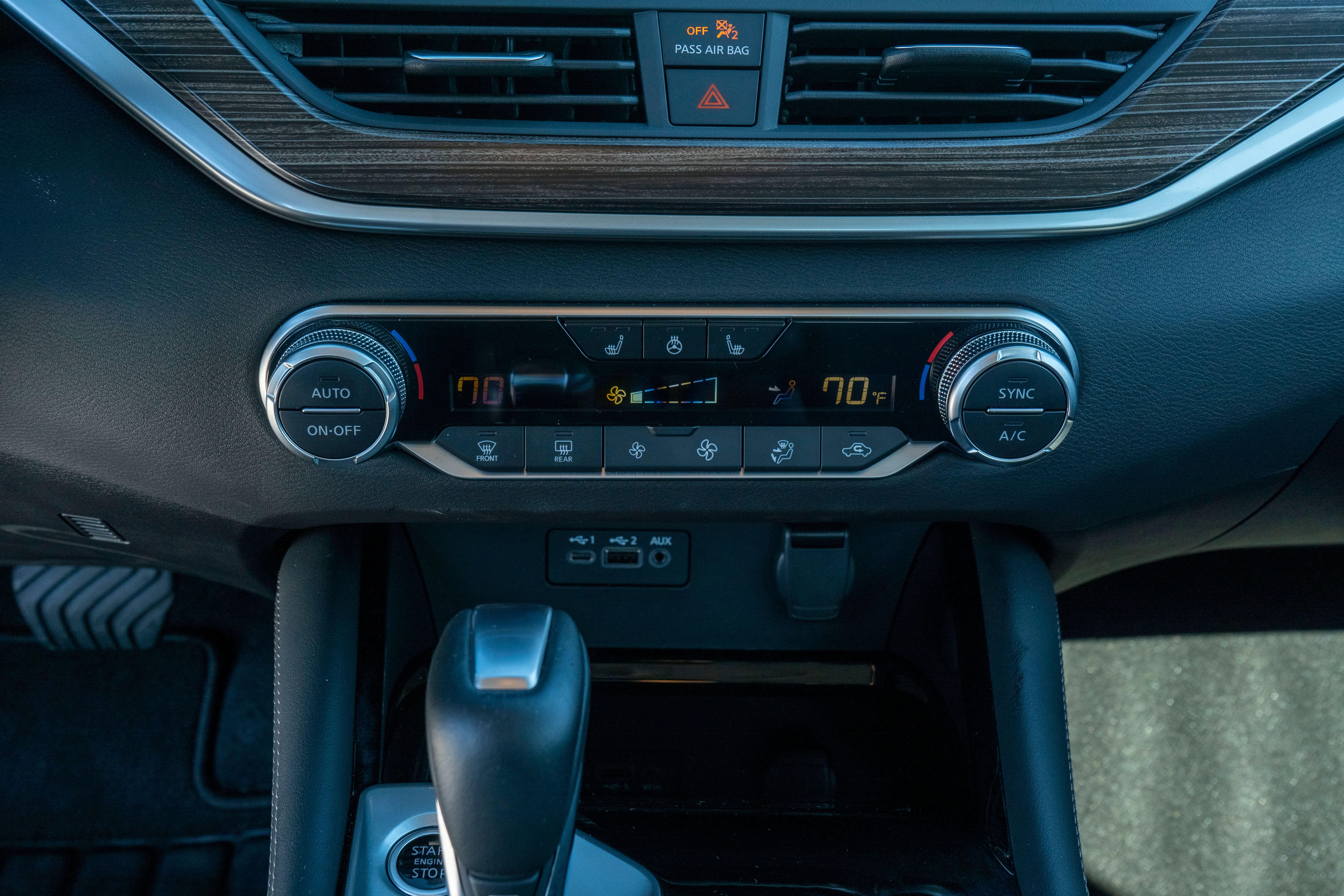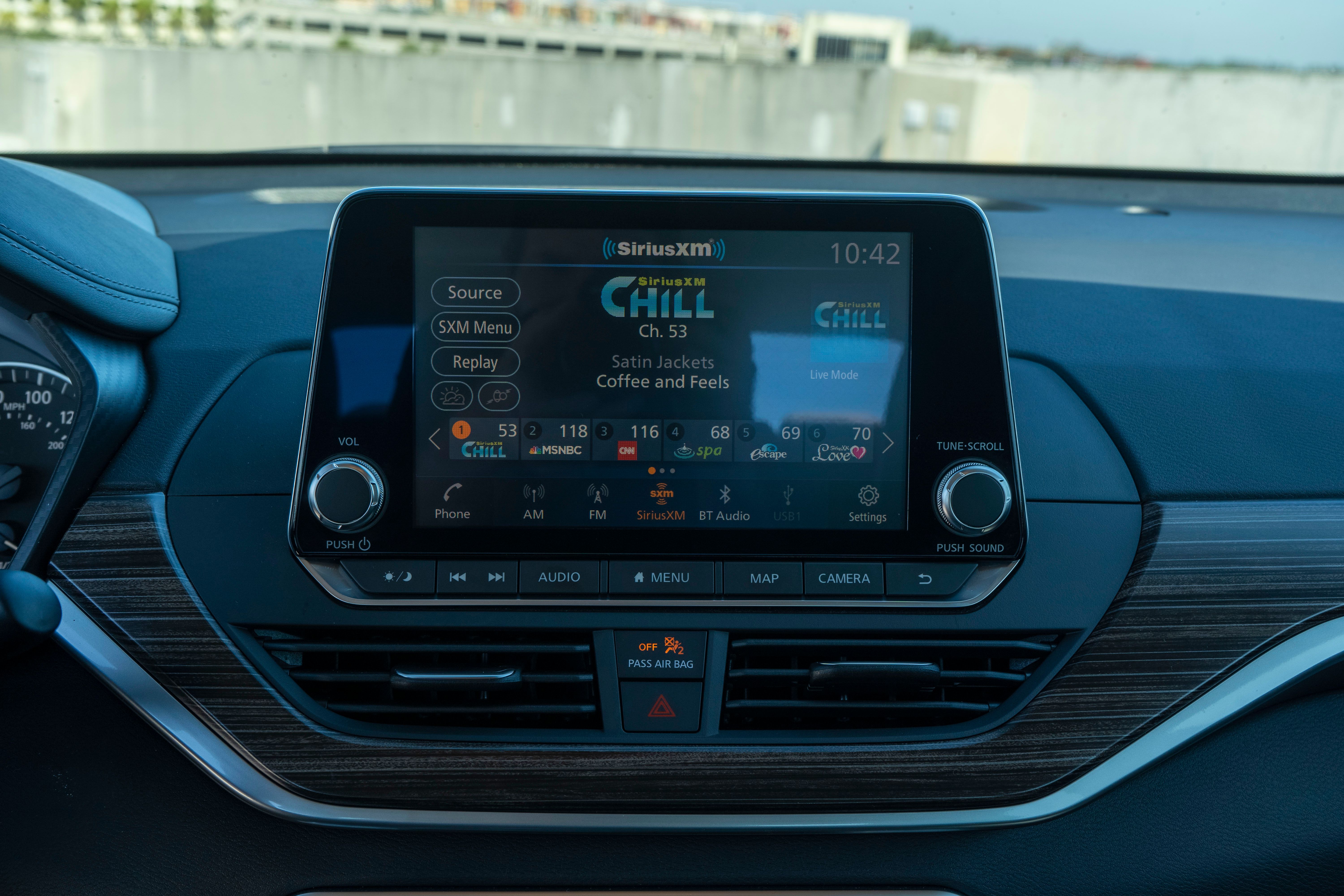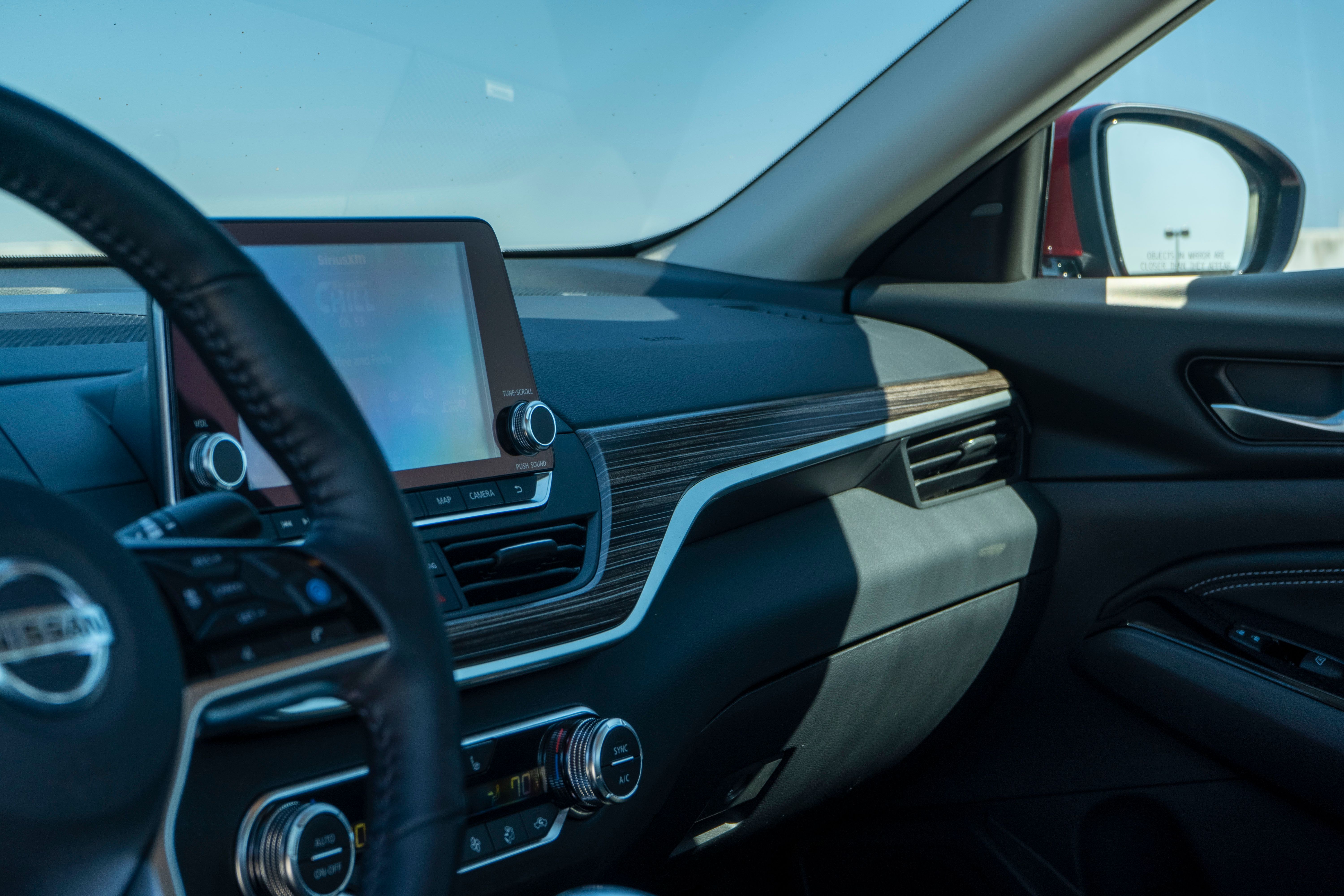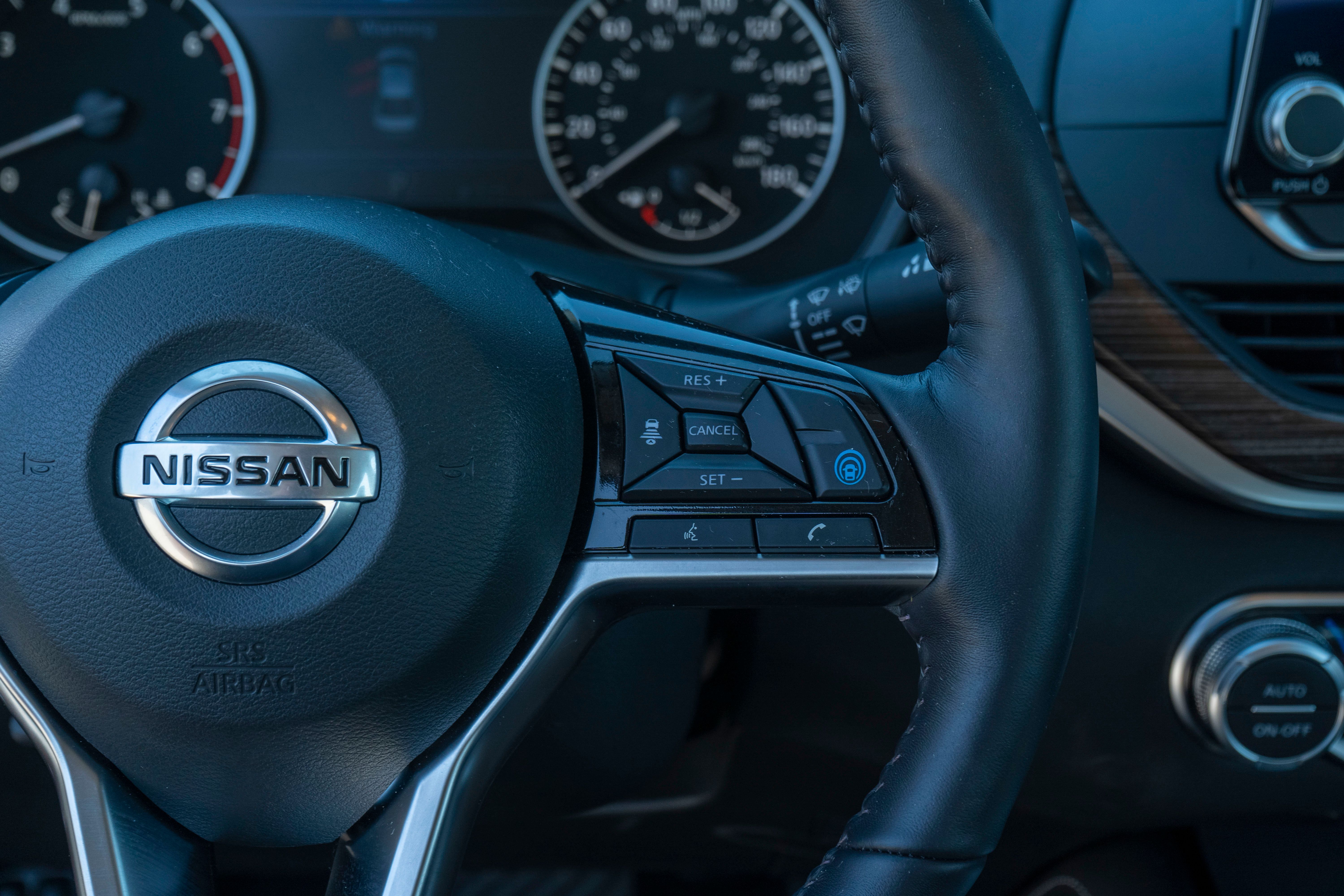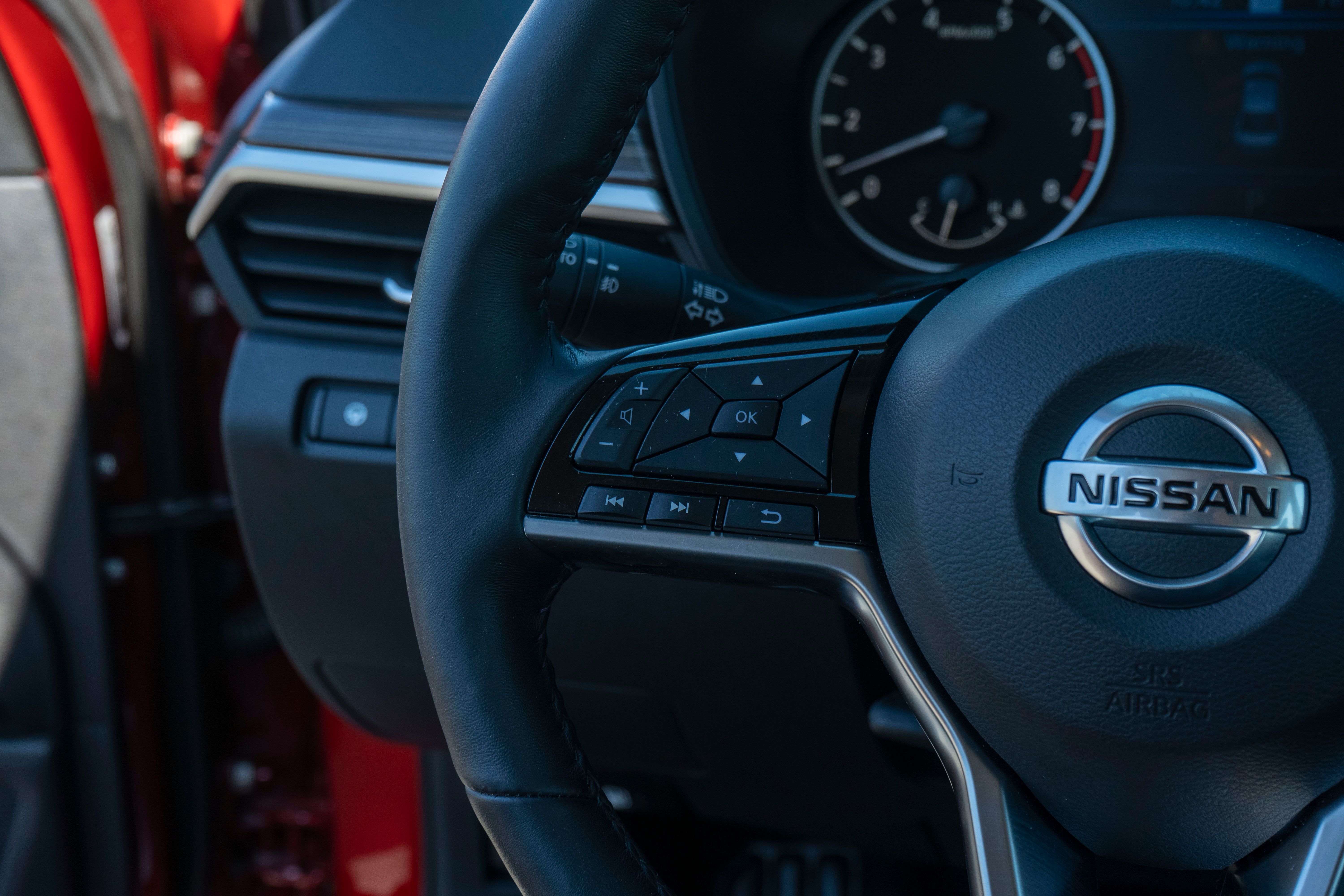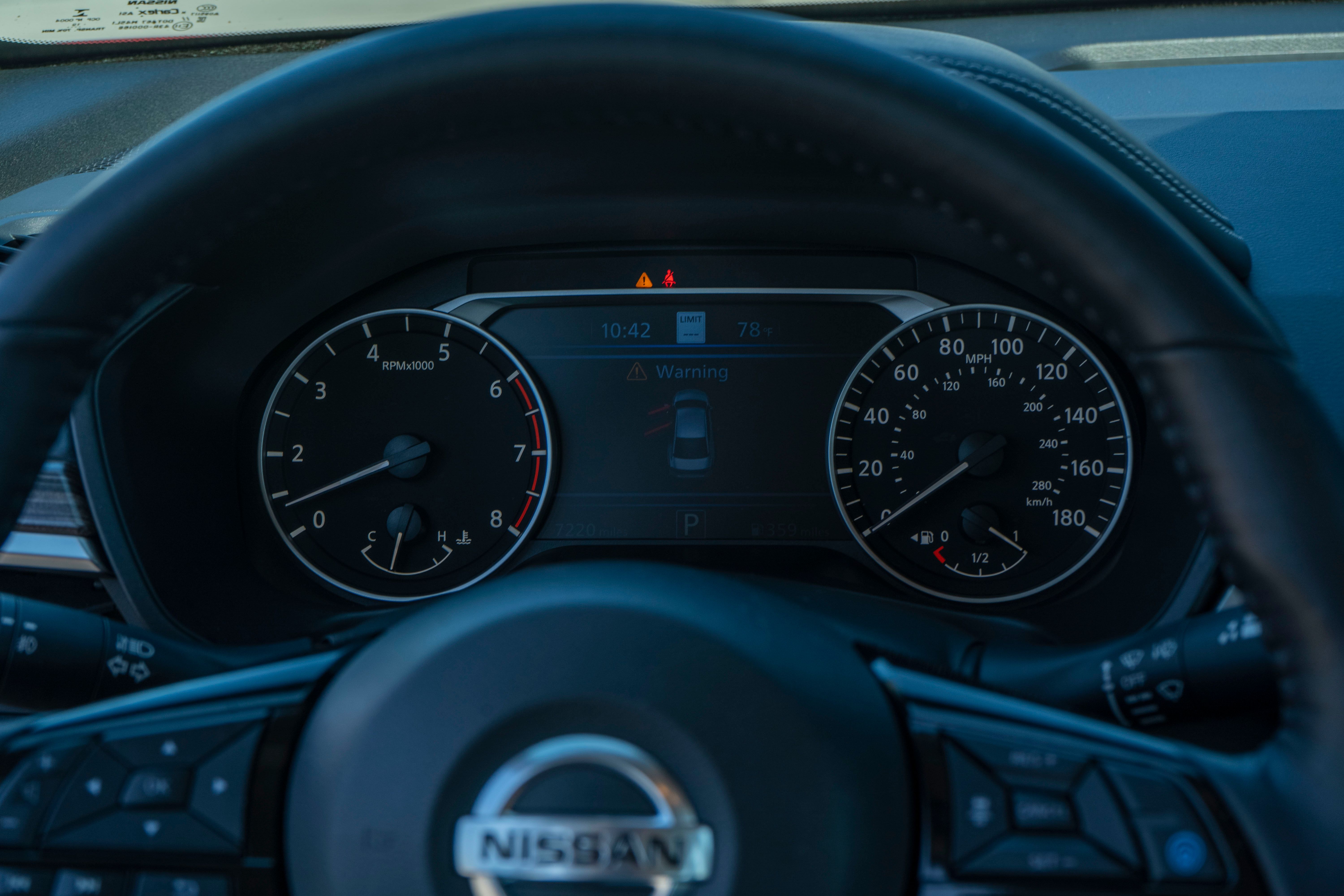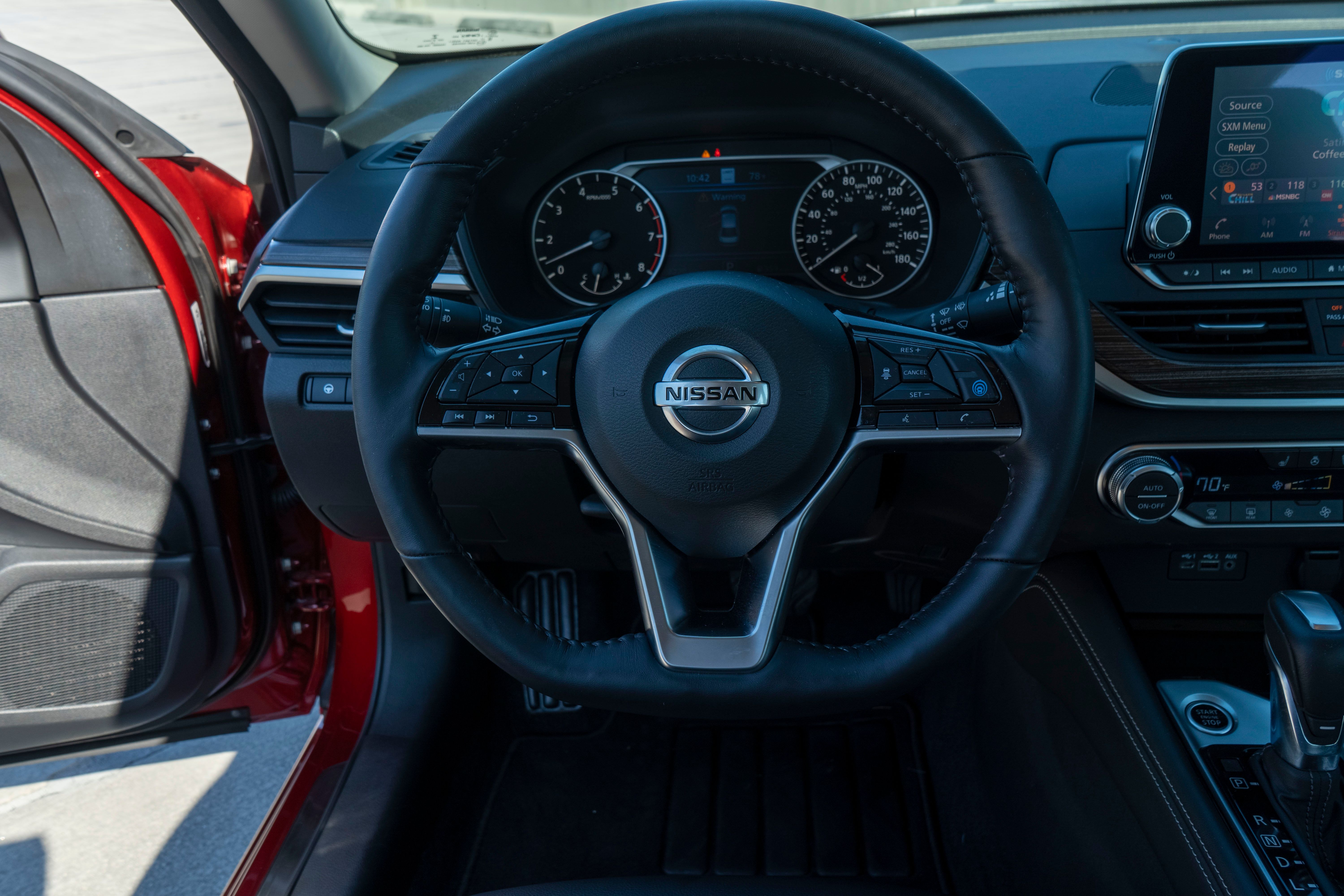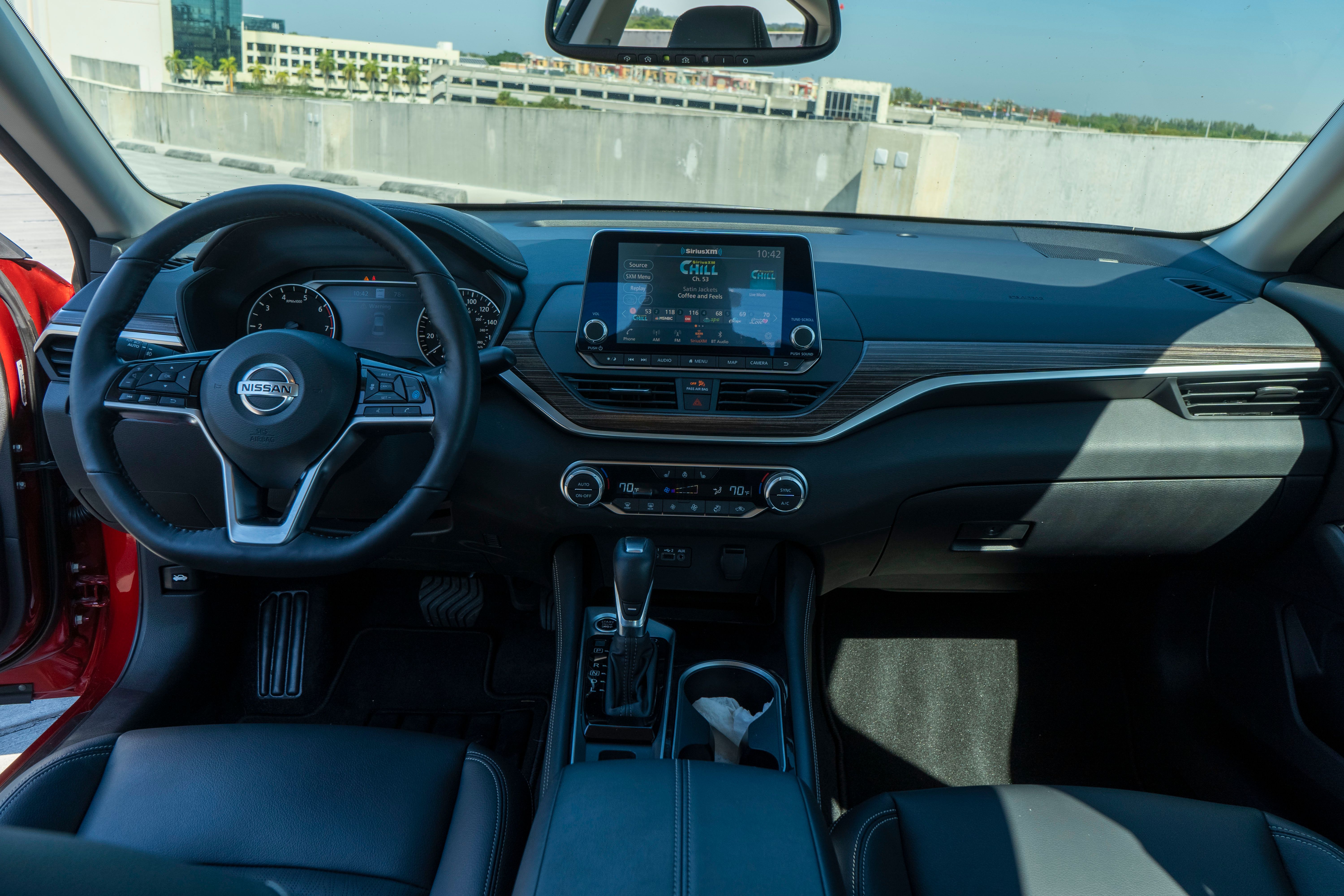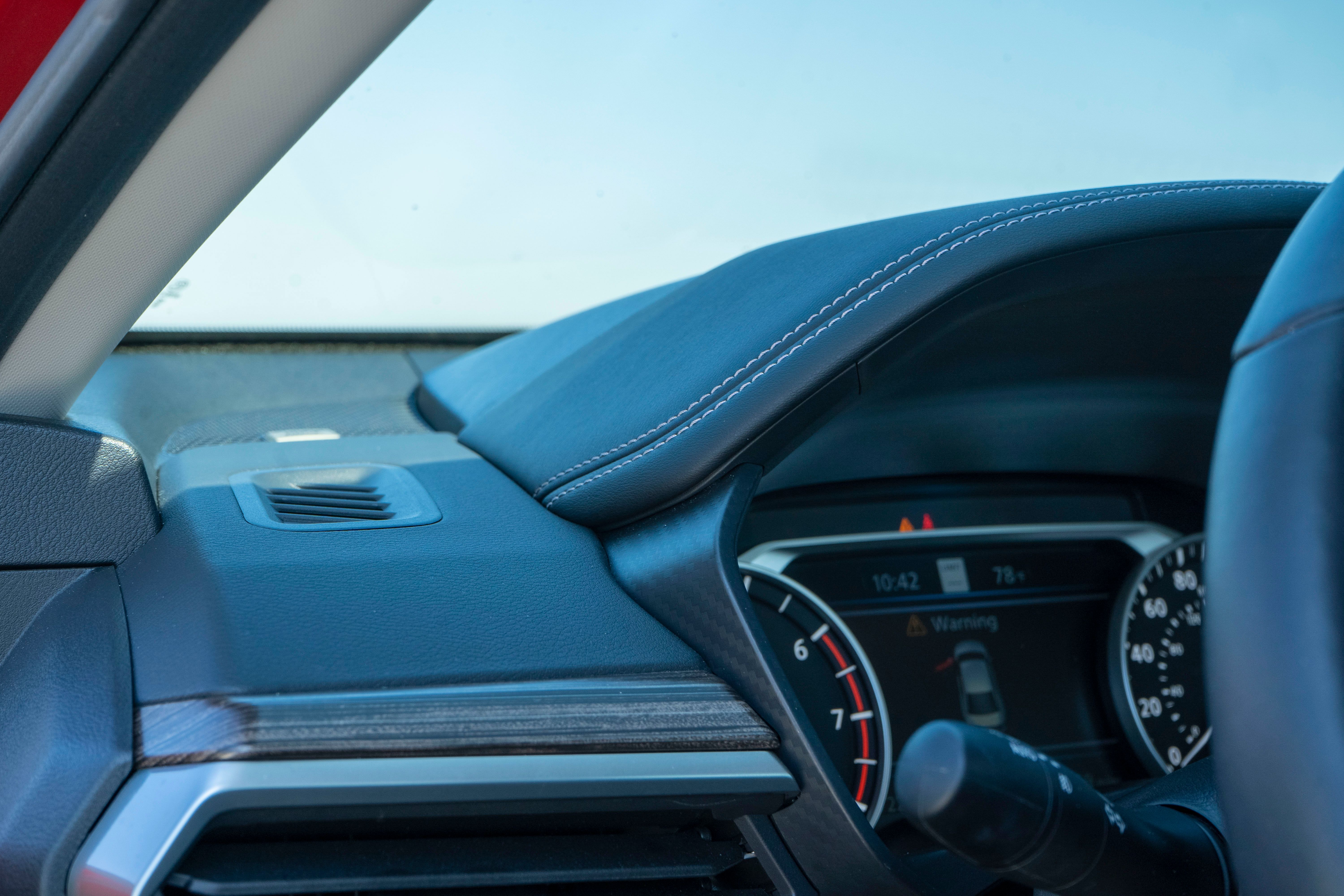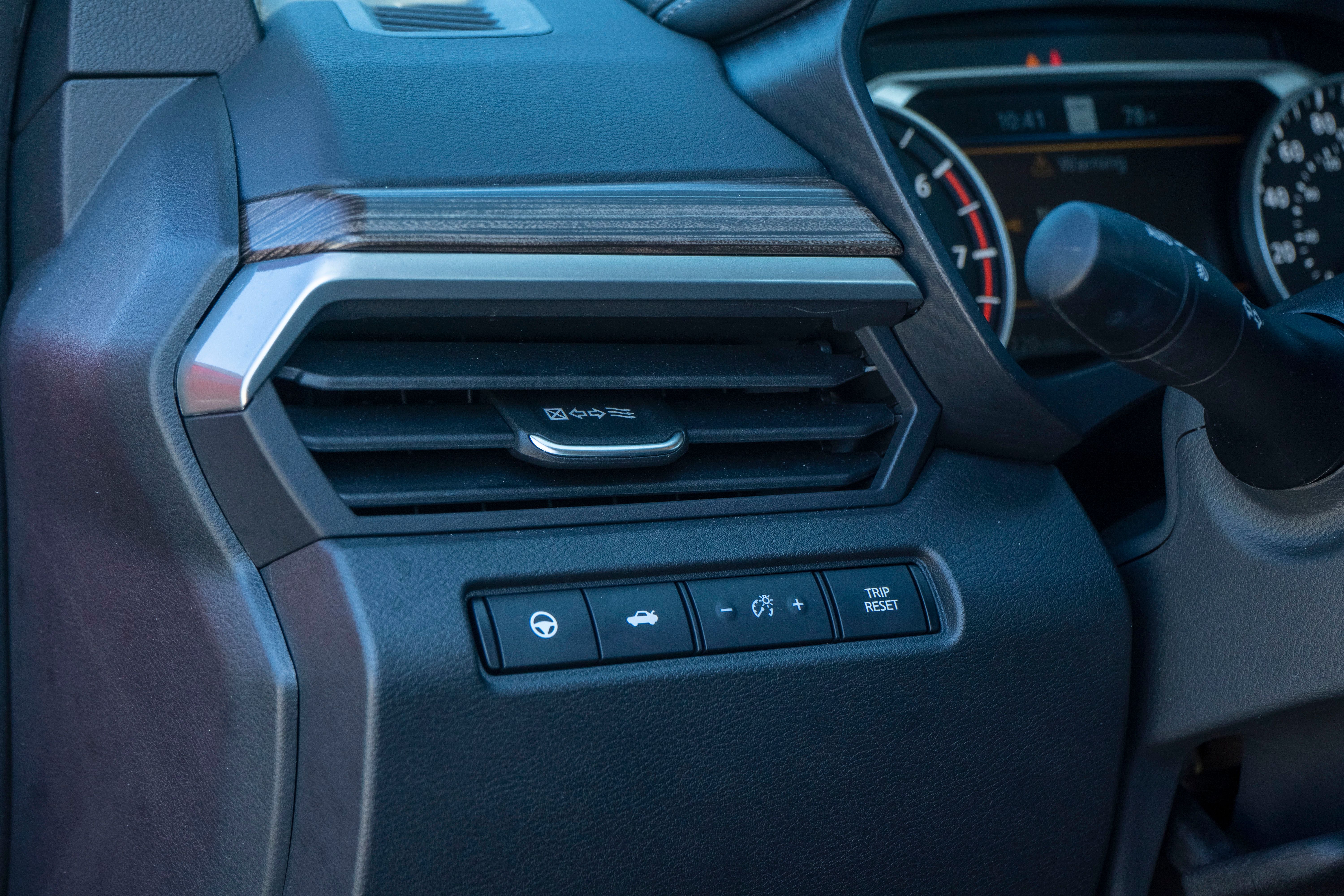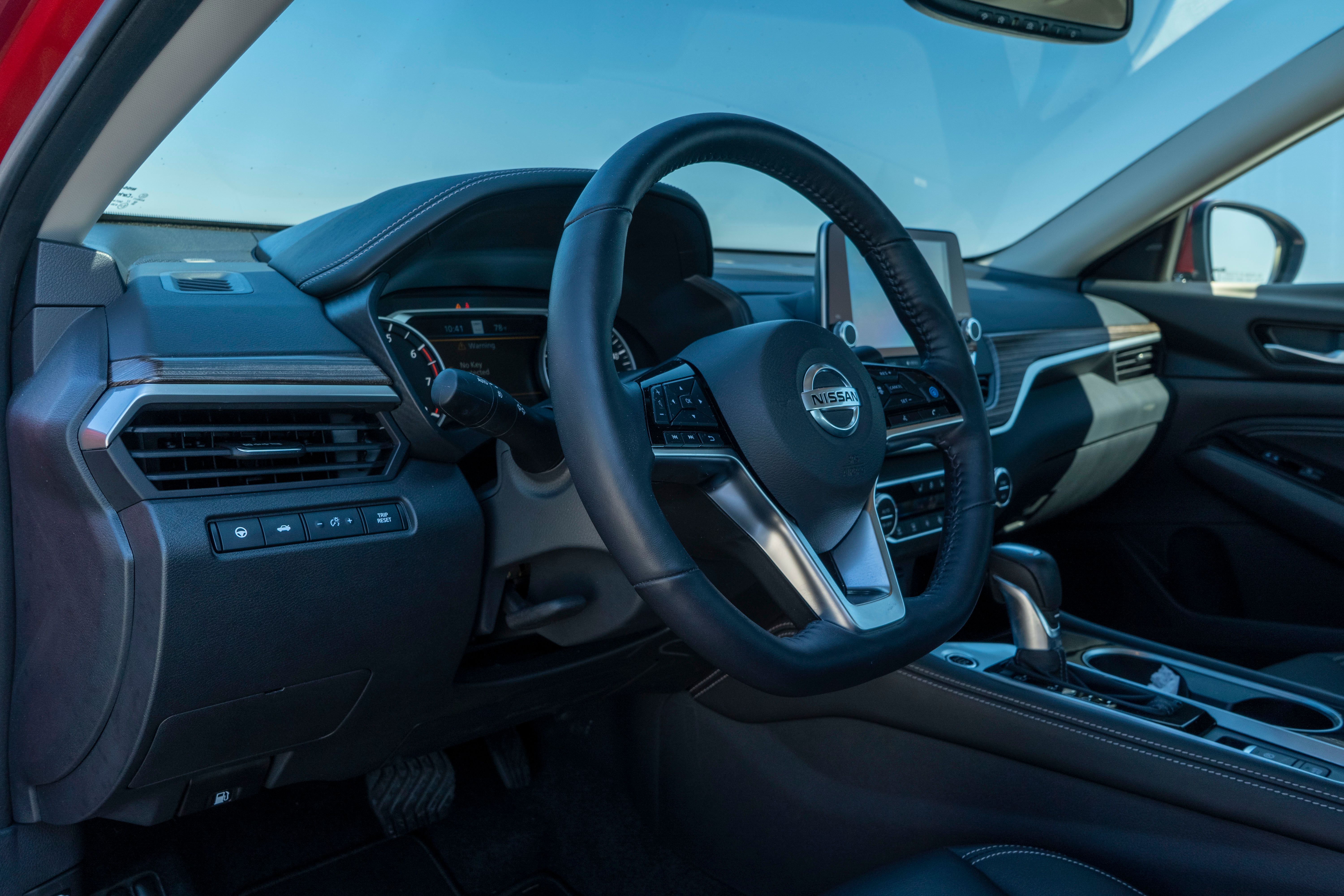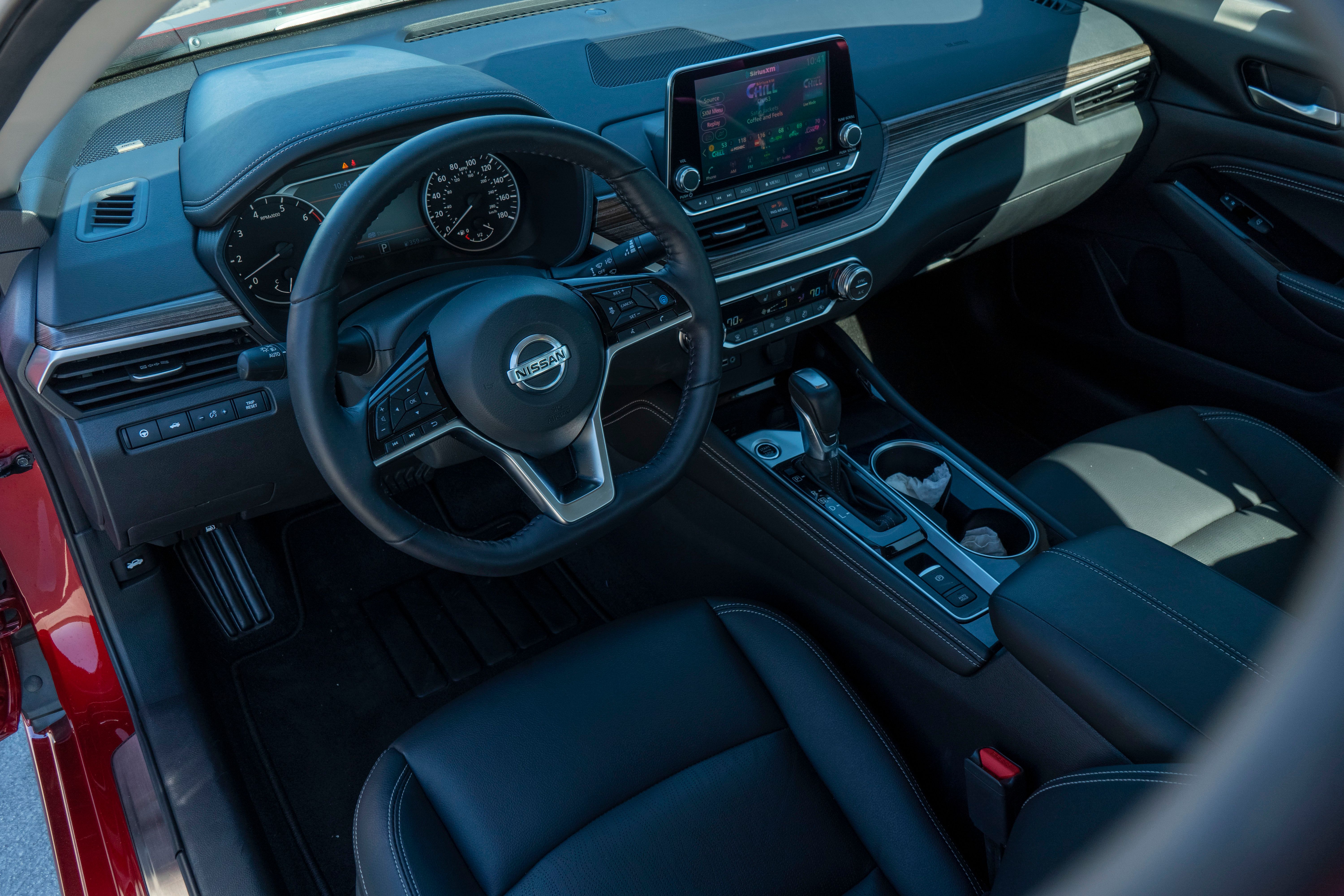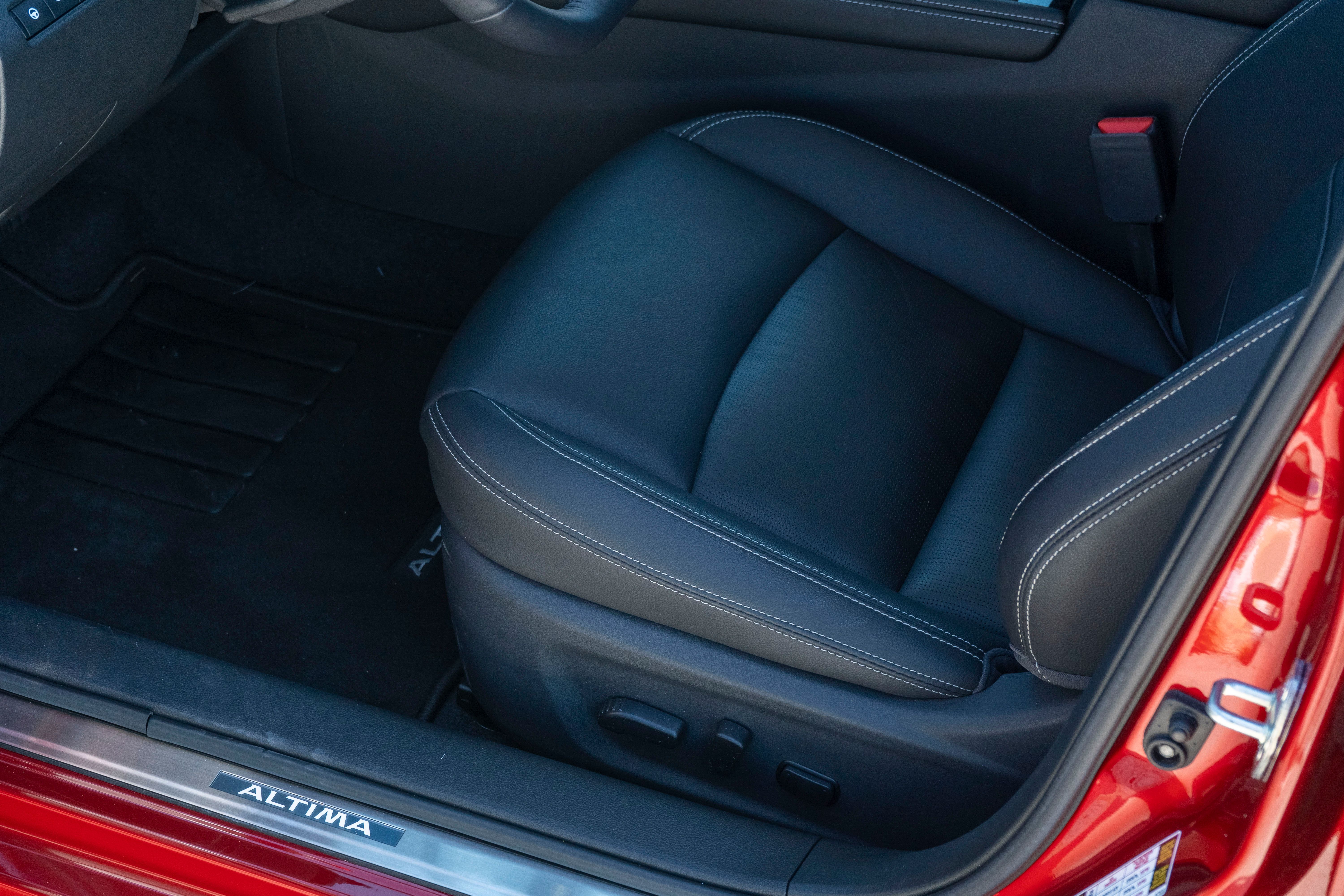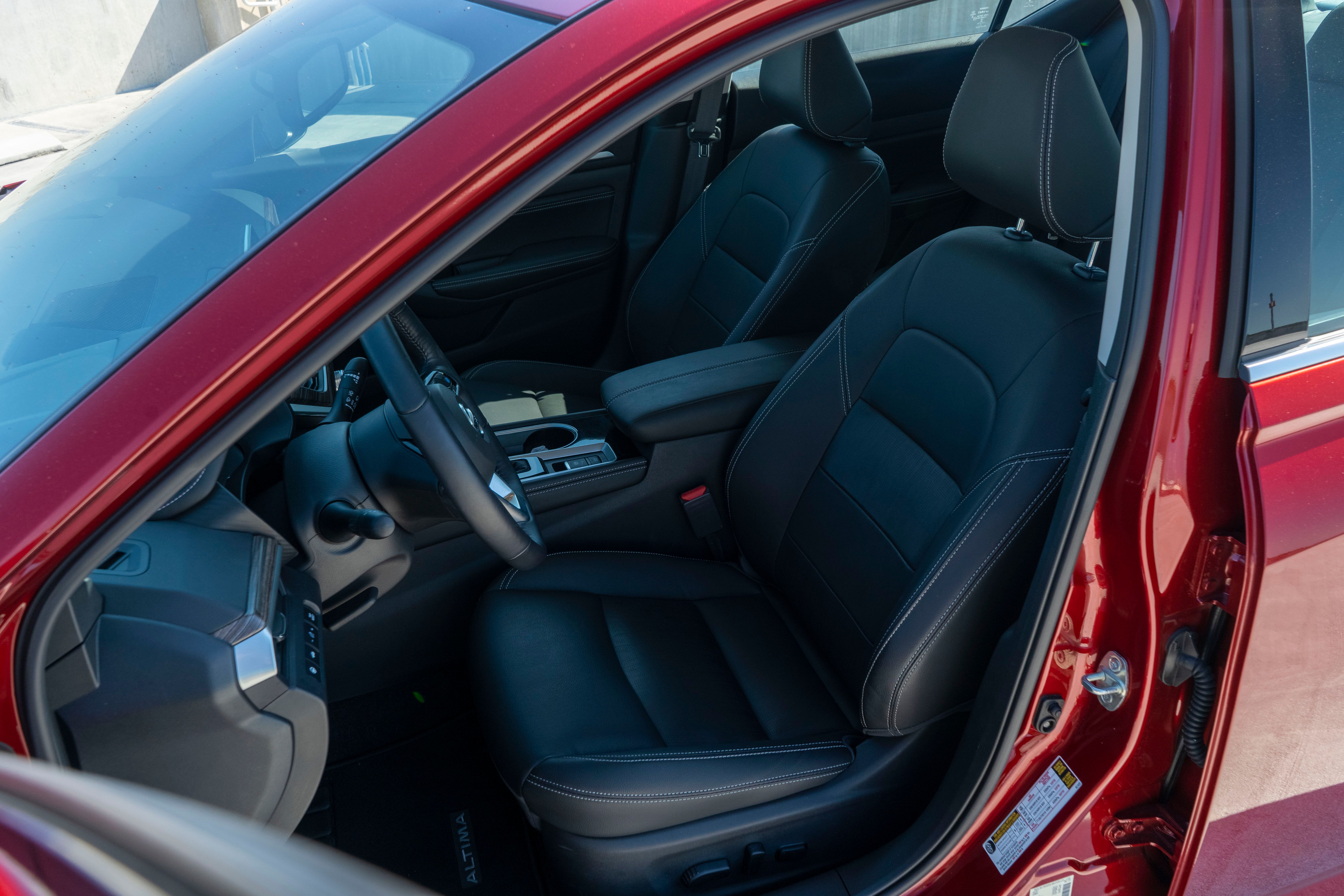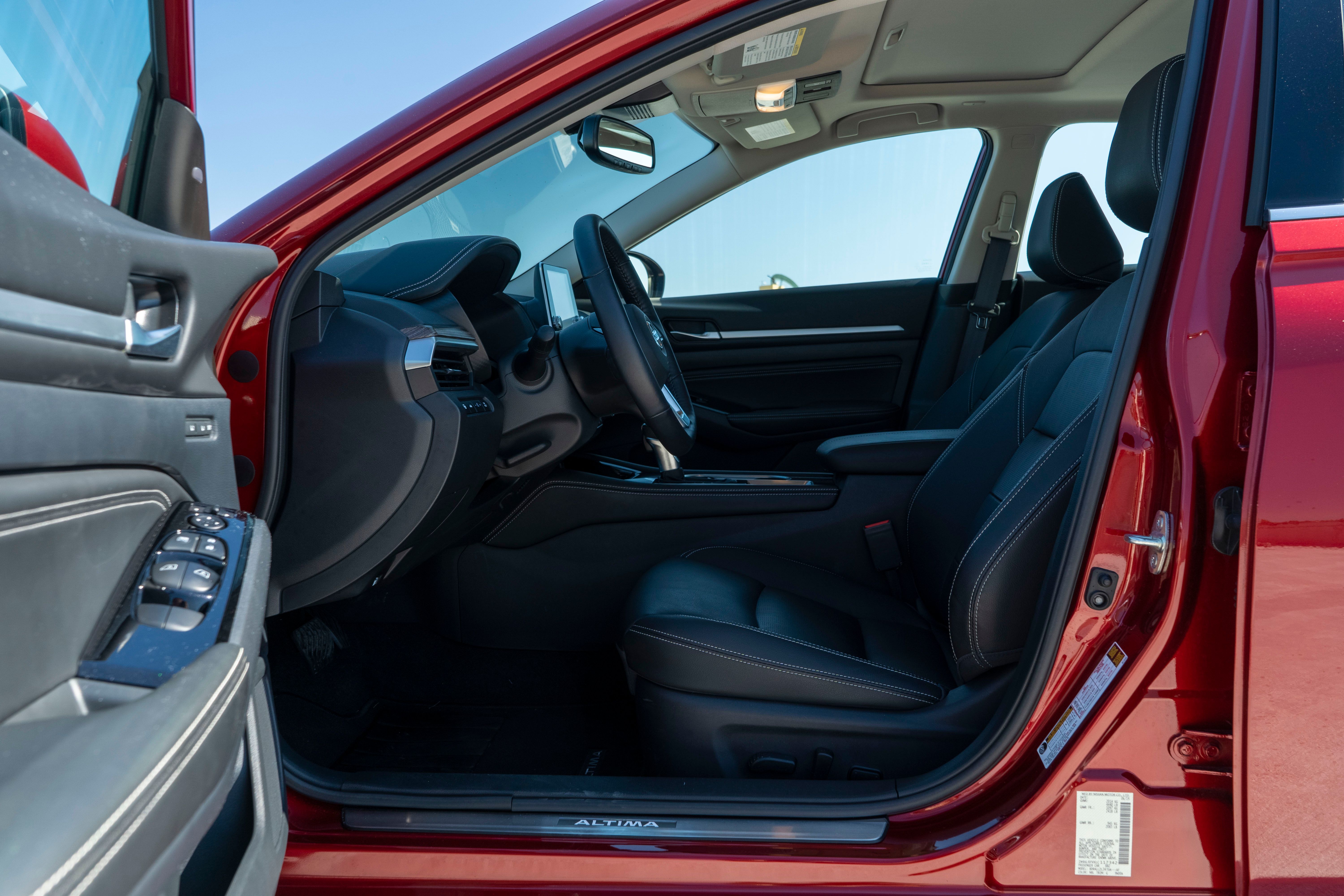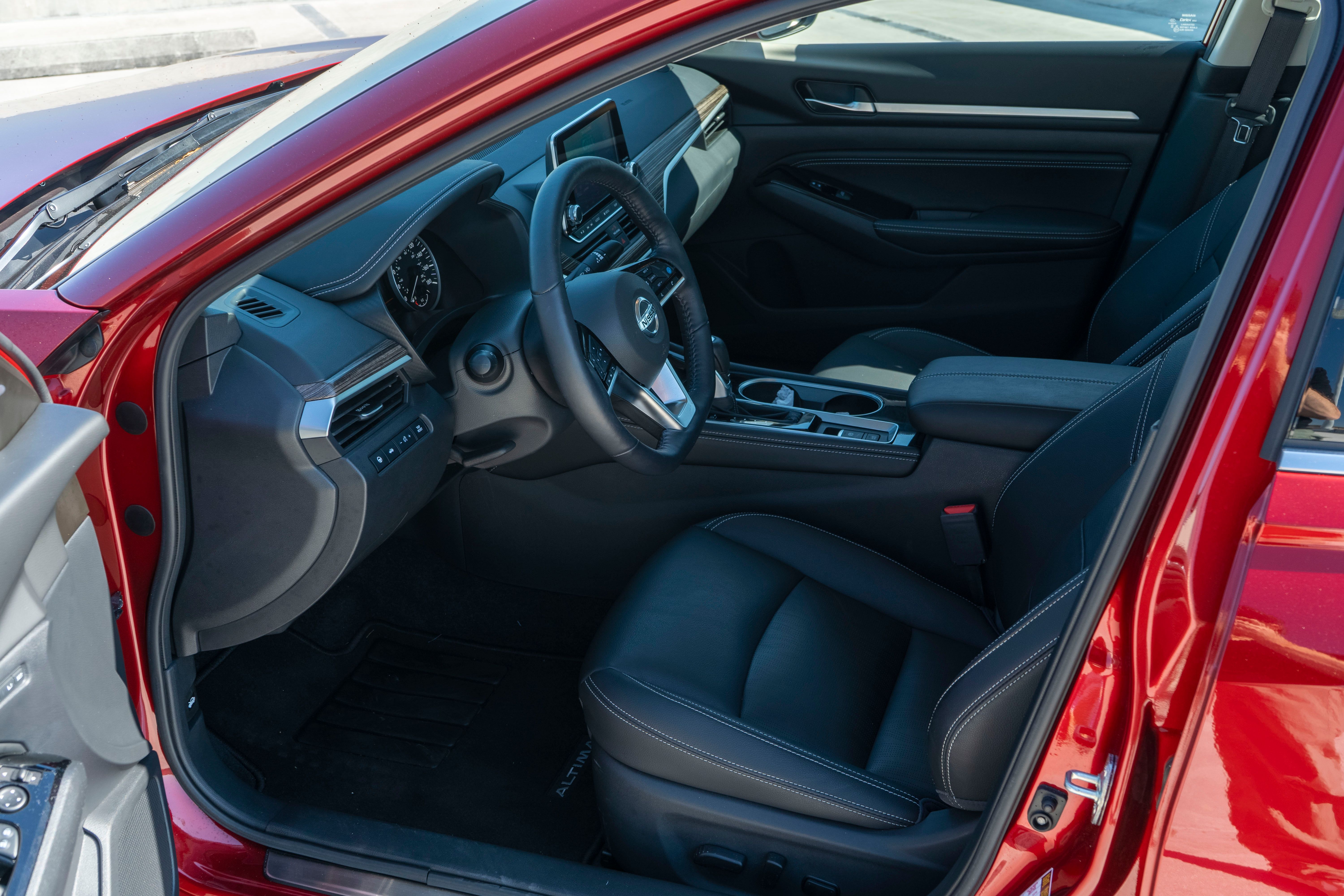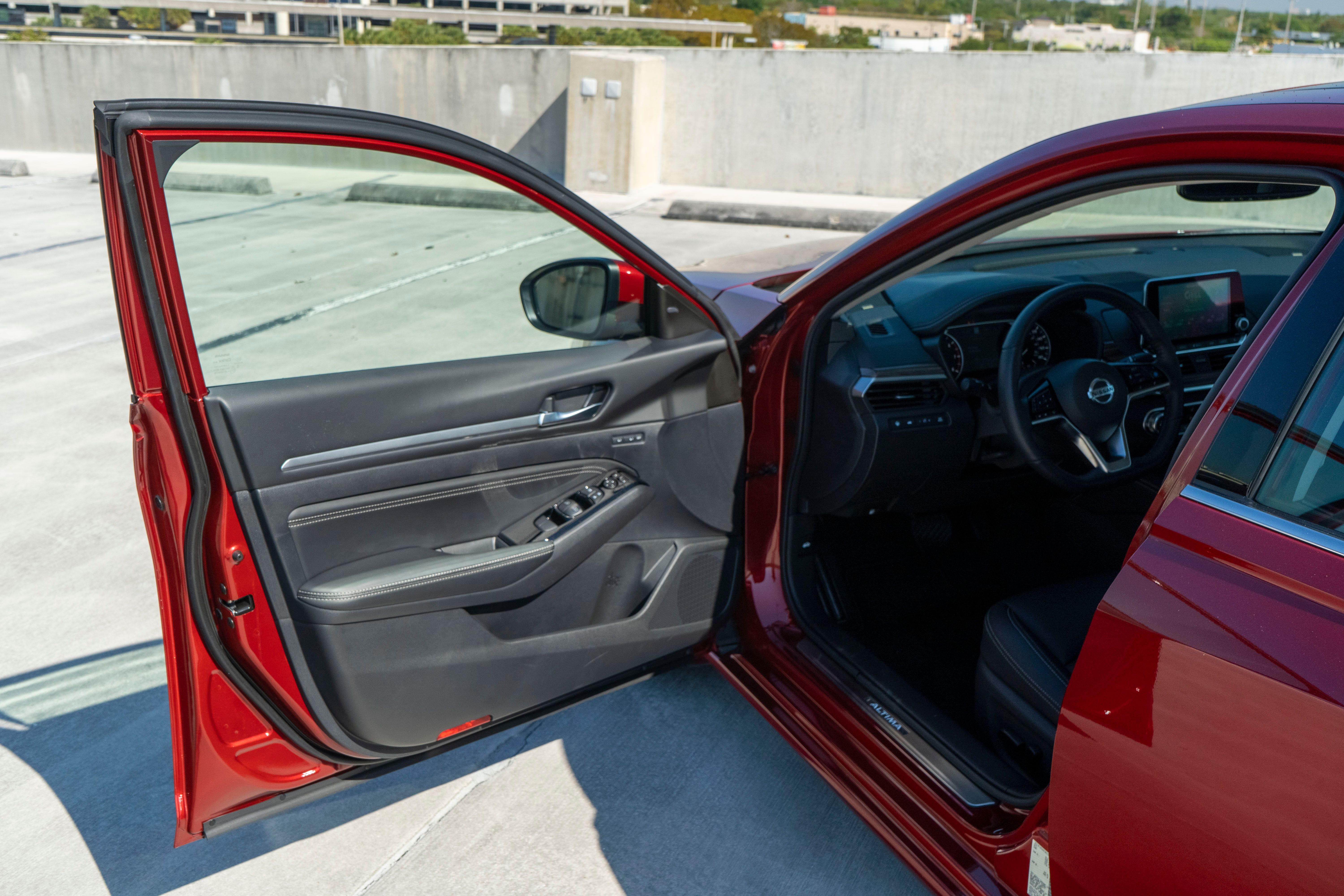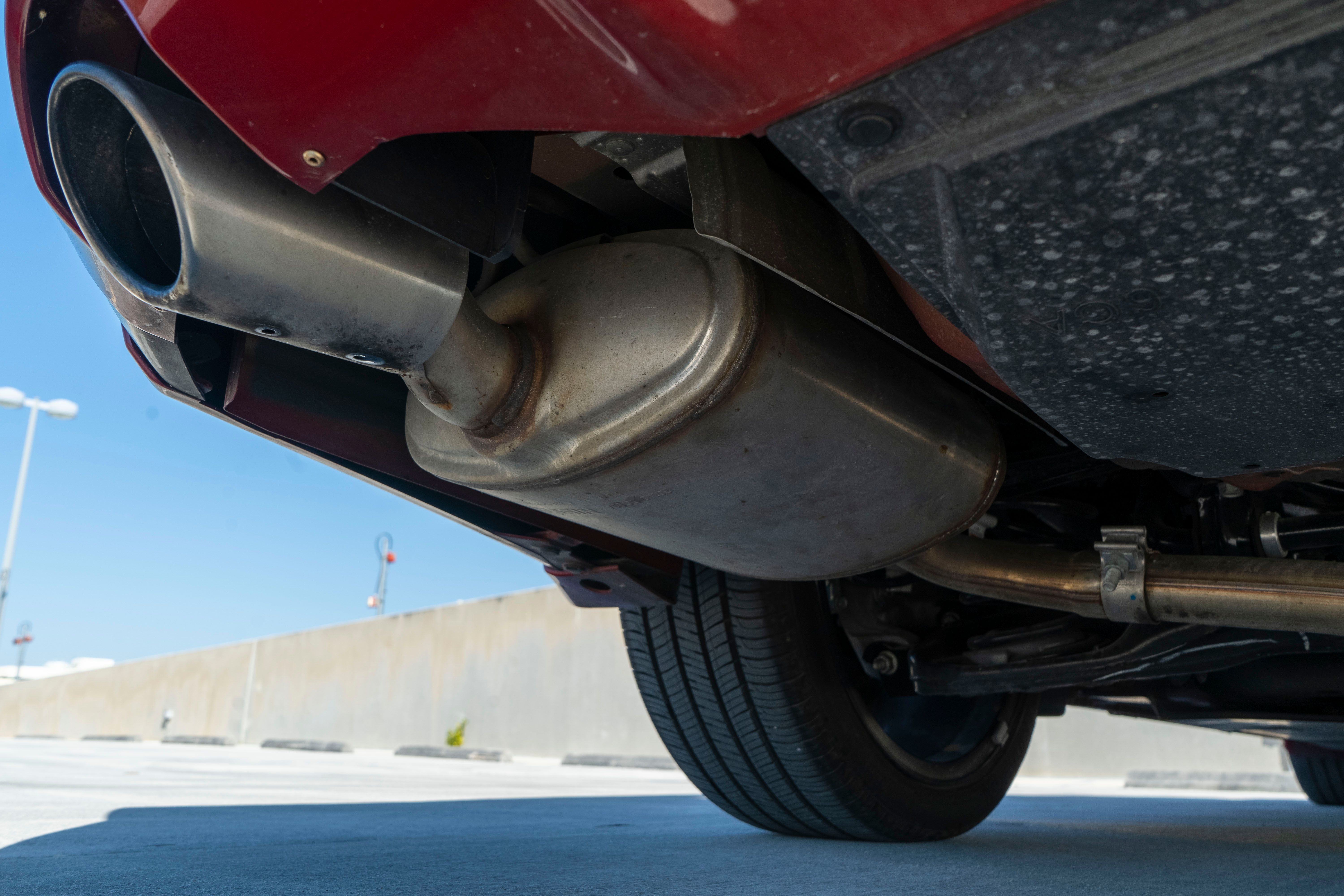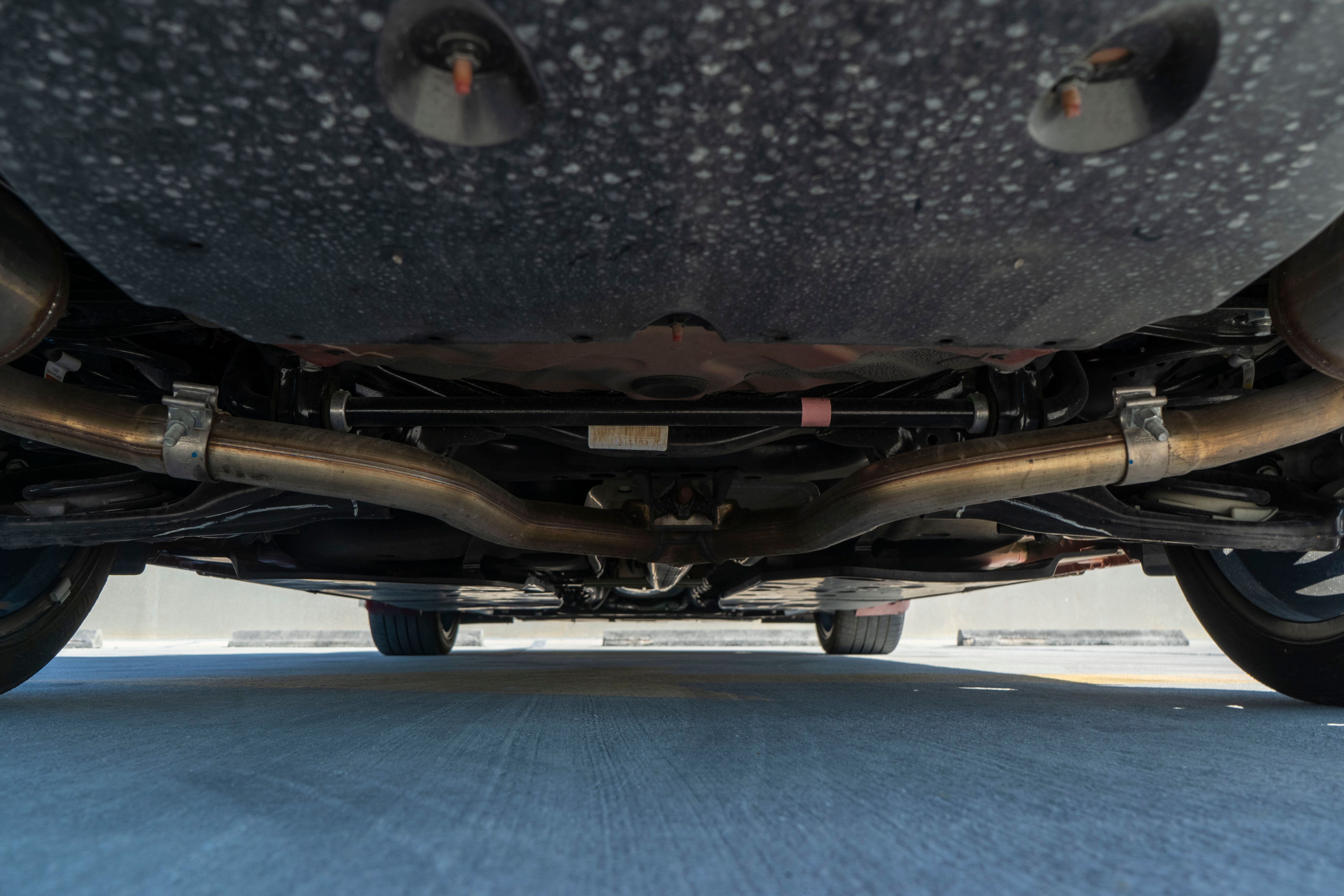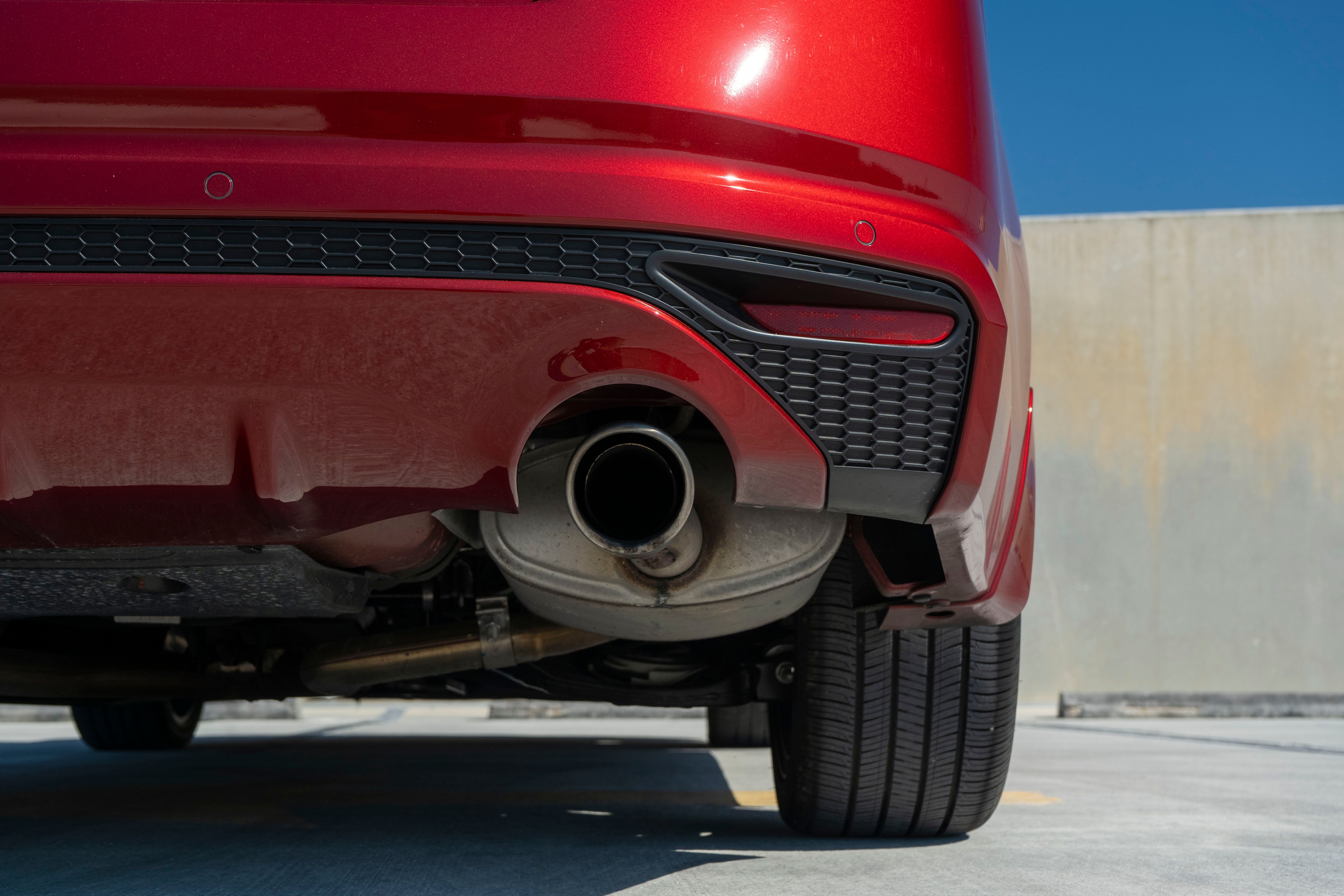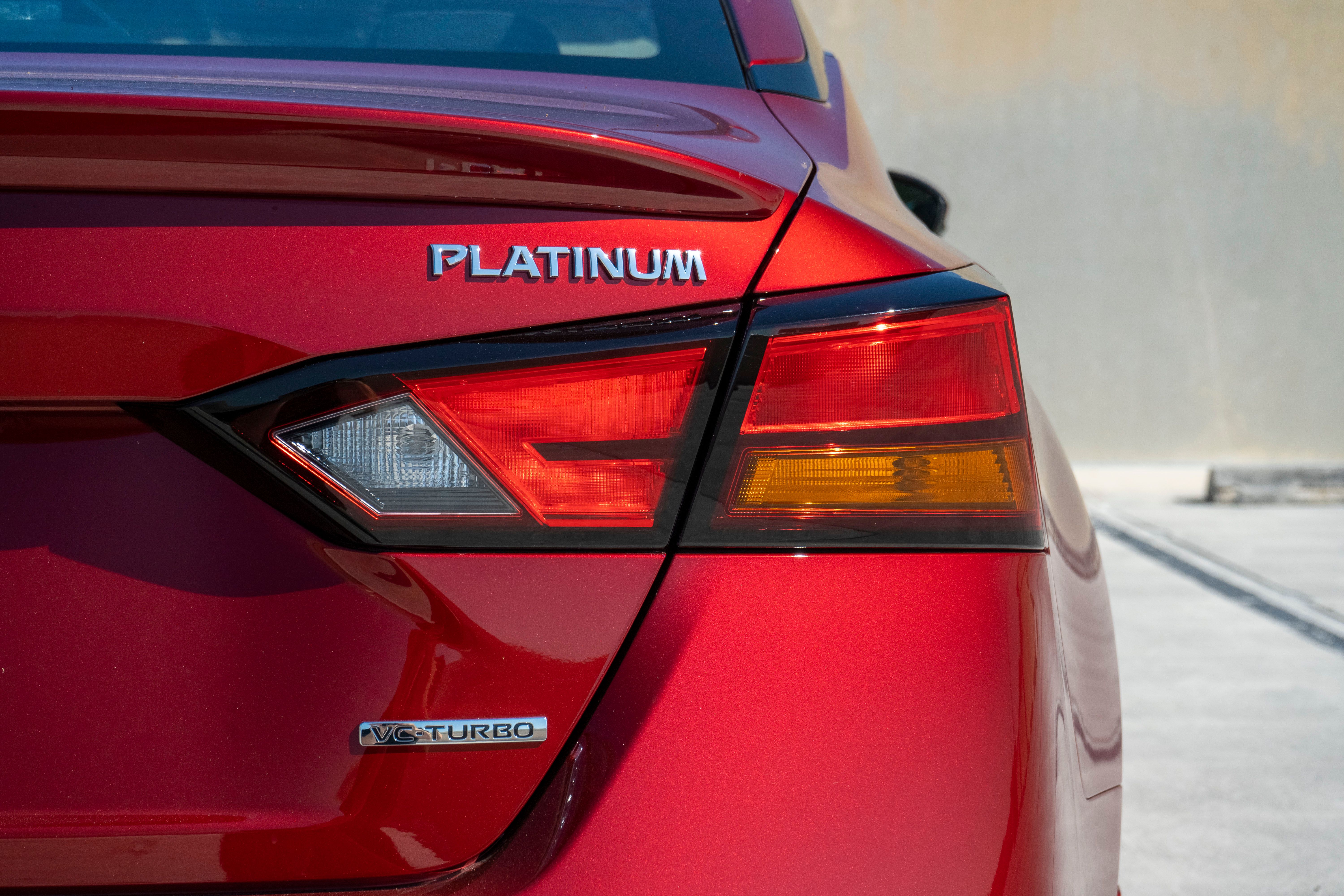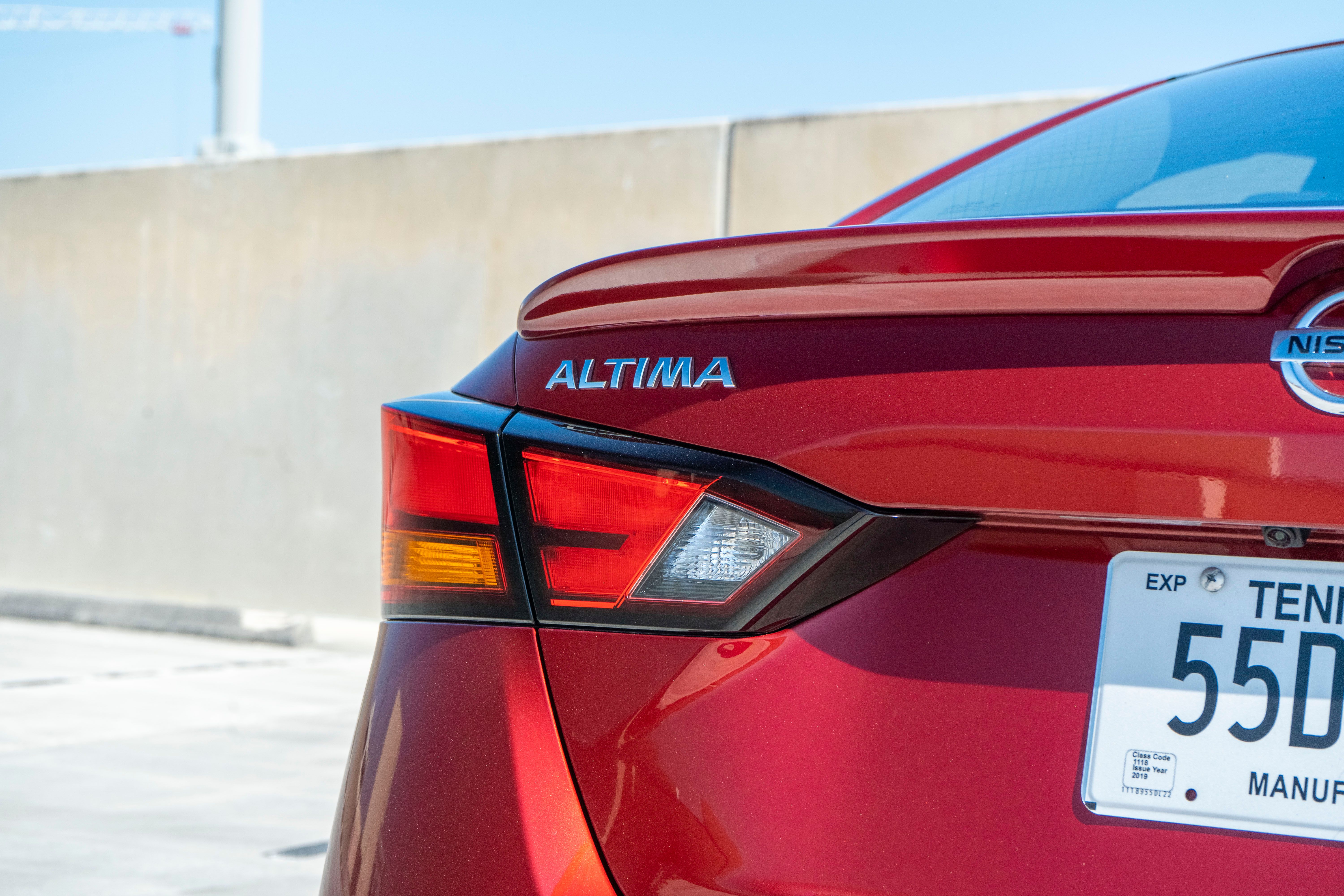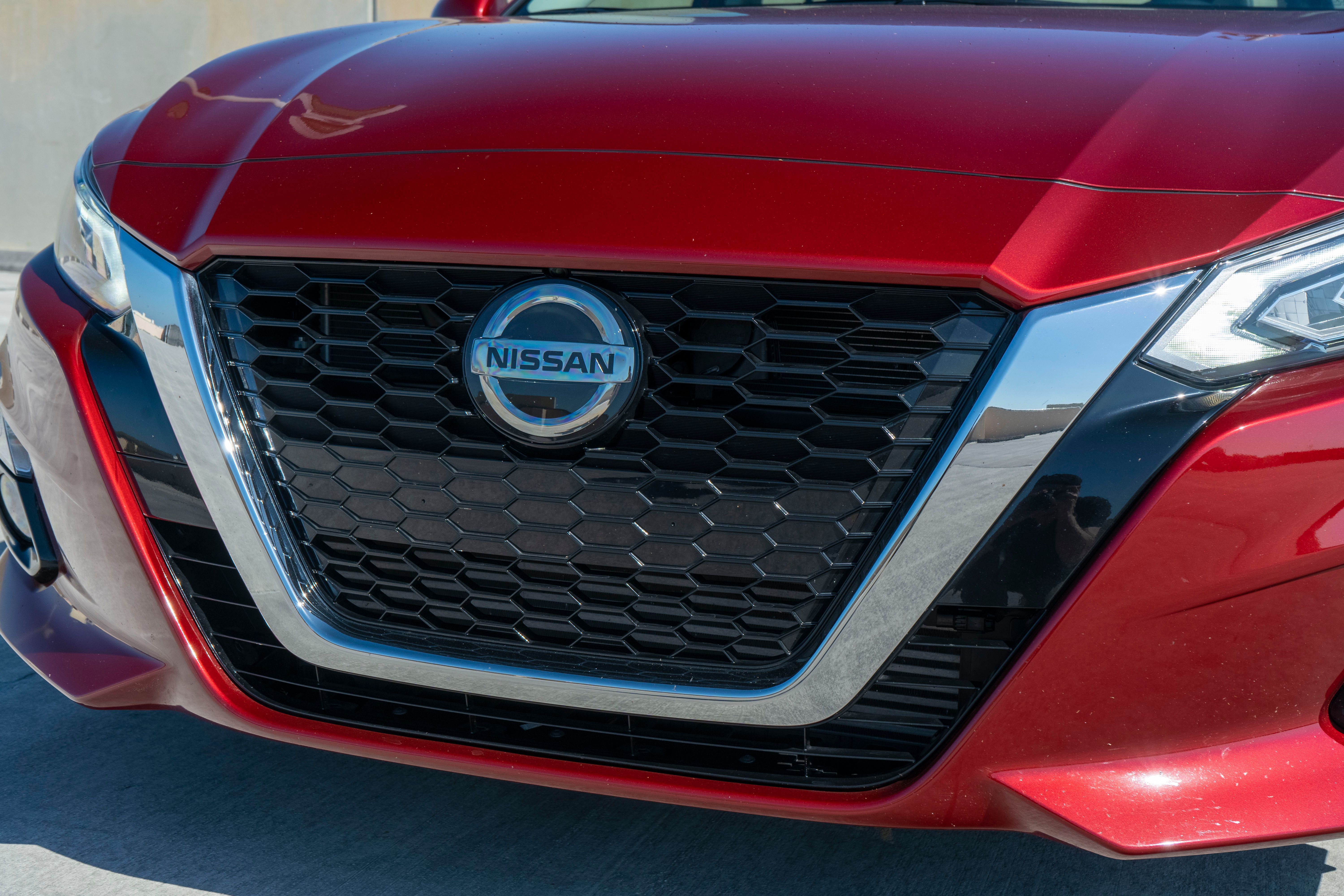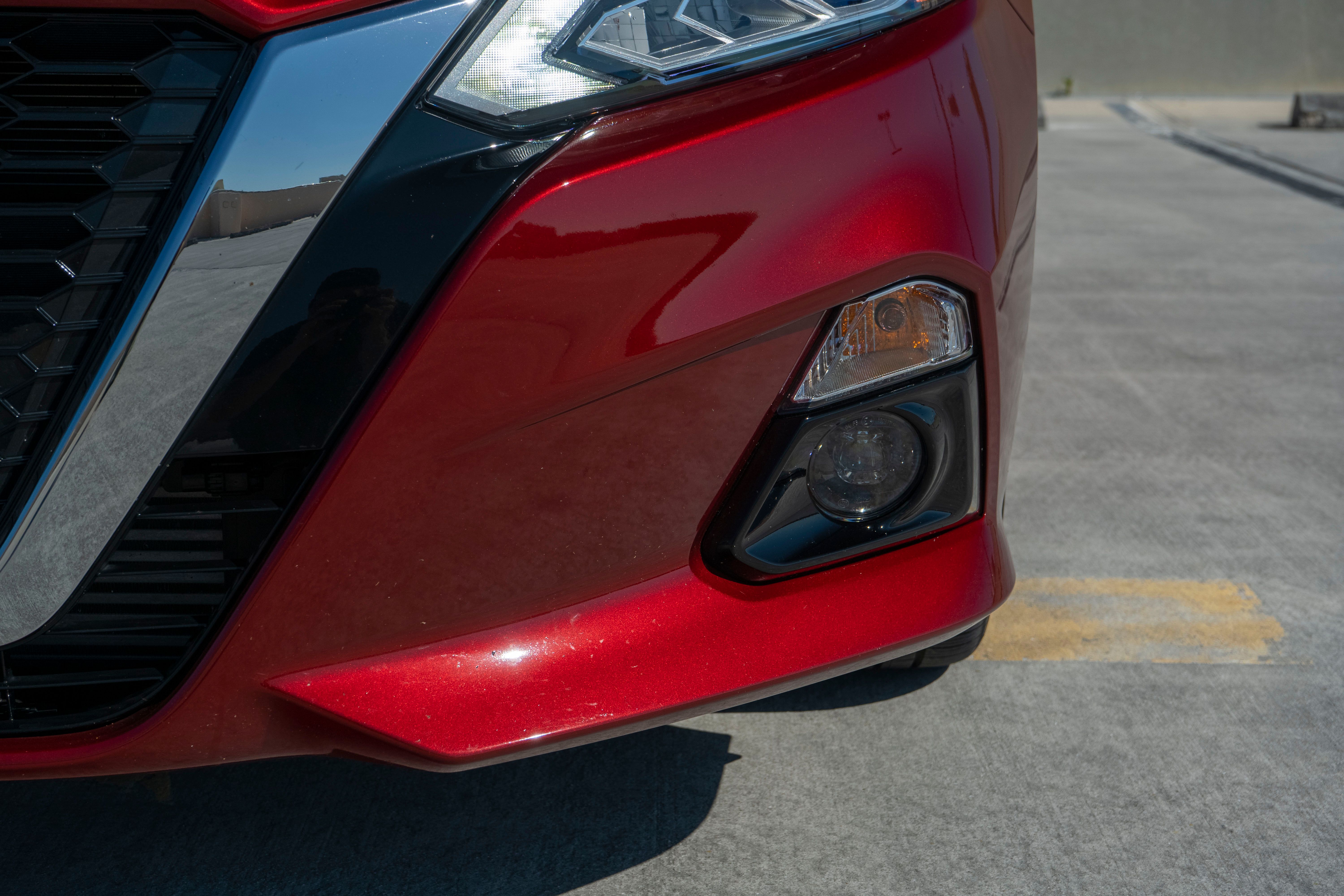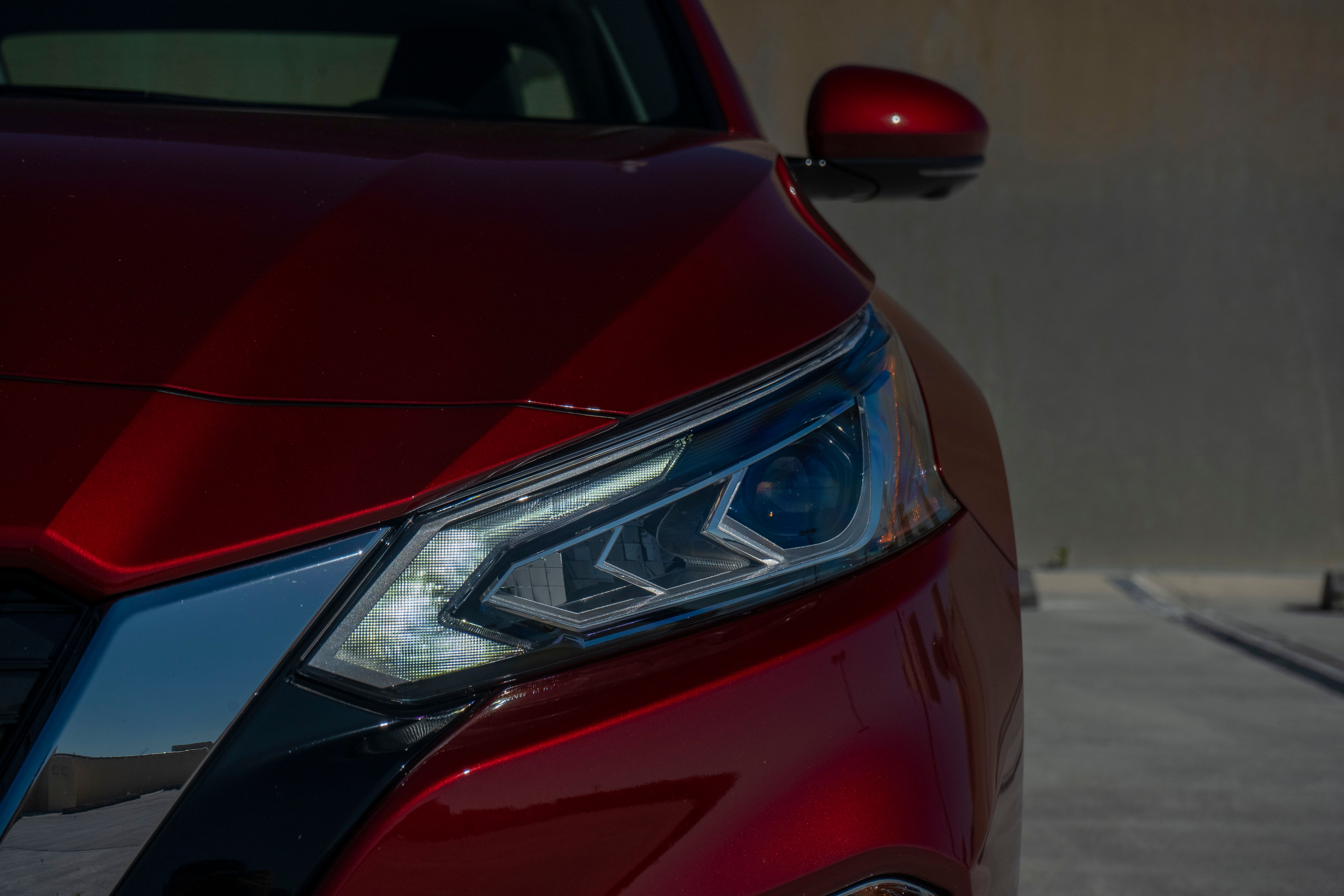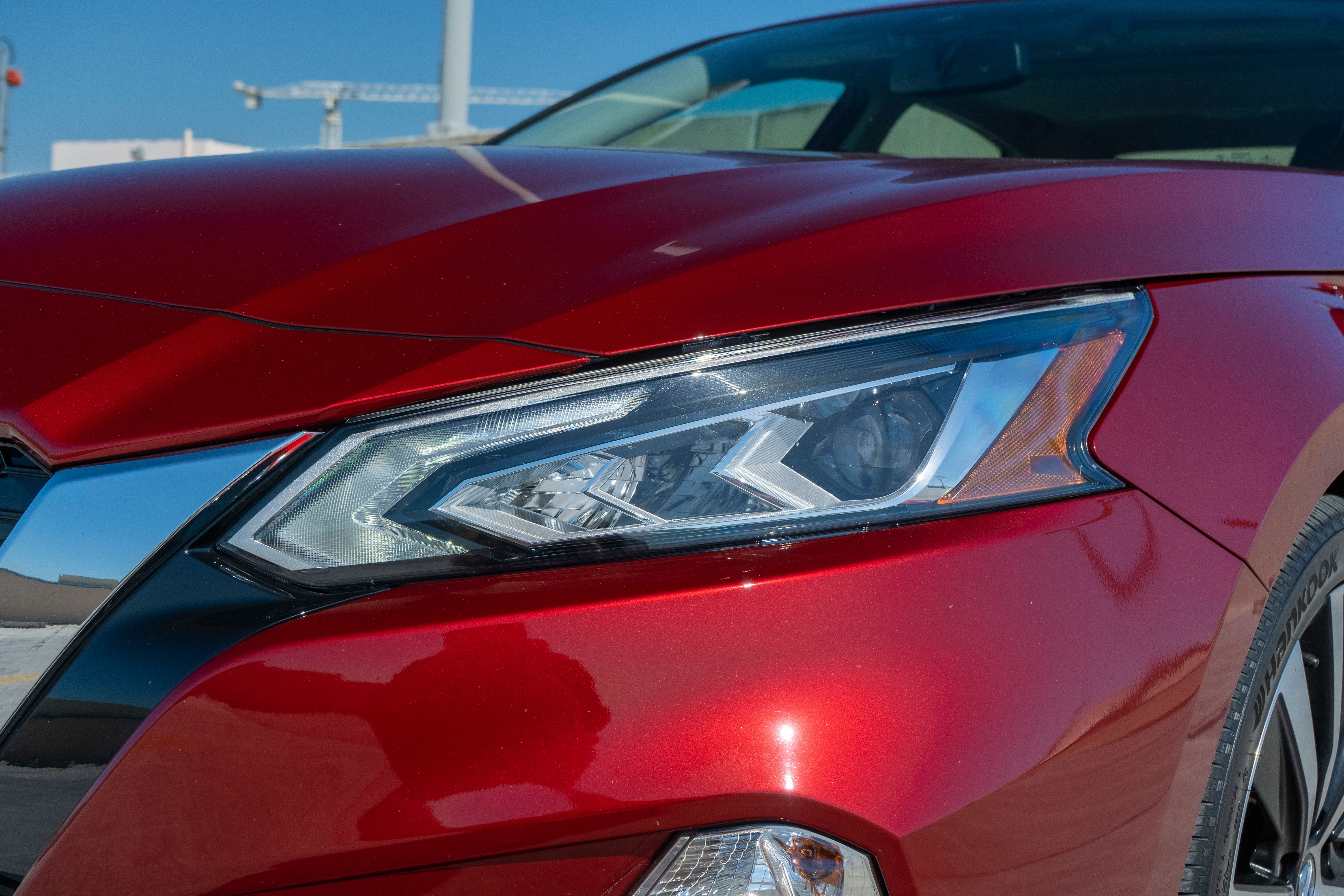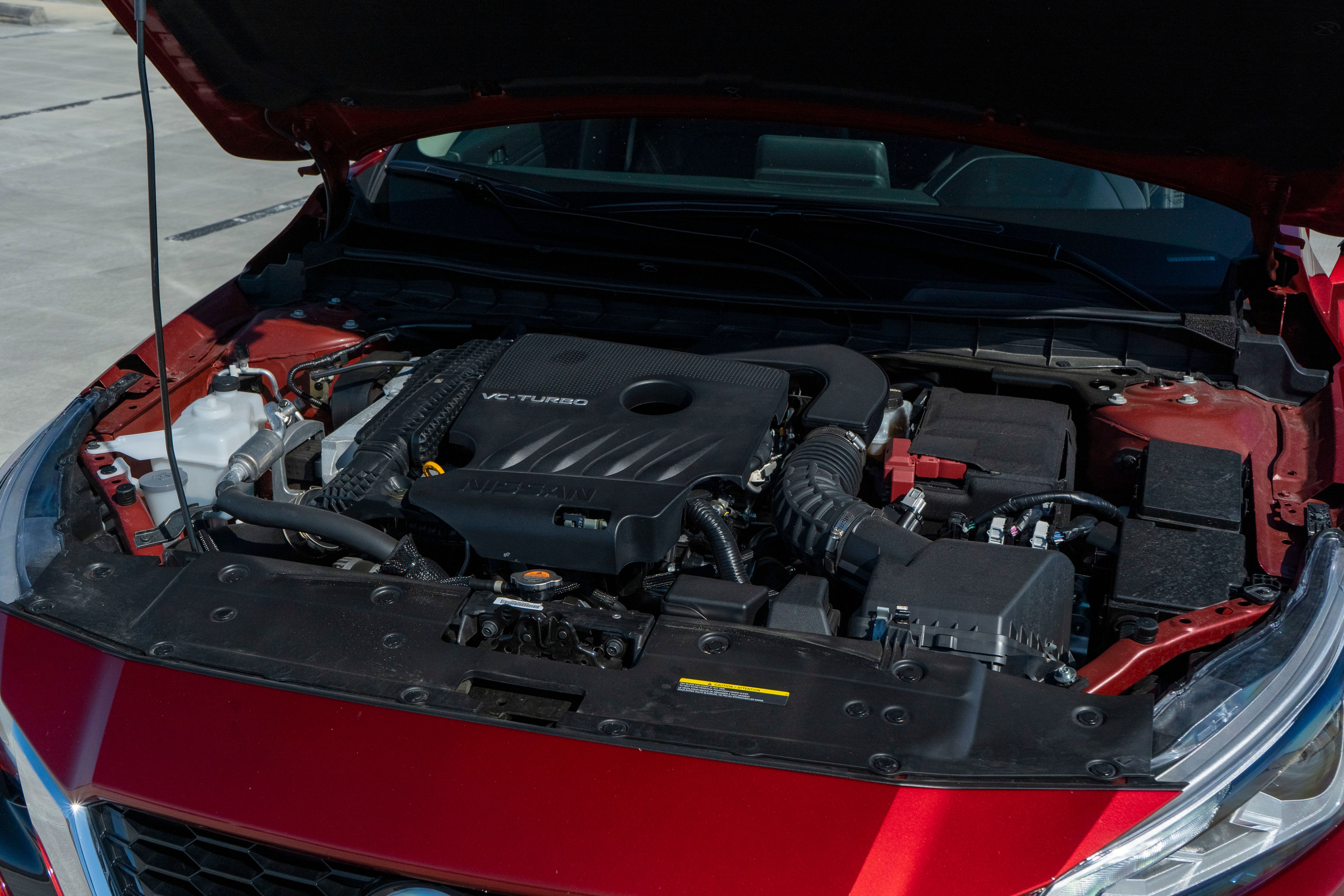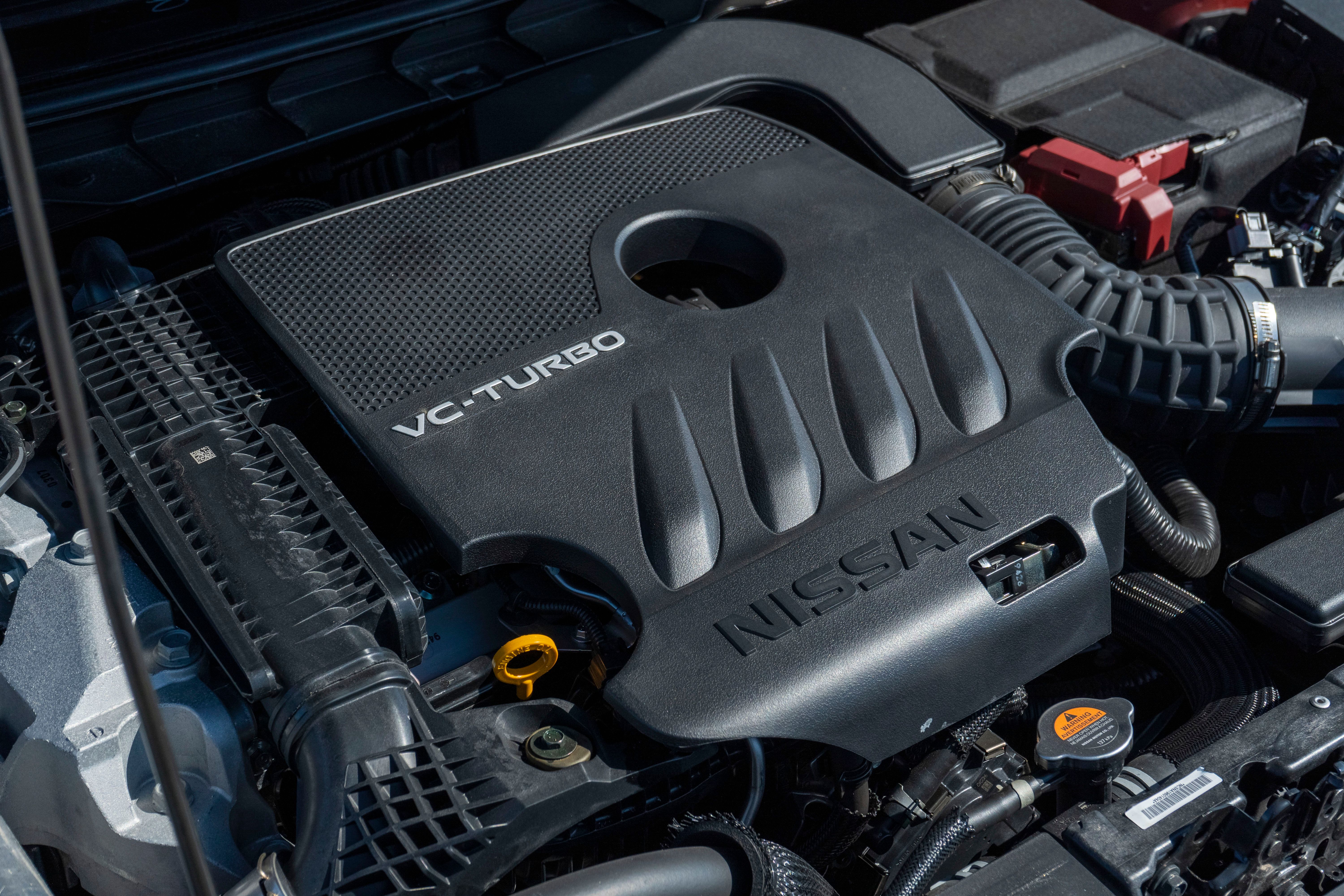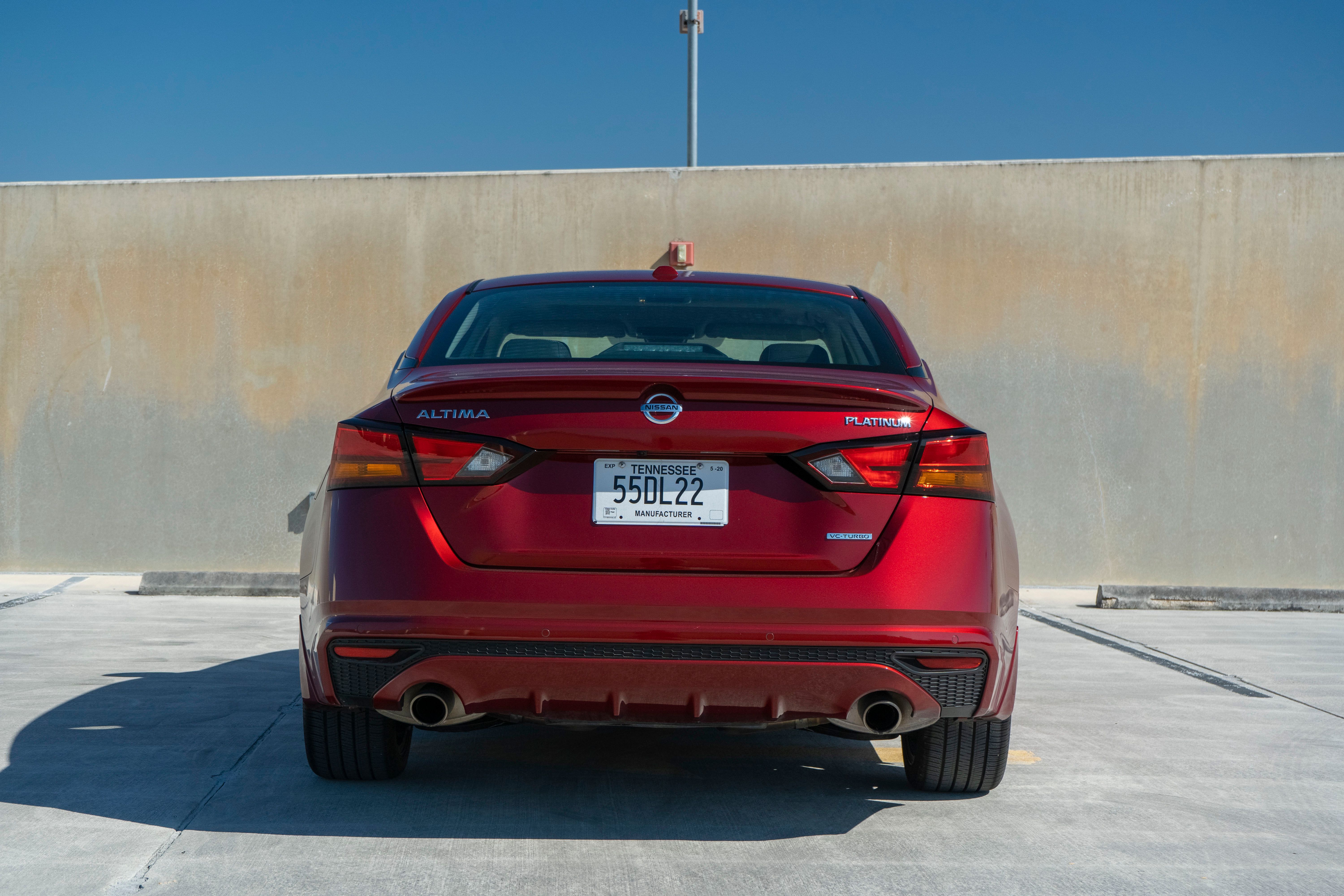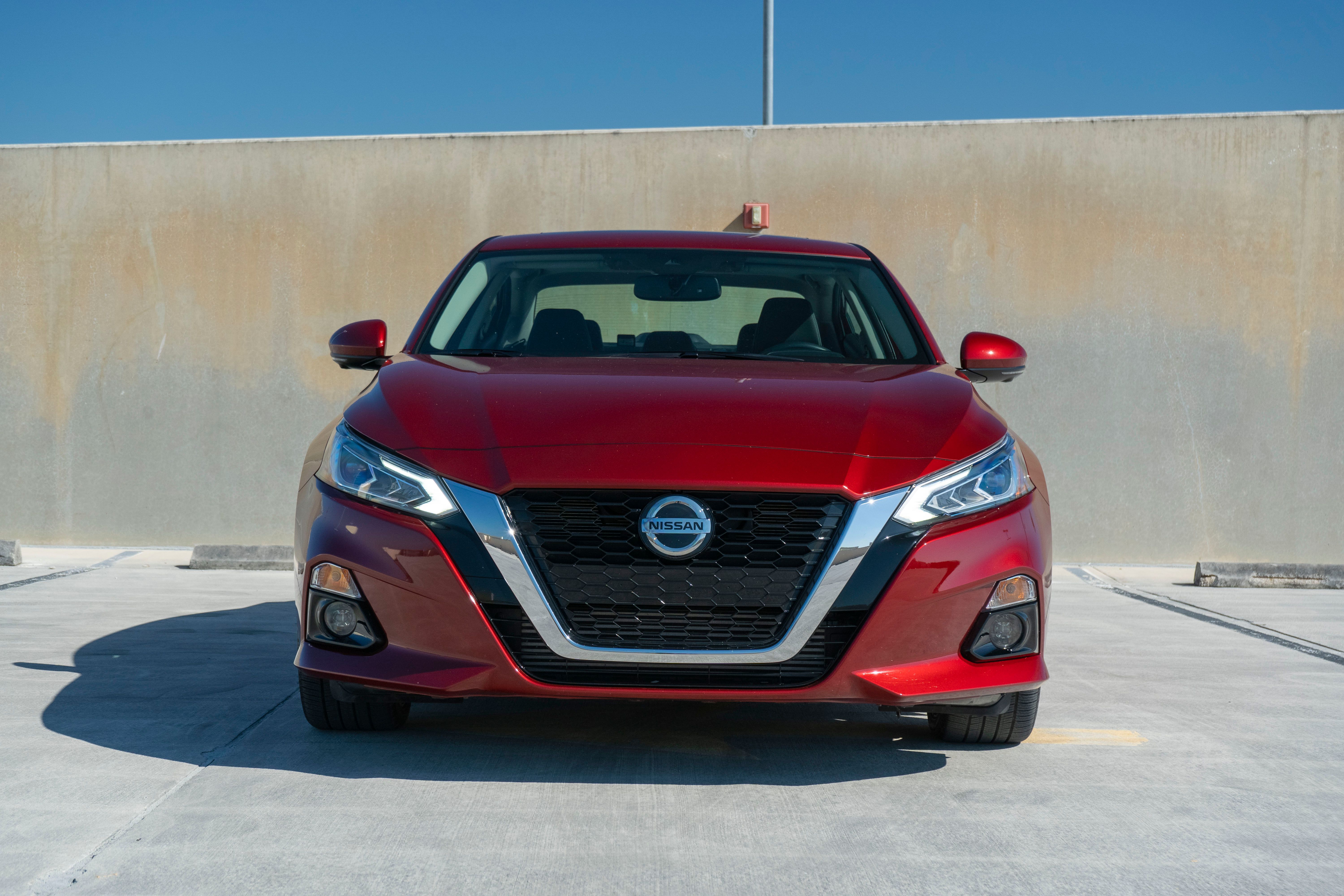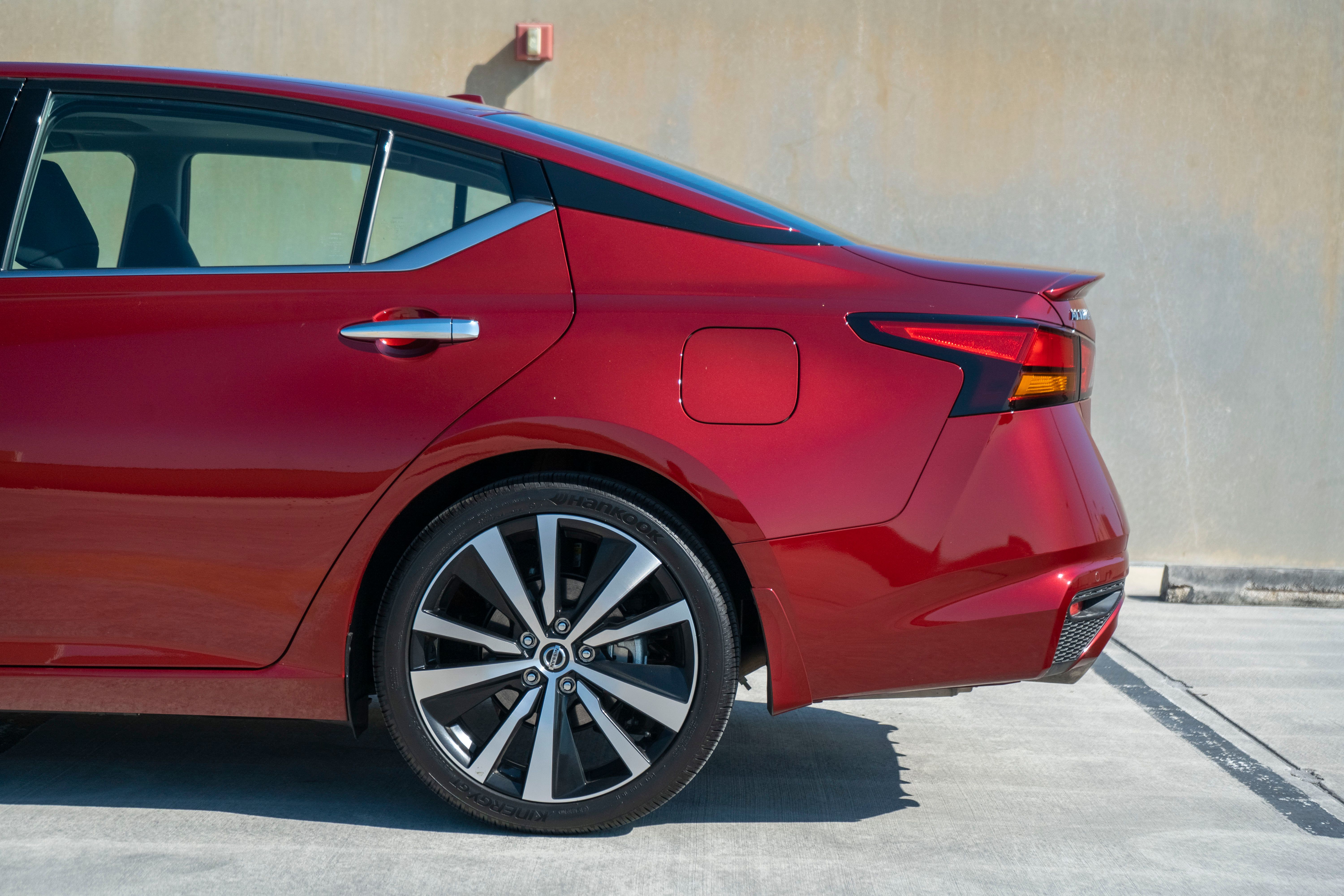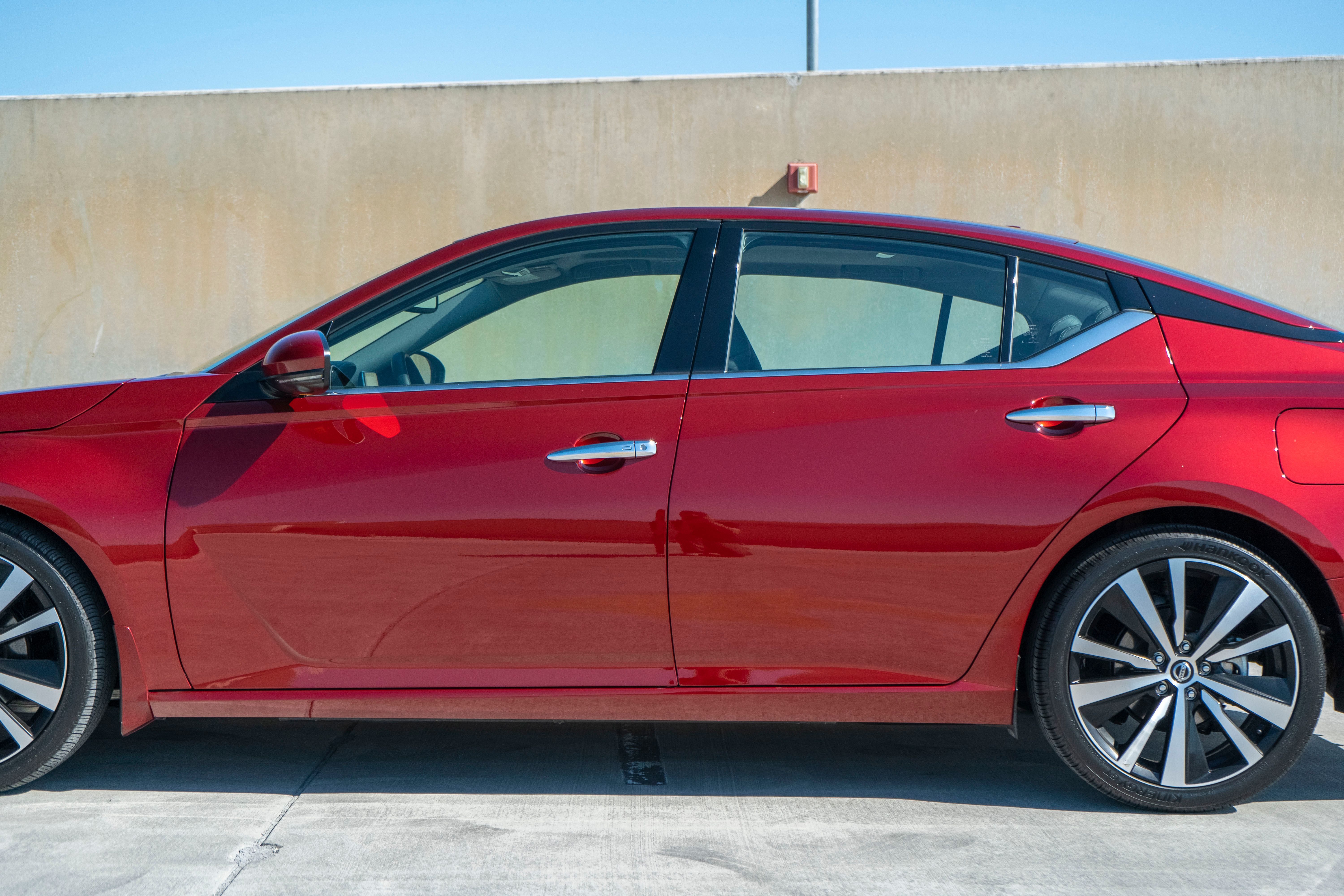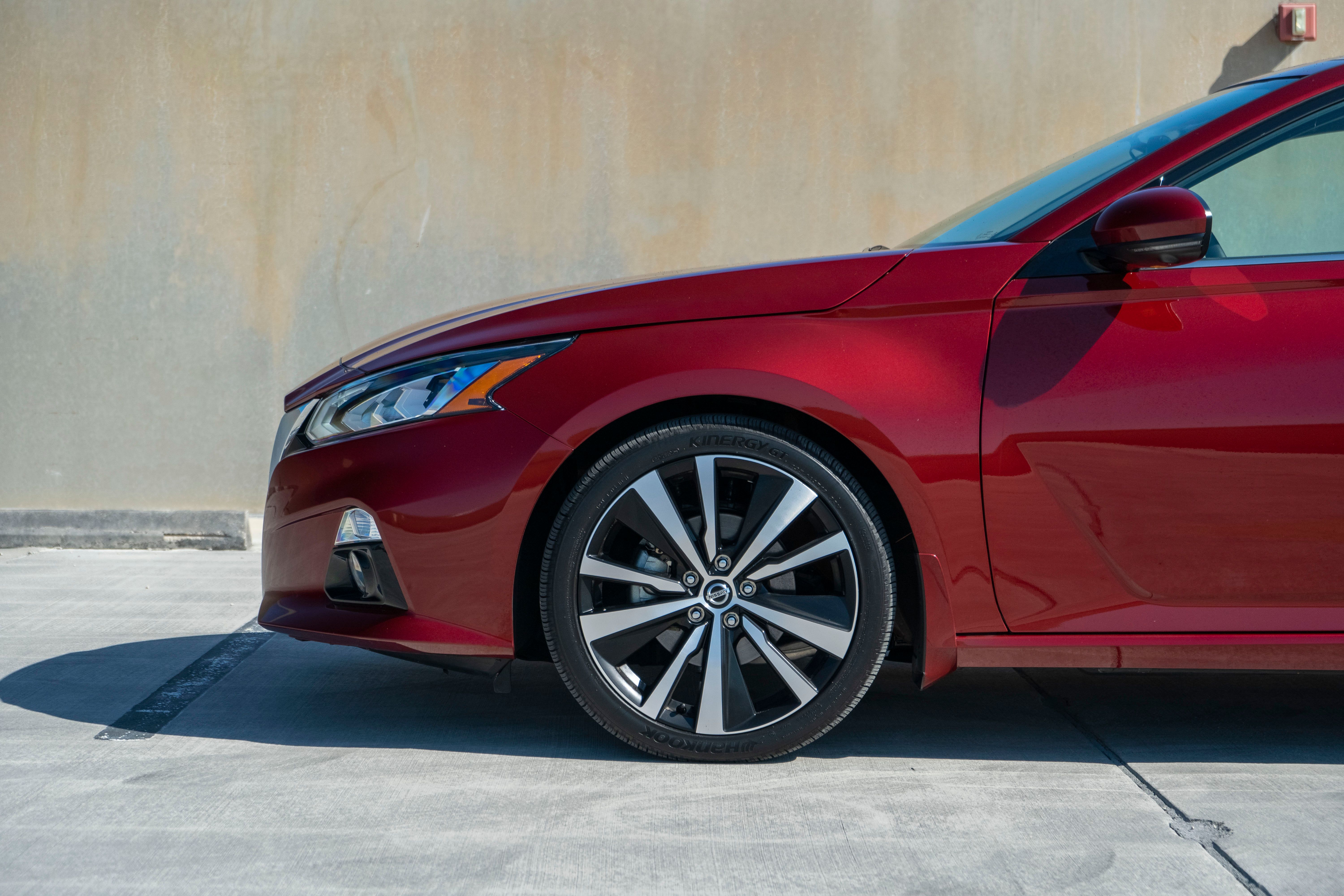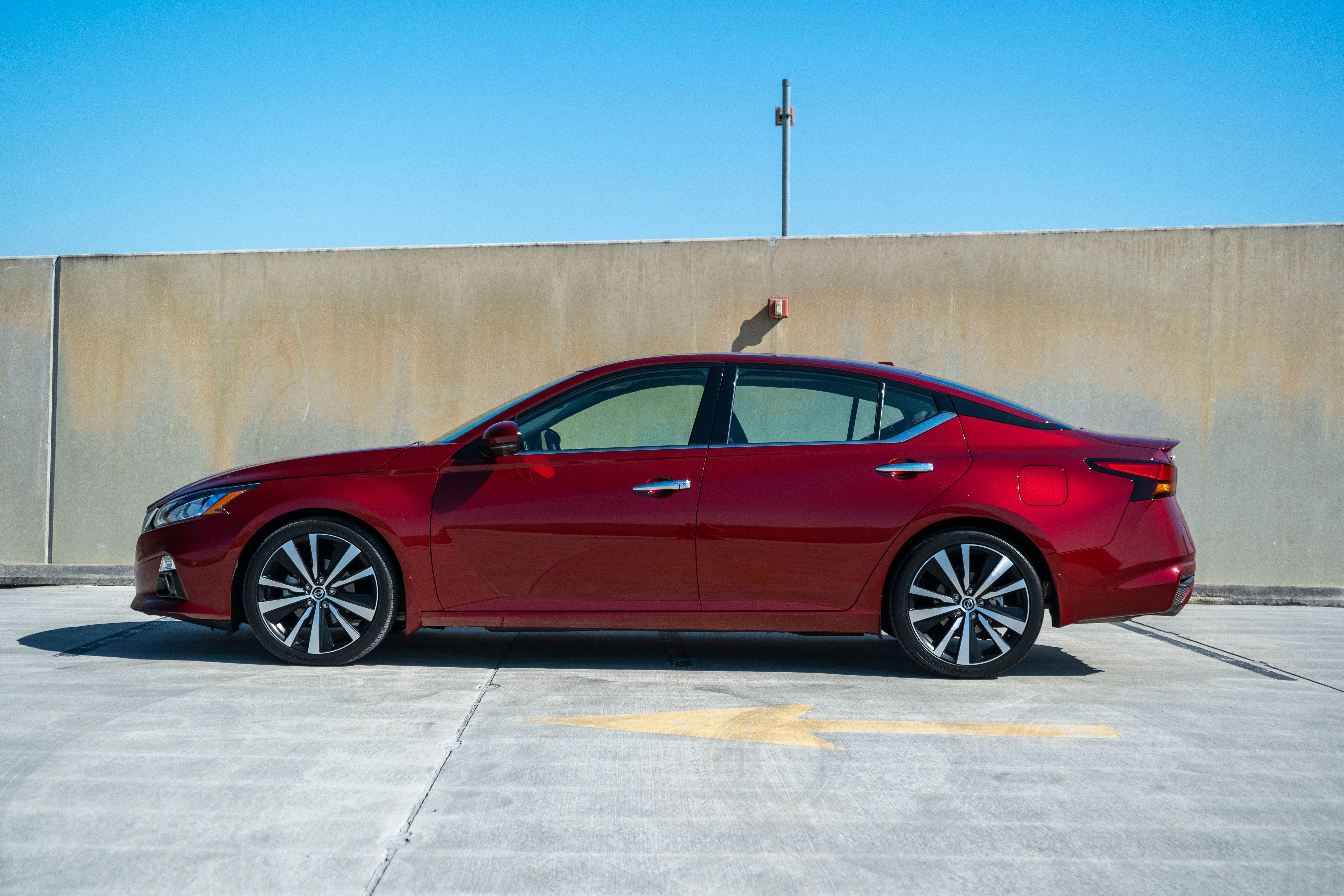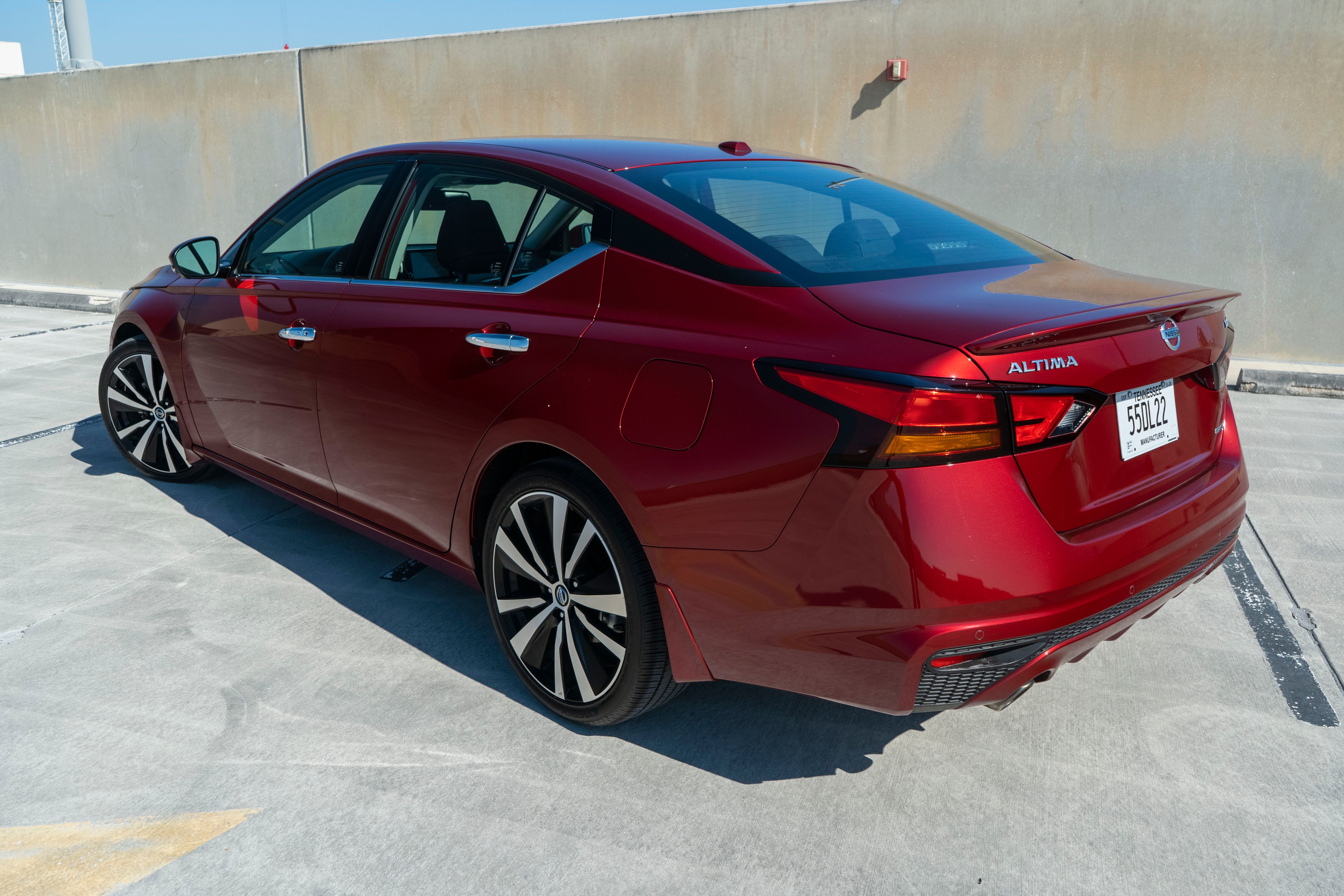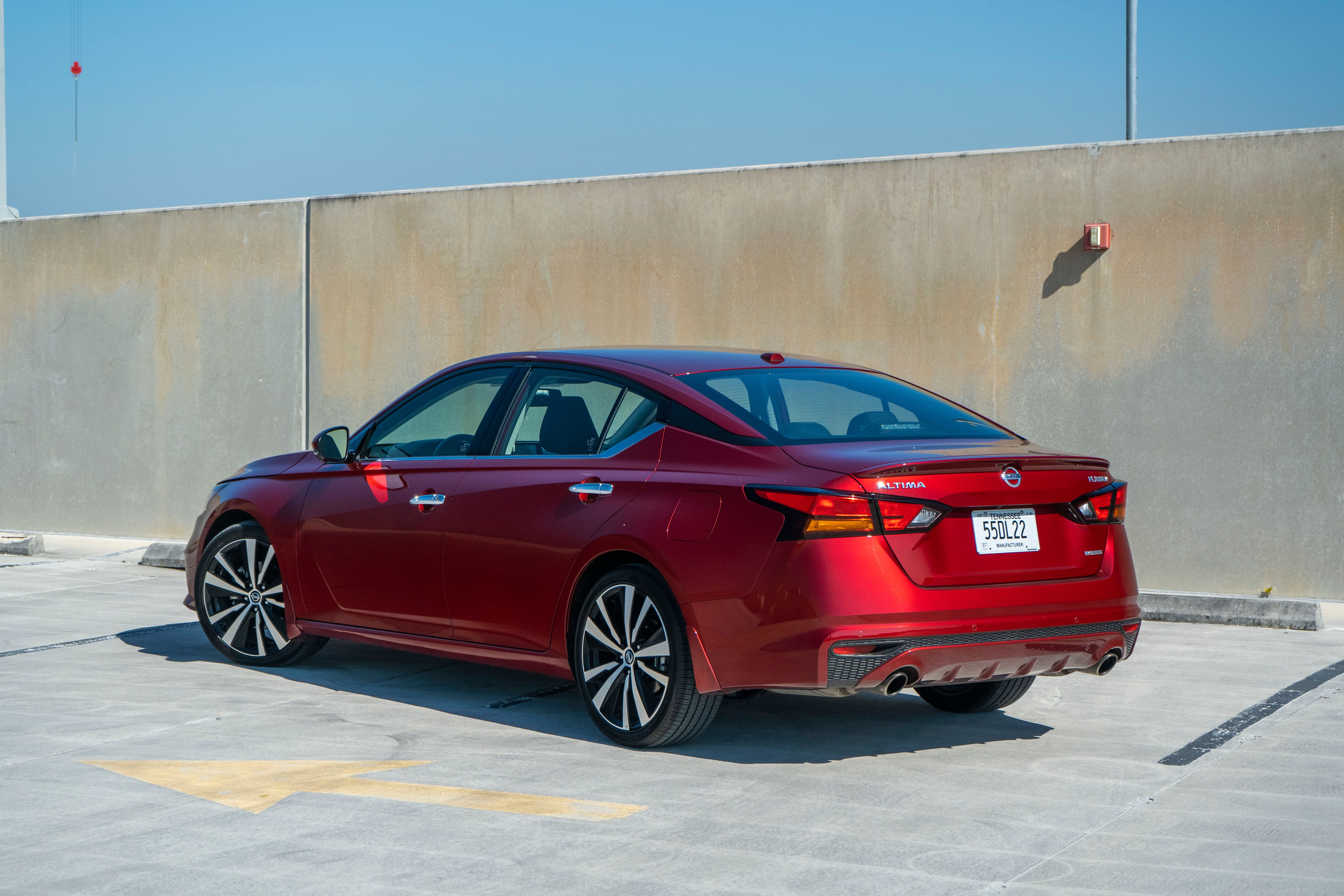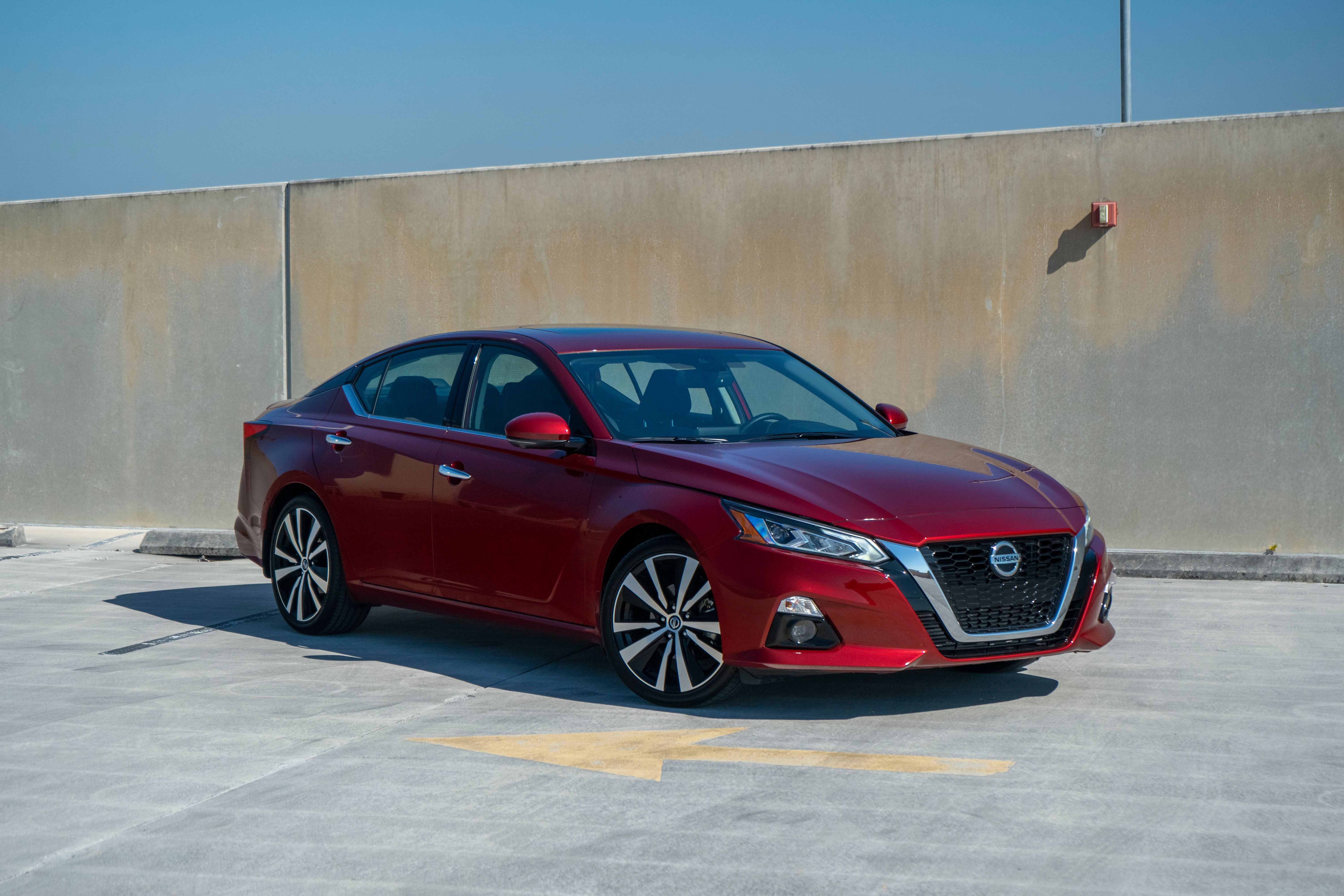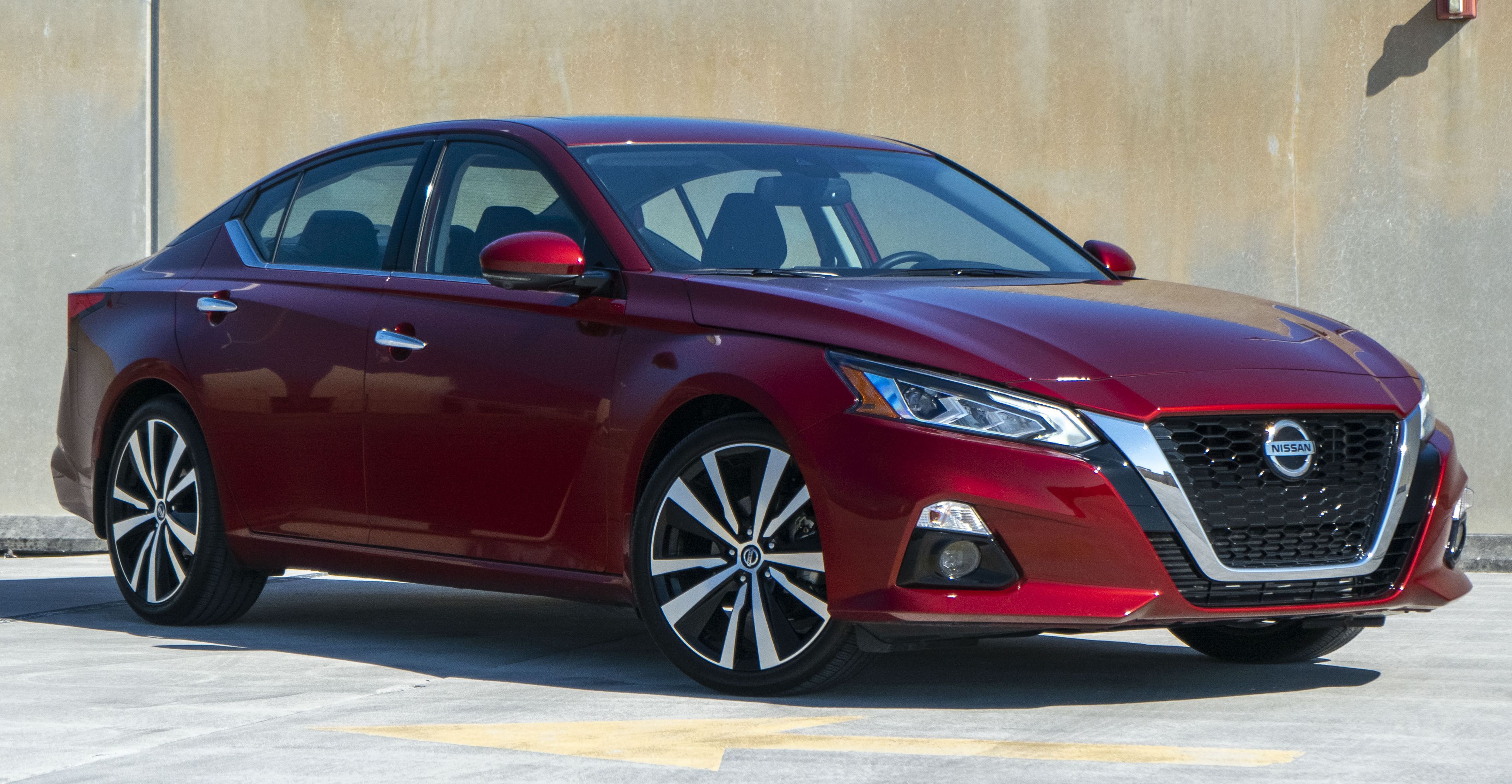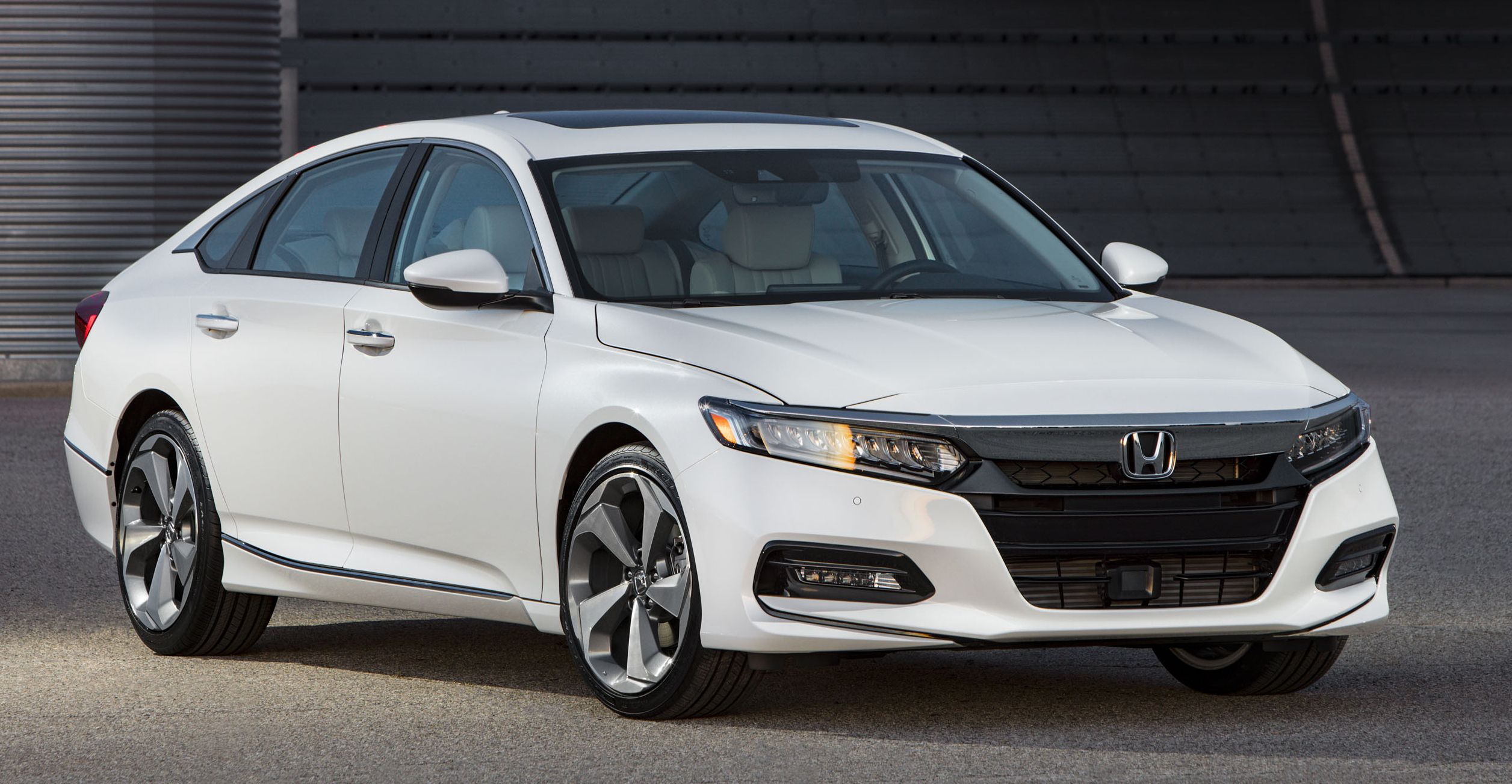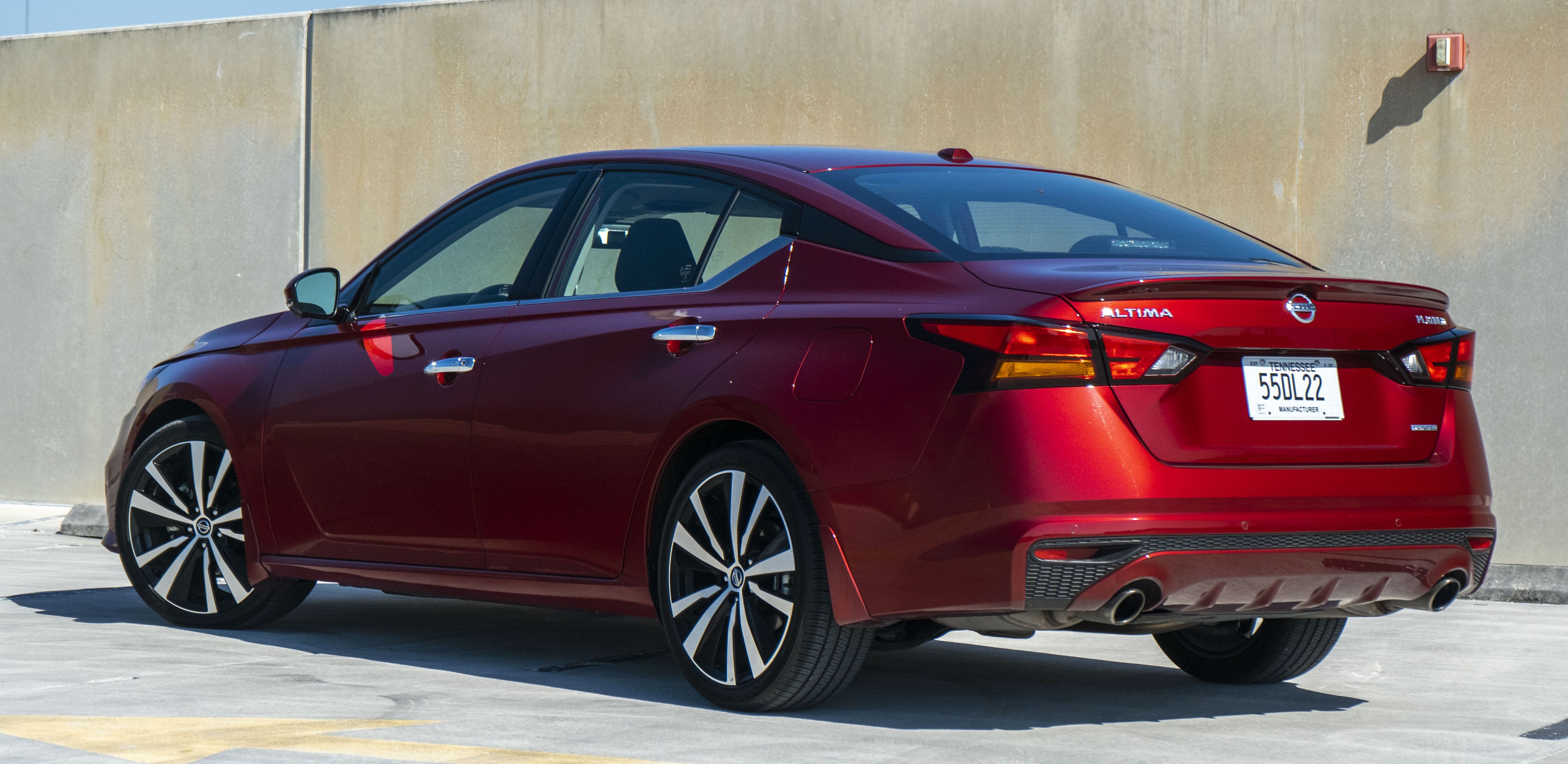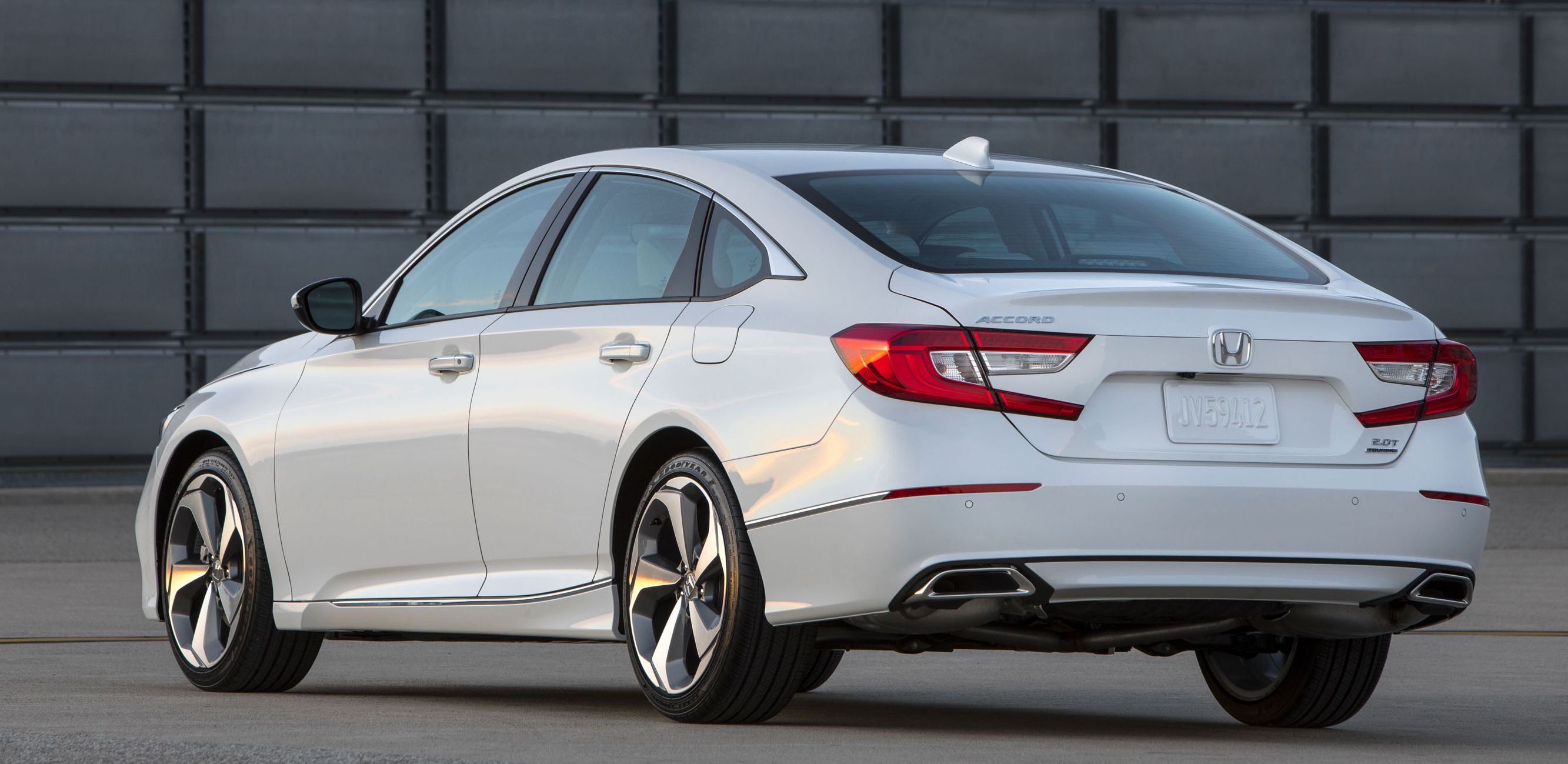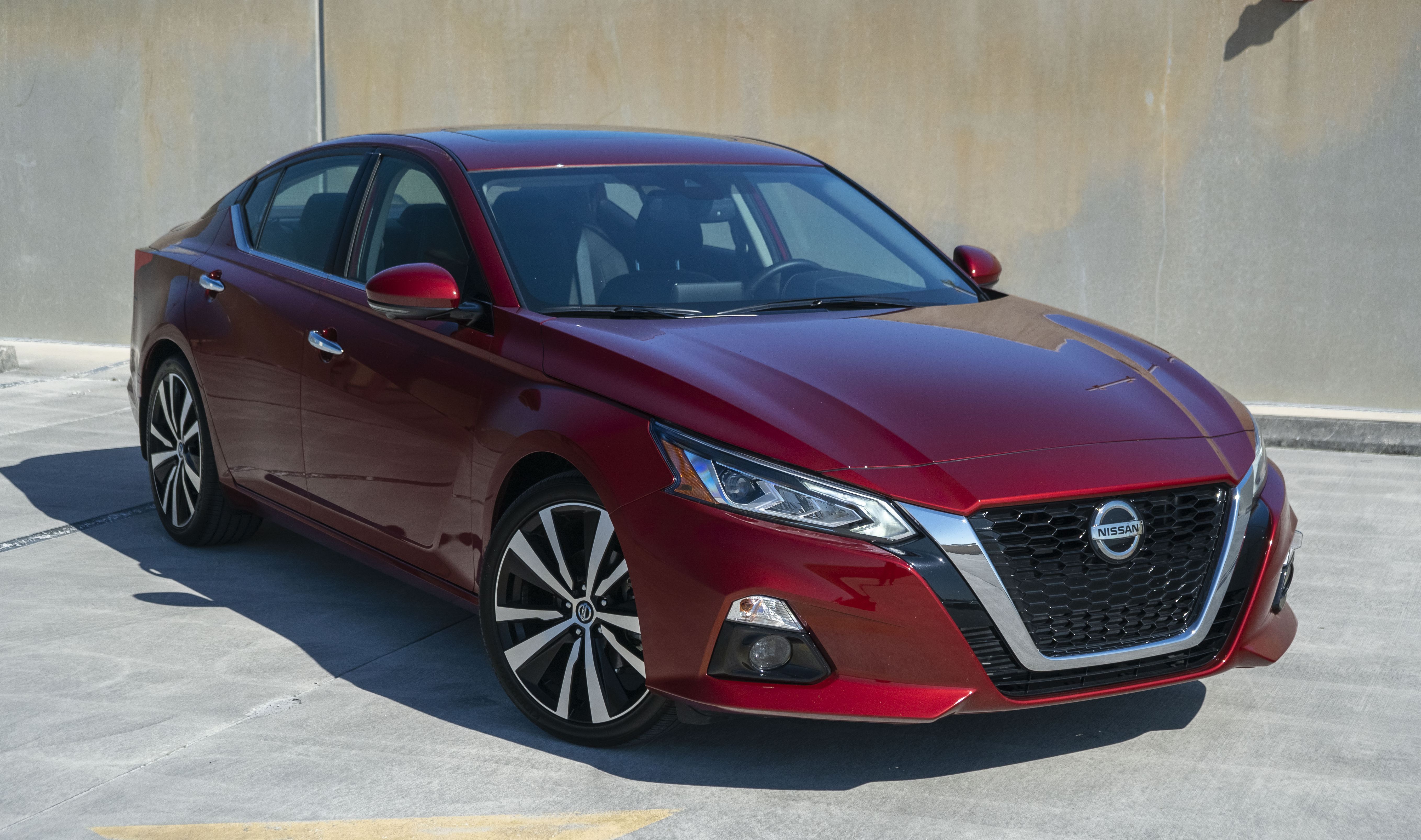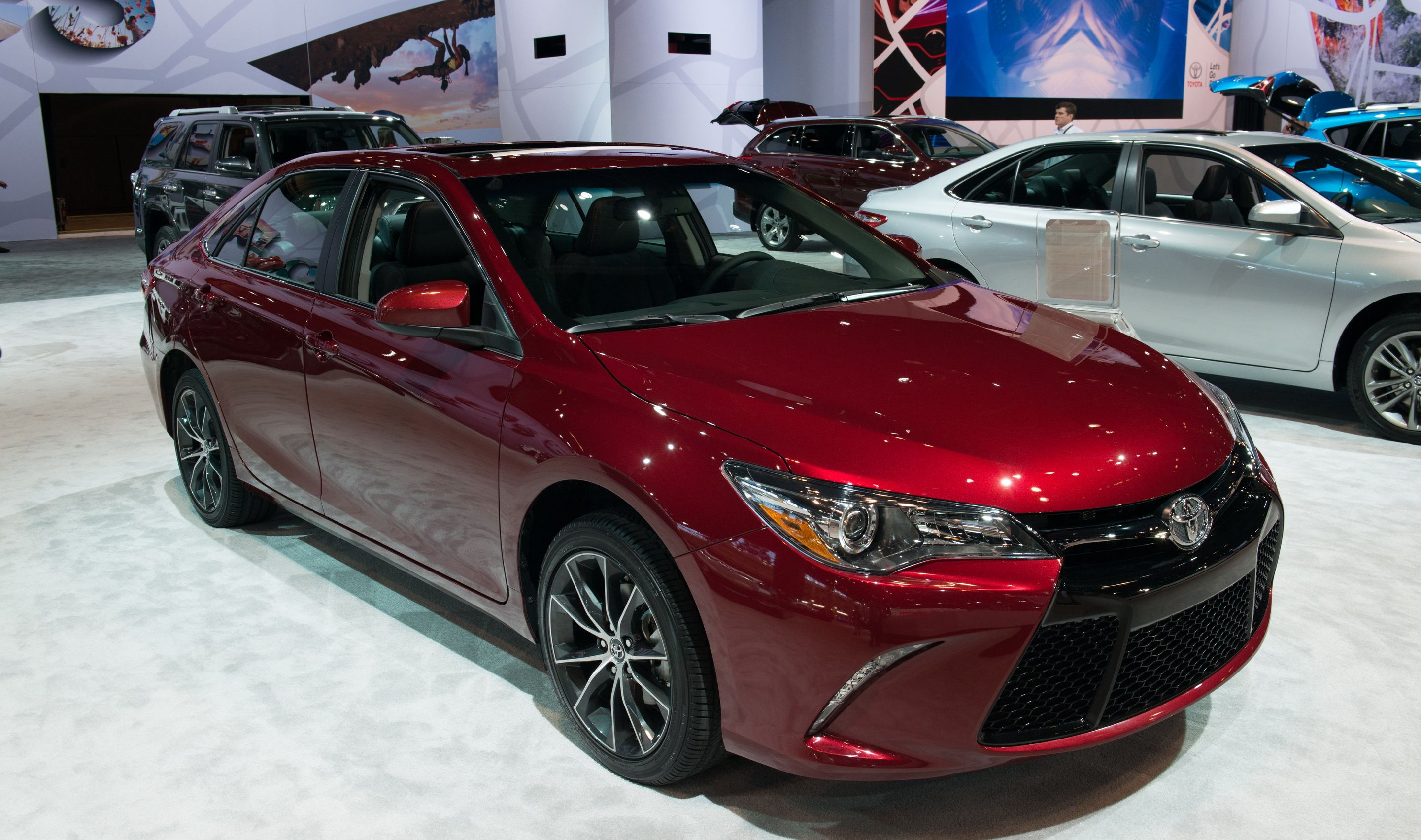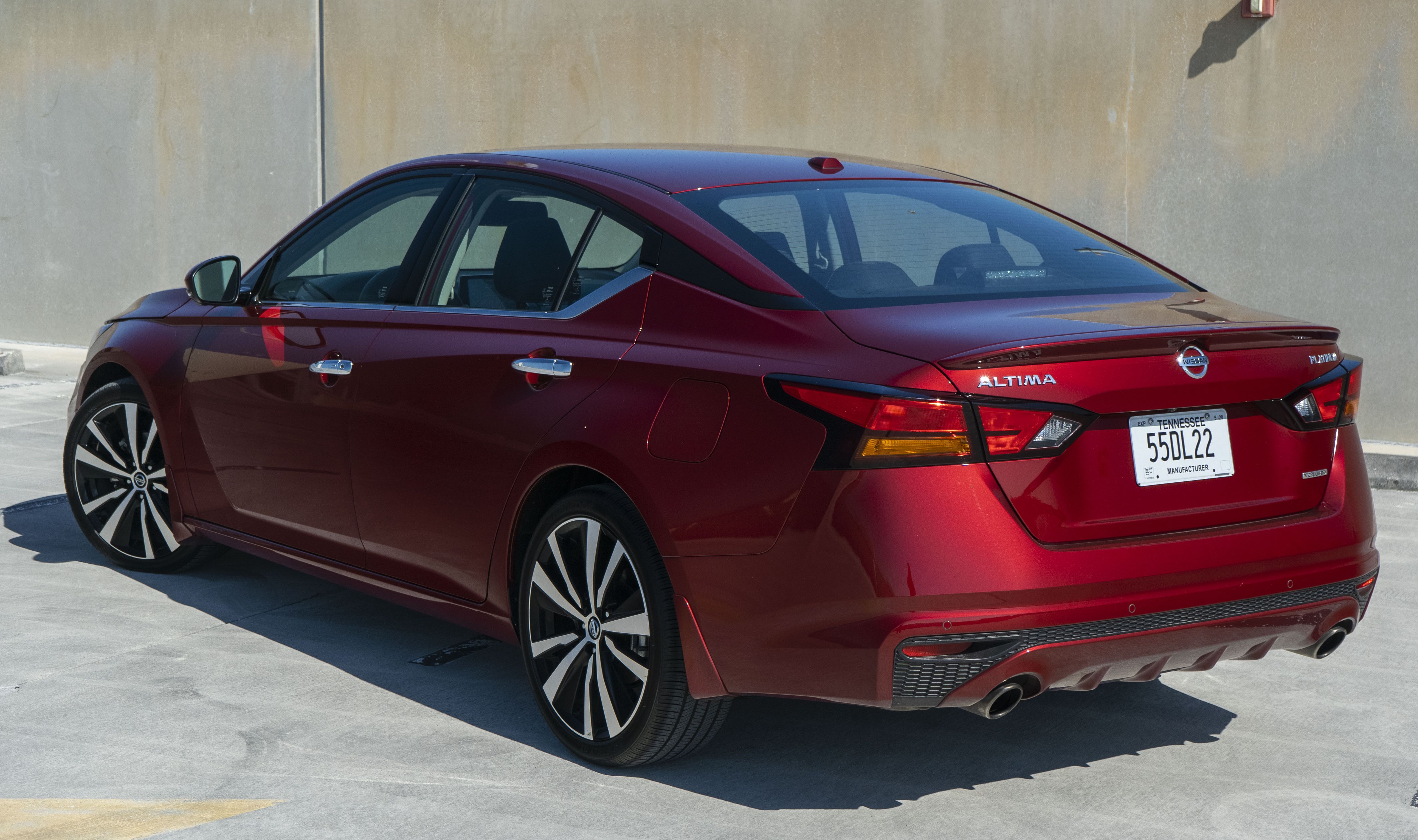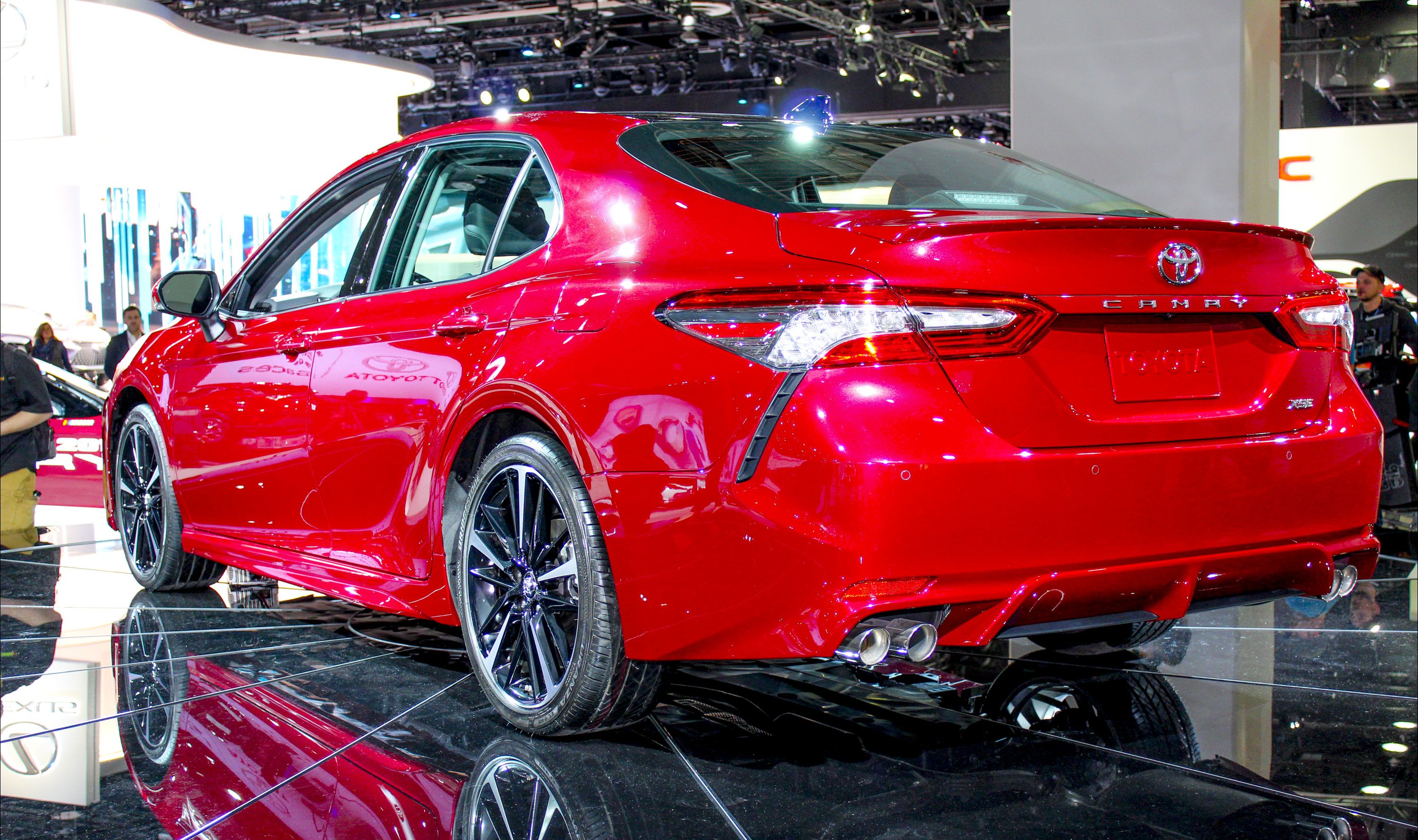For the past two years, Nissan has been selling about 210,000 Altimas, the mid-size sedan that's been lurking in the shadows behind its Japanese peers from Honda and Toyota since 2014. The introduction of the sixth-generation model in 2018 didn't turn the tides in Nissan's favor and we drove a range-topping Platinum with the 2.0-liter turbocharged engine to see why more people and businesses choose an Accord or a Camry over the Altima.
Fresh-faced and with a variety of clever features such as semi-autonomous driving functions, the Altima is Nissan's bid to regain the lead in the once-booming mid-size sedan segment. While people generally moved away from sedans in favor of MPVs and SUVs, the big players in the market still move in excess of 320,000 units a year of their best-selling models and Nissan hopes the Altima, a $24,000 proposition in its cheapest form, can keep the company's otherwise leaking boat from sinking.
2020 Nissan Altima - Driven
- Make: Array
- Model: 2020 Nissan Altima - Driven
- Engine/Motor: inline-4
- Horsepower: 248
- Torque: 273
- [do not use] Vehicle Model: Array
2020 Nissan Altima Driving Impressions
We think you won't come across an Altima owner who, exuding a sense of unwarranted pride, will tell you right away that he bought his Altima for the way it drives or that he's taken aback by the way the car surges when you floor it for this car was designed with families and company fleets in mind. It wasn't conceived to excel at giving your headrest a chance to take a mold of the back of your head when accelerating nor was it supposed to grip through corners like a four-door Golf GTI with a trunk. You go for an Altima if honest motoring is what you're after, with a little bit extra sprinkled on top.
That's why it'd be profoundly wrong to get behind the wheel of the sixth-gen Altima thinking it's a driver's car.
Oh, and one thing we must get out of the way quickly: if you want the turbo unit, you can only have it with FWD. Just the 188-horsepower 2.5-liter, naturally aspirated four-pot can send power to all four wheels through Nissan's "Intelligent AWD" that costs extra.
Even without AWD, the Altima is reassuring to drive, although the steering can be a bit laggy. Car & Driver says an AWD Altima has more cornering grip than the comparable 3 Series BMW which we can't vouch for but what we can say is that the Platinum we drove is comfortable even on the more uneven of surfaces despite the car being equipped with the 19-inch rims.
All the buzz around the new Altima surrounded the VC-Turbo, a clever unit freshly added to Nissan's lineup after being dropped first in the Infiniti QX50 that is about as efficient as the 2.5-liter N/A while offering some 50 extra horsepower.
While the power comes in progressively with an even delivery, you mustn't forget the Altima weighs over 3,400 pounds and this influences the way it goes. In short, if you've driven the fifth-gen model powered by the 188-horsepower engine, you'll be thankful for the added ponies. If not, and you're fresh out of a more powerful car, the Altima will still feel lackluster in the way it gets going although the CVT gearbox does its job and you really won't feel the need to row your own gears.
2020 Nissan Altima Exterior Design
The current-generation Nissan Altima was introduced in 2018 at the New York International Auto Show after being previewed by the Vmotion 2.0 Concept. Like the concept car, the Altima's U-shaped grille is larger and more aggressive than on the Maxima, with an added grille surrounding the edge of the chrome frame just adding to the grille frenzy.
Blacked-out panels separate the lower grille from the angled, aggressive front light clusters that collide with the chromed surround, ending with arrow-shaped day-time running lights. The fog lights and indicators are placed on either side of the lower bumper directly above protruding lips that come out of the bumper without actually lowering the edge of the bumper. The hood's grooves help make the nose seem like it plunges more than it actually does.
When viewed from the side, the Altima's swooping roofline is noticeably emphasized by the semi-blacked-out C-Pillar as Nissan fully embraced the 'floating roofline' trend which, while an awful design trick on most MPVs, looks good in this application. You could complement the chrome on the lower part of the window frame by adding a chromed bar to the rocker panels but our test car did not come with the $265 side moldings. Similar chromed bits are available for the rear bumper at $165 a protector.
The back end of the Ultima is, frankly speaking, uninspiring. By and large, the taillights don't differ too much from what we got on the post-facelift 2017/2018 Altima but the optional trunk lid spoiler worth $420 isn't a tacky addition as we've found out (and you can check it out for yourself in the picture gallery).
We'd go as far as saying it also outdoes Toyota's Camry in the looks department even as the Camry doesn't come with the God-forsaken bumper-sized grille of the Avalon. Props to Nissan, then!
How big is the 2020 Nissan Altima?
In short, the Altima is just as big as you'd expect a mid-size sedan to be. Crunching down the numbers, we found an insignificant difference of under an inch between the Camry, Accord, and Ultima length-wise (they both slightly exceed 192 inches or 16 feet) and all three are about 72-73 inches wide. They're also, remarkably, just as tall and the wheelbase of the Altima and the Accord are actually identical, 111.2 inches.
With the Kia Optima, Hyundai Sonata, and Mazda6 also just as big on the outside, it effectively comes down on which used the space better on the inside as there's nothing to choose from between most mid-size sedans in terms of exterior dimensions.
2020 Nissan Altima exterior dimensions
|
Length |
192.9 Inches |
|---|---|
|
Width |
72.9 Inches |
|
Height |
56.8 Inches |
|
Wheelbase |
111.2 Inches |
|
Front Track |
63.2 Inches |
|
Rear Track |
63.2 Inches |
2020 Nissan Altima Interior Design
If you get out of the old Altima and into the new one, you'll notice a change for the better in the way the cabin looks but, otherwise, the 2020 Altima isn't a frontrunner when it comes to particularly modern interiors. However, everything you'd hope to find inside, especially in our upper-trim Platinum model, is there.
The first thing you'll see is that Nissan added some wood grain finish on the dash in conjunction with some piano black surfacing and leather on the seats and central armrest.
The seats are comfortable so your back won't be aching if you take your Altima across the country for the holidays and Nissan has kept most of the buttons on the dash with physical operation and we think this is a good thing. VW's sci-fi Golf cabin may look nice in the pictures but we're still a while away from fully sorting out dashes with no buttons or knobs.
As such, you'll find yourself rotating some knobs to set the temperature of the climate control system and you'll press buttons down below for the fan speed and direction. The infotainment screen too has physical buttons as well as two knobs on either side to get you through the menus and there are more buttons on the semi-circular steering wheel that we do like.
While fit and finish isn't quite premium, it's a step up from what you'd find in older Altimas and, more so, what you'd find on a base trim model due to the use of better materials throughout. The exterior rear-view mirrors have a memory function. On top of that, the wheel and seats are heated.
Is The 2020 Nissan Altima Spacious?
If we take into account how well you feel as a front-row passenger then yes, we can say there's room aplenty inside the Altima but the back seat is slightly cramped. Taking a look at the number, the Nissan and its rivals from Honda and Toyota all offer just as much room in the front but the Altima offers just 36.7 inches of headroom in the back versus 38 inches in the back of a Camry. Legroom is also a bit down in the back of an Altima at just about 35 inches compared to 38 inches in the Camry and 40.4 inches respectively in the back of an Accord.
2020 Nissan Altima interior dimensions
|
Front Headroom |
38 Inches |
|---|---|
|
Front Shoulder Room |
58.2 Inches |
|
Front Hip Room |
54.7 Inches |
|
Front Leg Room |
43.8 Inches |
|
Rear Headroom |
36.7 Inches |
|
Rear Shoulder Room |
57.1 Inches |
|
Rear Hip Room |
54.5 Inches |
|
Rear Leg Room |
35.2 Inches |
2020 Nissan Altima Technology
The Altima doesn't boast with class-leading tech but all the bases are just about covered in a Platinum model. You get, for instance, the 360-degree cameras that display an image of your car and its surroundings from above on the central infotainment screen. The issue here is that the eight-inch display's lacking in resolution and that's hard to forgive in the year 2020.
Other noteworthy features are the remote engine start with intelligent climate control that warms up the car on the inside before you've jumped inside. Meanwhile, Nissan's 'NissanConnect' infotainment system has been bolstered by the addition of Apple CarPlay and Android Auto standard (on the Platinum), as well as Siri Eyes Free, Bluetooth streaming audio, and Hands-free Text Messaging Assistant with voice recognition (also works with Nissan's built-in navigation system).
We also enjoyed the sound coming from the Altima's Bose nine-speaker sound system whose clean sound was enhanced by the active noise cancellation system. What isn't that fancy is that Nissan only offers two USB ports and two USB-C ports and one auxiliary jack - more could work. Having said that, the Altima's infotainment system can be upgraded with a dealer-installed 4G LTE mobile hotspot.
2020 Nissan Altima Safety Equipment
As far as passive and active safety features are concerned, Nissan's crammed just about all it can offer in the range-topping Altima, as you'd expect. and}. Mandatory forward-collision warning and automated emergency braking is there as well as blind-spot monitoring, high-beam assist, rear cross-traffic alert, and lane-keeping assist is also available as standard equipment with the adaptive cruise control being bolstered by the presence of Nissan's semi-autonomous drive mode, ProPilot Assist that can keep your Altima in its lane unless it rains or snows heavily.
2020 Nissan Altima Cargo Room
The Altima is sandwiched by its Japanese peers from Honda and Toyota when it comes to cargo space.
With 60/40-split fold-down rear seatbacks, the Altima can be made even more practical and the presence of LATCH anchors in full view means you can throw in as many as three child seats (forward-facing or rearward-facing, it doesn't matter, there is enough room) in the back.
2020 Nissan Altima Drivetrain And Chassis
The optional 2.0-liter, turbocharged engine is the most important bit underneath the skin of the Altima. While base trim models come with the lackluster 2.5-liter, 16-valve, DOHC inline-four that puts out just 188 horsepower, the 2.0-liter turbo is good for as much as 248 horsepower if you feed it with high-octane gas. Nissan calls this mill the "VC-Turbo" as it features the quite innovative variable compression technology.
2020 Nissan Altima drivetrain specifications
|
Engine |
2.0-Liter Turbo-Four |
|---|---|
|
Horsepower |
248 HP |
|
Torque |
280 LB-FT |
|
Transmission |
CVT |
|
Driveline |
FWD |
|
Fuel |
Premium |
|
Steering |
Electric |
|
Suspension |
Four-Wheel Independent |
|
Tires |
235/40R19 |
|
Curb Weight |
3436 LBS |
|
Fuel Economy |
25/34/29 |
Variable compression means that, by altering the piston's stroke, the compression ratio can be changed to give the car more power when needed. A linkage inside the engine deals with the millimetric change that happens in real-time. As something you'll find helpful when putting the pedal to the metal, you'll be happy to hear the Altima is quicker than its nearest competitors accelerating down the highway although, as we've mentioned, it isn't a speed king overall.
Suspension is independent at all four corners with disc brakes hiding behind each of those four 19-inch rims. Car & Driver managed to get the Altima to stop from 70 mph in just 170 feet, comparable to what an Accord or a Camry can muster. The CVT transmission is smooth but not particularly quick and, weirdly enough, the upper-trim Platinum models don't come with flappy paddles behind the wheel which are available on SR models that, otherwise, feature the exact same transmission.
2020 Nissan Altima Fuel Economy
The move away from naturally aspirated engines and onto turbos is arguably universal in the automotive world nowadays as a turbo develops more power and is more economical than a comparable N/A mill. Point in case, this 2.0-liter, DOHC, 16-valve inline-four offered in the Platinum Altima (also available with the SR trim level). It puts out 248 horsepower (or 236 if fueled with 87-octane fuel) and that's only 22 horsepower down on the 270 horsepower available from the now-retired 3.5-liter V-6 which, in turn, delivered less torque at 251 pound-feet versus as much as 273 pound-feet with the turbo.
That's better than both the Camry XSE and the Accord Touring despite the fact that one comes with a 3.5-liter V-6 (Camry) and the other with a 2.0-liter turbo. Having said that, the 2.0-liter turbo still isn't quite as economical as the 2.5-liter N/A which gets up to 28 mpg city and 39 mpg highway. In an economy run down the highway, the VC-Turbo can get near the official highway figures of the 2.5-liter N/A but the Accord and Camry better it with the latter getting 45 mpg if you're really easy on your throttle and steering inputs.
How fast is the 2020 Nissan Altima?
The fastest of the old, 3.5-liter Altimas could just about dip below the 6.0-second mark in the 0-60 mph acceleration test and the sixth-gen model we drove is just as fast with an official 0-60 time of 5.9 seconds. What's more impressive, however, is how it pulls on the highway, the Altima needing just 4.1 seconds to go from 50 to 70 mph on the highway, faster than both a similar Accord and Camry. To put it in some sort of context, the 188 horsepower non-turbocharged mill won't get you to 60 mph from a standstill before at least seven seconds have elapsed.
Away from the figures, the Altima isn't a particularly fast car. Sure, the engine does its job in making the 3,400-pound sedan feel quicker than its predecessor but not by much. We think its performance is satisfactory for a family car but that's about it.
2020 Nissan Altima Pricing
The base model Altima S costs $24,100 before taxes with the AWD version an extra $1,350. Sadly, you can't have AWD with the turbo but, if you still want traction to all four wheels and the amenities offered by the Platinum trim level, you can pick the bigger N/A engine, this combo setting you back $33,530 while our car had an MSRP of $35,180 and an as-tasted price of almost $37,000.
The Accord is similarly priced with the Touring's $36,250 sticker price while the Camry is $35,130 if you pick the XSE trim level with the 3.5-liter V-6. Pair the XSE with a smaller engine (aka less power) and the price goes down to $30,830 with taxes. The sporty Camry TRD is also cheaper than the Platinum VC-Turbo at $31,995 without optional extras.
2020 Nissan Altima Competition
2020 Honda Accord
|
|
ids=899791,899792 |
no_overlay=false |
before_label=Nissan Altima |
after_label=Honda Accord> |
Unlike both the Toyota and the Nissan, Honda still offers the Accord with a six-speed manual and we like that transmission in combination with any engine but especially with the range-topping 2.0-liter turbo. Having said that, the 10-speed automatic is incredibly smooth and it's best suited if you want the hybrid version that comes with a four-cylinder engine and two electric motors.
Inside, an Accord Touring will come with an eight-inch infotainment display in the middle of what is a slightly dated but, otherwise, well laid out dashboard with good fit/finish. The Touring boasts with heated and cooled leather front seats, heated rear seats, and a head-up display as standard features. The 10-speaker audio system beats the Nissan's by one speaker and it's also slightly more powerful with its 450-watt amplifier. Storage space is plentiful in the back but, inside, there aren't that many storage spaces compared to the more compact Civic.
|
|
ids=899793,899794 |
no_overlay=false |
before_label=Nissan Altima |
after_label=Honda Accord> |
Lane-keeping assist, automated emergency braking, and adaptive cruise control are standard in most Accords while the Touring also sports blind-spot monitoring and rear cross-traffic alert that earned it a Top Safety Pick from the IIHS. At the end of the day, the Accord presents itself with few flaws. We think it drives better than the Altima although outward visibility is roughly as bad but, as a package, the Accord is one of if not the best mid-size sedan out there and Nissan's still got some catching-up to do.
Nissan Altima vs Honda Accord
|
Nissan Altima Platinum |
Honda Accord Touring |
Engine |
2.0-Liter Turbo-Four |
2.0-Liter Turbo-Four |
|
|---|---|---|---|---|---|
|
Horsepower |
248 HP |
252 HP |
|||
|
Torque |
280 LB-FT |
273 LB-FT |
|||
|
Transmission |
CVT |
10AT |
|||
|
Driveline |
FWD |
FWD |
|||
|
Fuel |
Premium |
Premium |
|||
|
Steering |
Electric |
Electric |
|||
|
Suspension |
Four-Wheel Independent |
Four-Wheel Independent |
|||
|
Tires |
235/40R19 |
235/40R19 |
|||
|
Curb Weight |
3436 LBS |
3428 LBS |
|||
|
Fuel Economy |
25/34/29 |
22/32/26 |
Read our full review on the 2020 Honda Accord
2020 Toyota Camry
|
|
ids=899796,899797 |
no_overlay=false |
before_label=Nissan Altima |
after_label=Toyota Camry> |
The latest Camry is, not surprisingly, the greatest one and there's not much left to be desired in terms of equipment. The XSE trim level delivers when it comes to tech with stuff like forward-collision warning and automated emergency braking, lane-departure warning and lane-keeping assist, and adaptive cruise control all standard. As a result, the IIHS awarded the Camry with a Top Safety Pick+ for 2018 while the Nissan Altima only received the Top Safety Pick rating.
The naturally aspirated V-6 under the hood of the overly aggressive Camry puts out 301 horsepower and 267 pound-feet of torque that can be sent to either the front wheels or all four wheels via an eight-speed automatic transmission. AWD is a $1,400 option. The powerful engine (for this segment) is paired with a well-balanced chassis and responsive steering that isn't too light. If you wish for an even stiffer, better-handling Camry, the TRD should be your choice as it comes with the V-6, is almost $4,000 cheaper than the XSE, and features retuned dampers with stiffer springs, beefier anti-roll bars, additional chassis bracing, bigger brakes, and TRD's own exhaust system.
|
|
ids=899798,899799 |
no_overlay=false |
before_label=Nissan Altima |
after_label=Toyota Camry> |
The catch? There's no leather inside the Camry TRD nor does it come with the myriad of safety features available from the get-go in the XSE. Talking about its features, the Camry is equipped with the Entune 3.0 infotainment system on all trim levels and Apple CarPlay and Android Auto are standard too. The cabin has a clear up-market feel in the XSE unlike the cheap-looking interior fit/finish of the base model. So, if you go for the Camry, you'll have the best Camry Toyota's ever did, a car that beat its own official highway mpg rating in C&D's economy run and, unlike the Nissan, a hybrid version is available - as well as AWD on the XSE trim level.
Nissan Altima Vs Toyota Camry
|
Nissan Altima Platinum |
Toyota Camry XSE |
Engine |
2.0-Liter Turbo-Four |
3.5-Liter V-6 |
|
|---|---|---|---|---|---|
|
Horsepower |
248 HP |
301 HP |
|||
|
Torque |
280 LB-FT |
267 LB-FT |
|||
|
Transmission |
CVT |
8AT |
|||
|
Driveline |
FWD |
FWD |
|||
|
Fuel |
Premium |
Premium |
|||
|
Steering |
Electric |
Electric |
|||
|
Suspension |
Four-Wheel Independent |
Four-Wheel Independent |
|||
|
Tires |
235/40R19 |
235/40R19 |
|||
|
Curb Weight |
3436 LBS |
3340 LBS |
|||
|
Fuel Economy |
25/34/29 |
22/33/26 |
Read our full review on the 2020 Toyota Camry
Final Thoughts
The 2020 Nissan Altima is a step in the right direction as Nissan worked to iron out some of the flaws of the fifth-gen model. While it's nowhere near a revolution, the Altima is an enticing option in a very competitive sector (despite the massive sales drop of the past 5-10 years) and, frankly, we'd like to try out that 2.0-liter VC-Turbo with an AWD setup which isn't possible for the time being.

